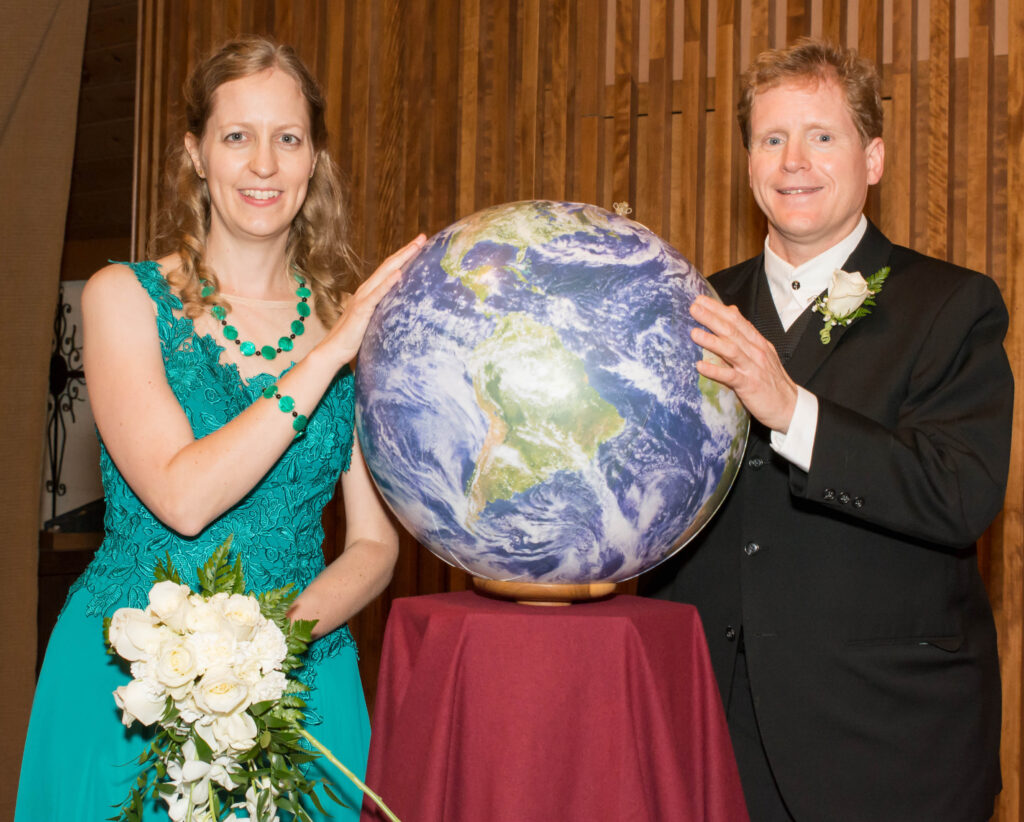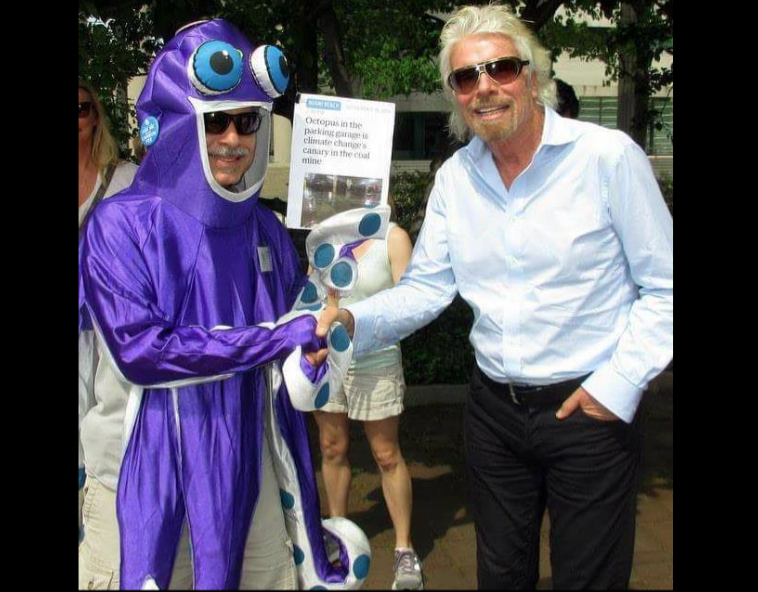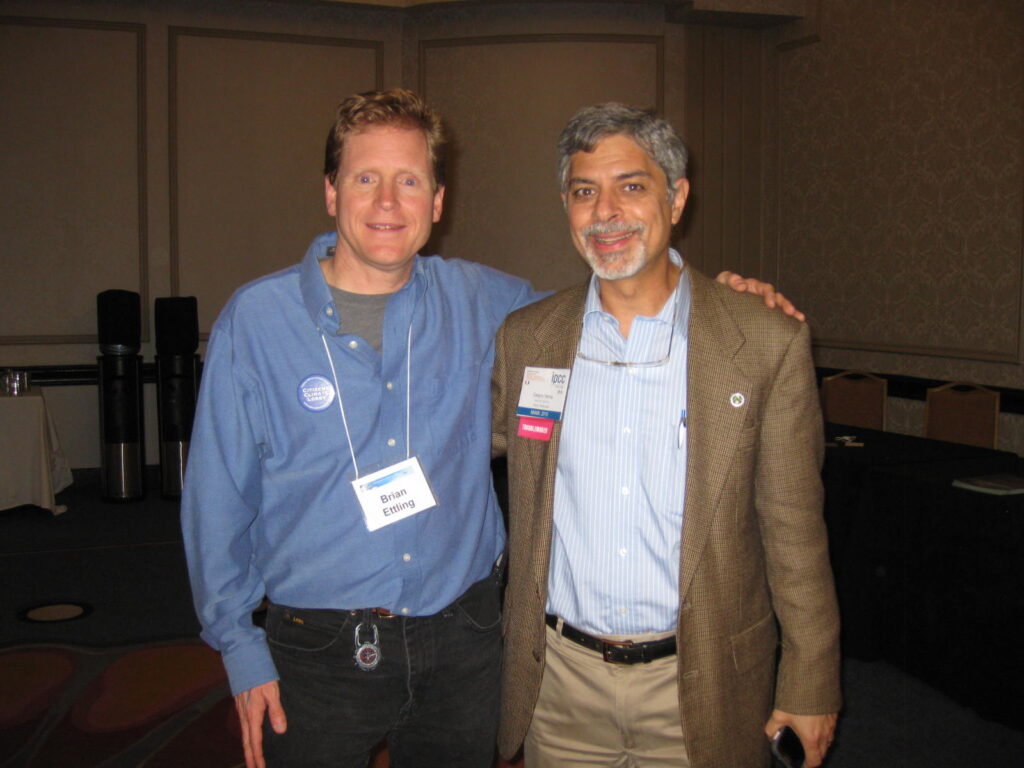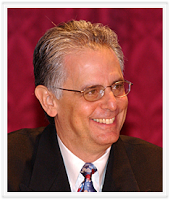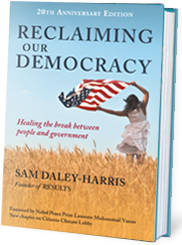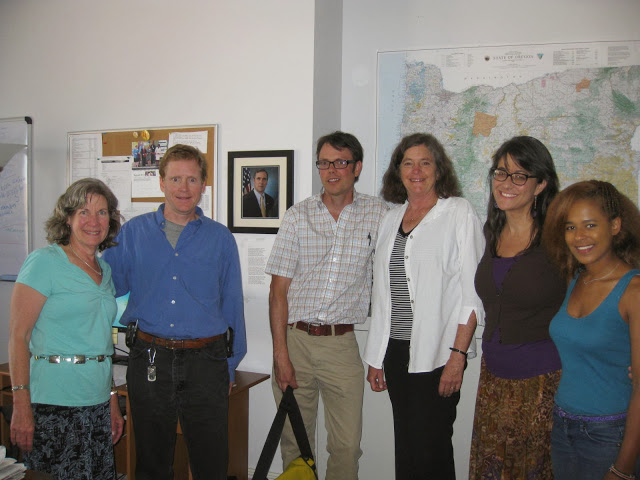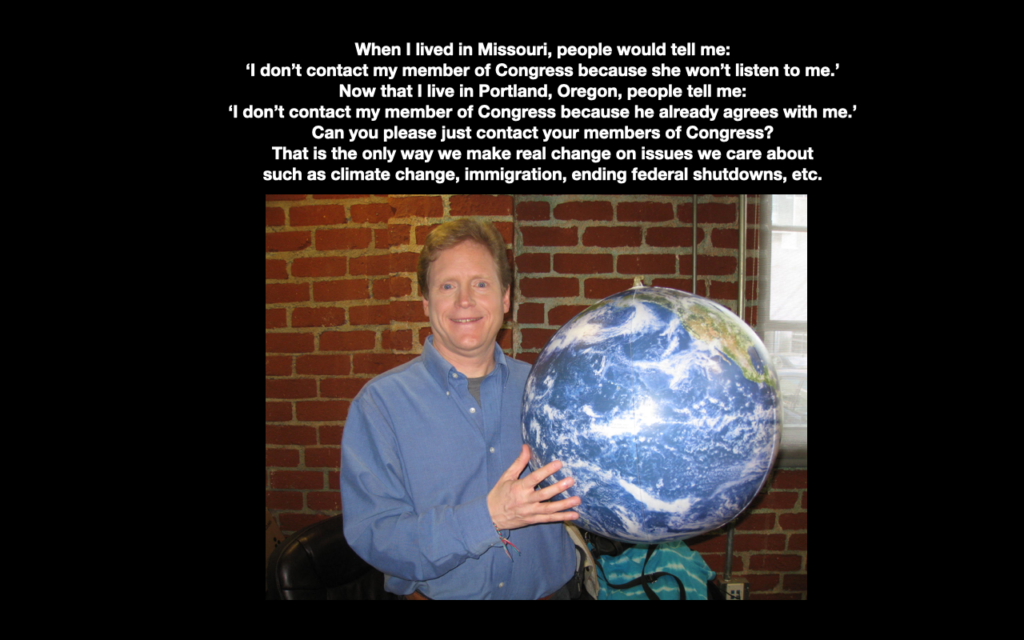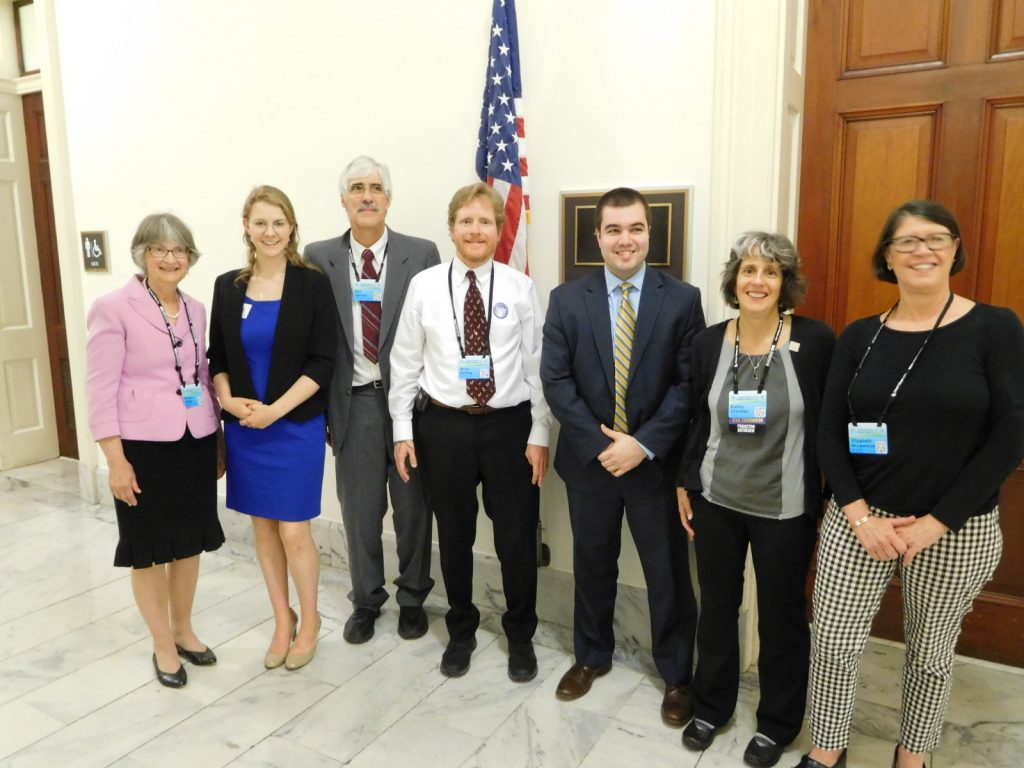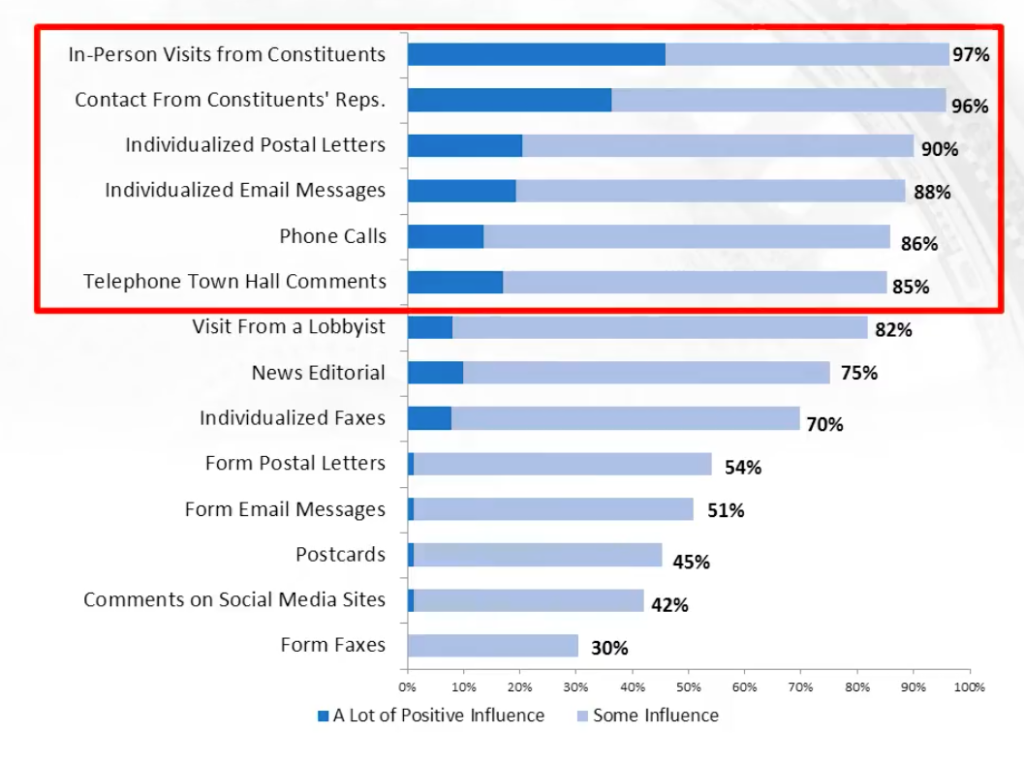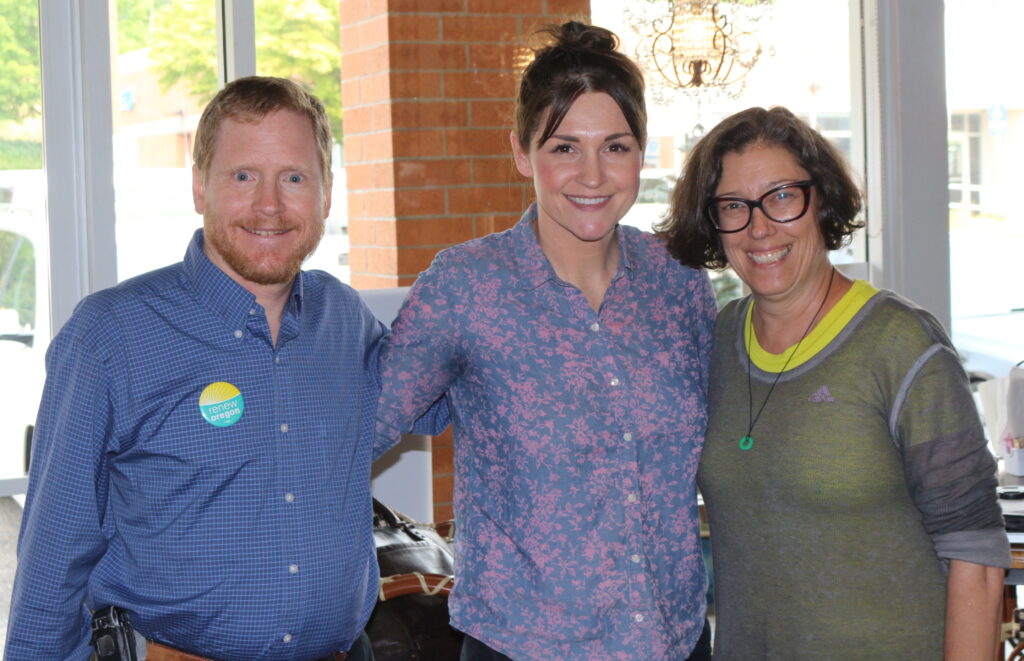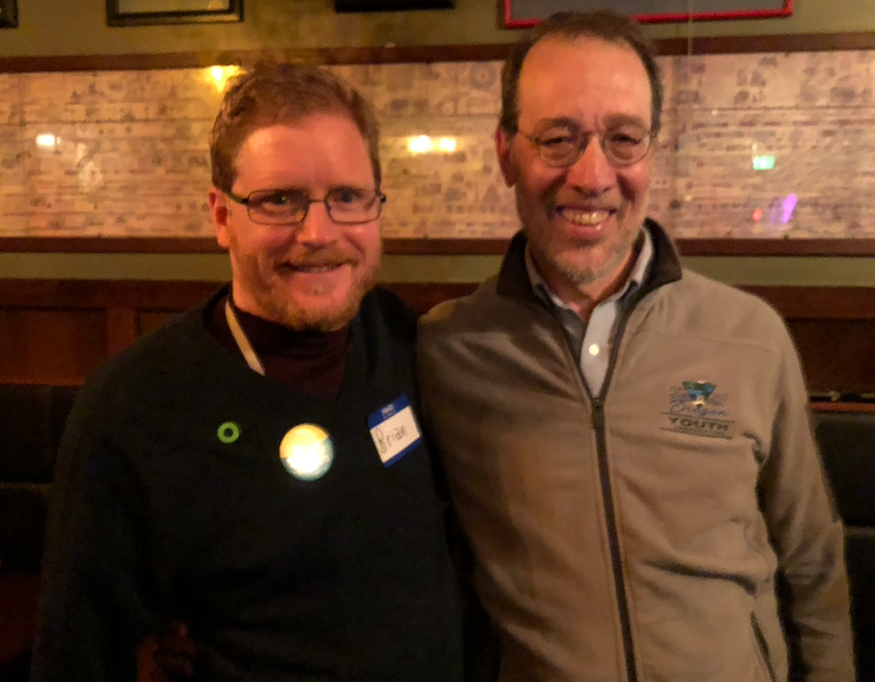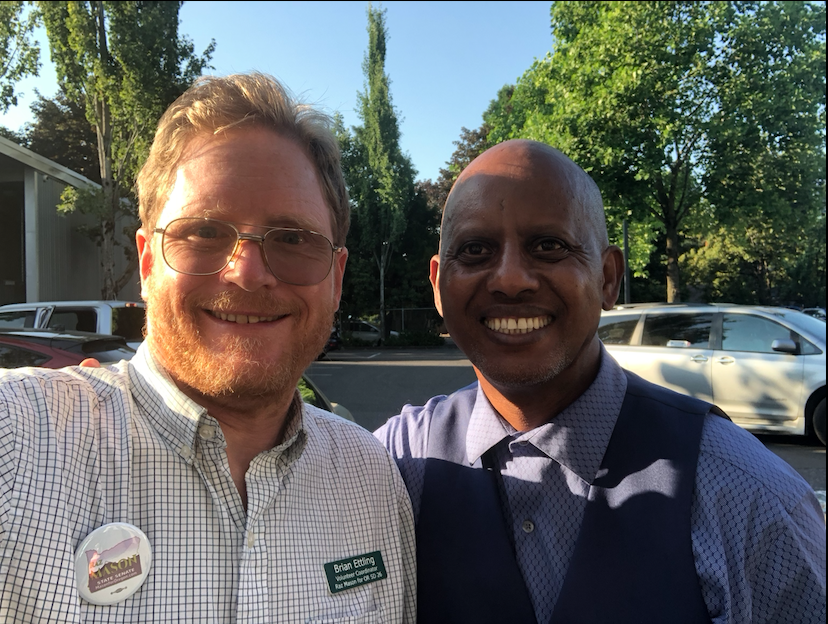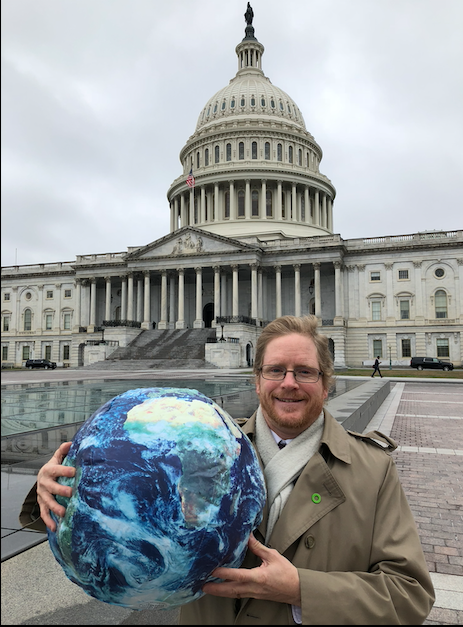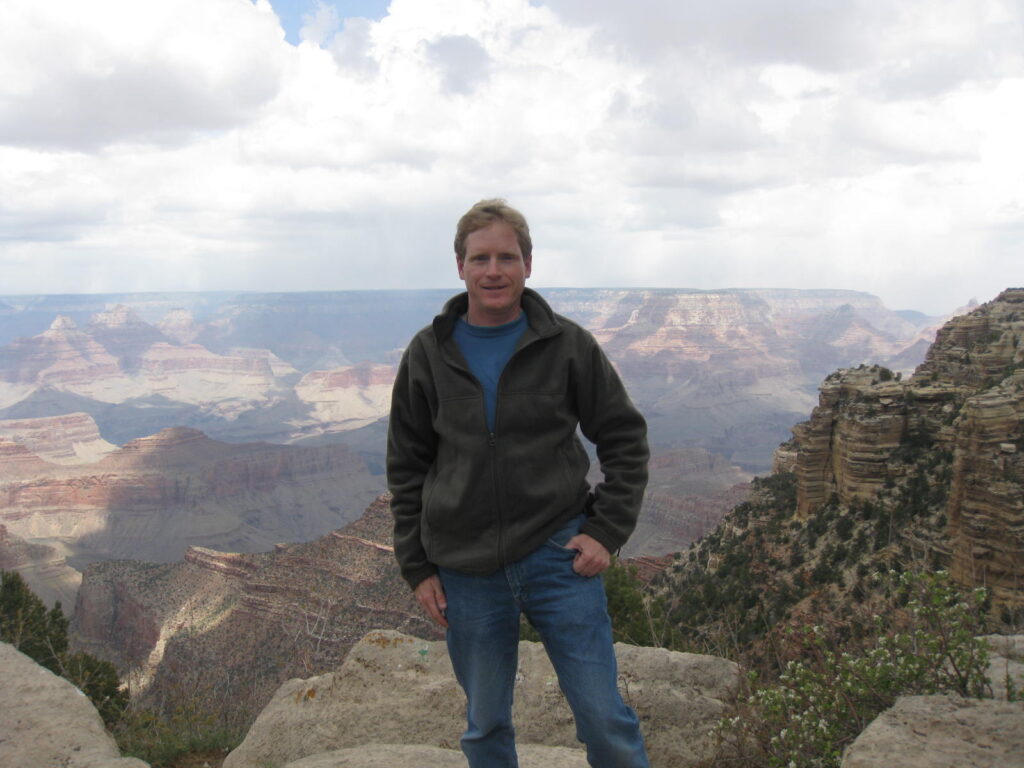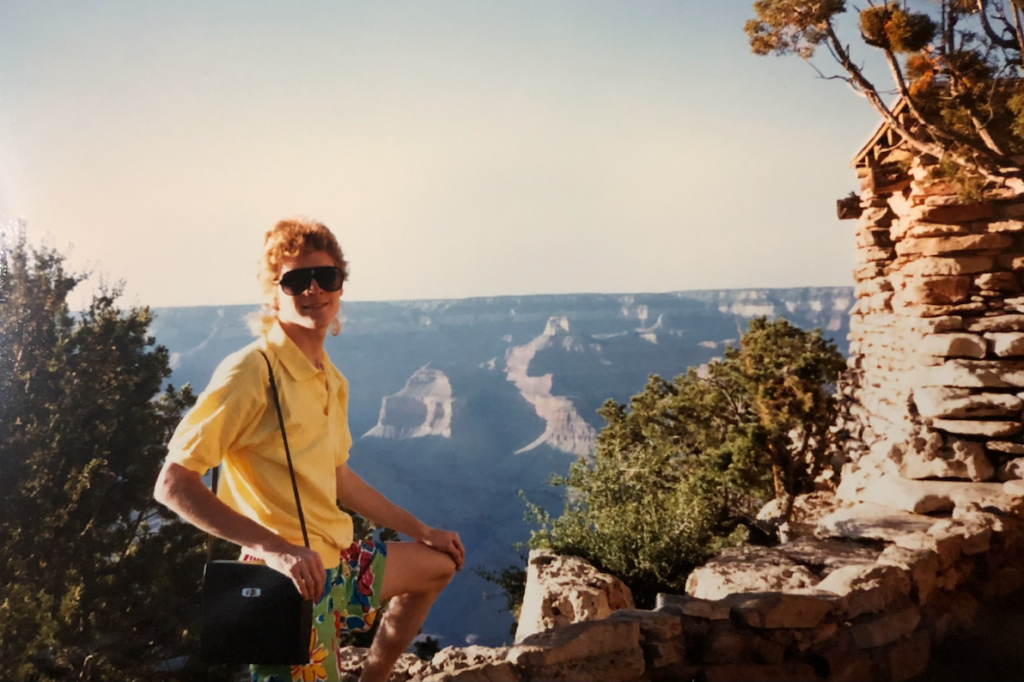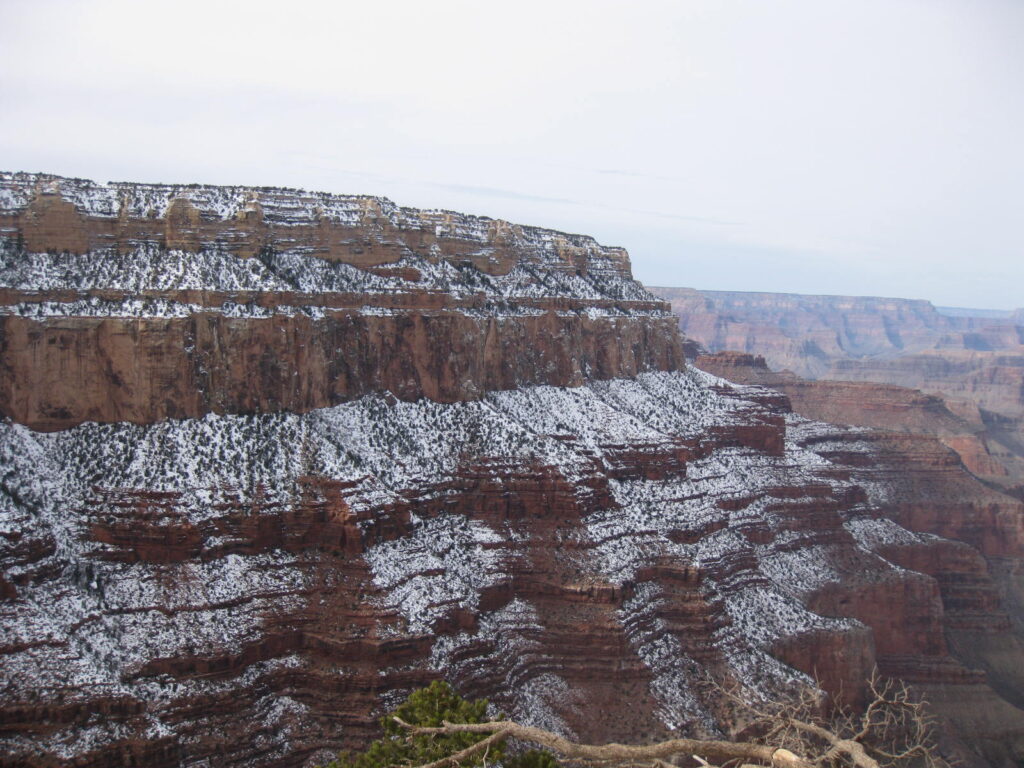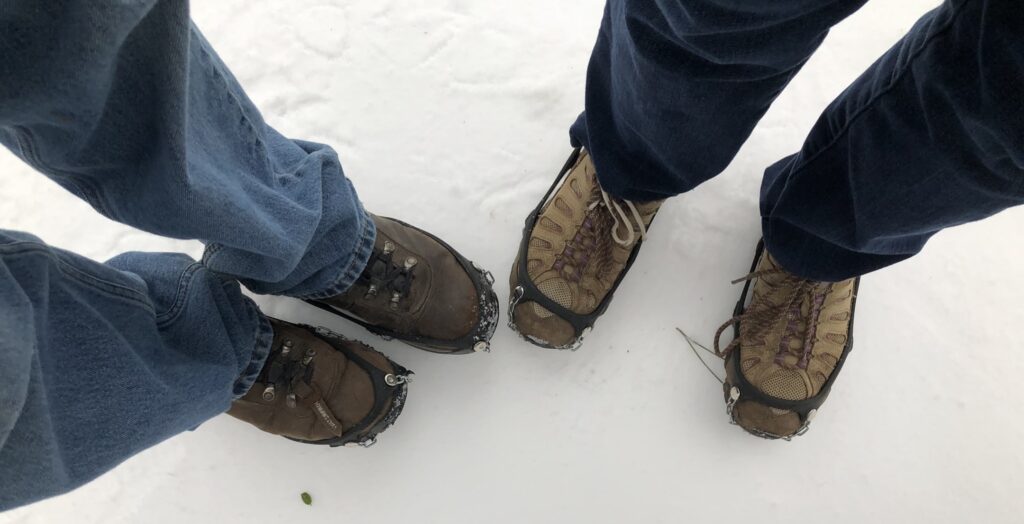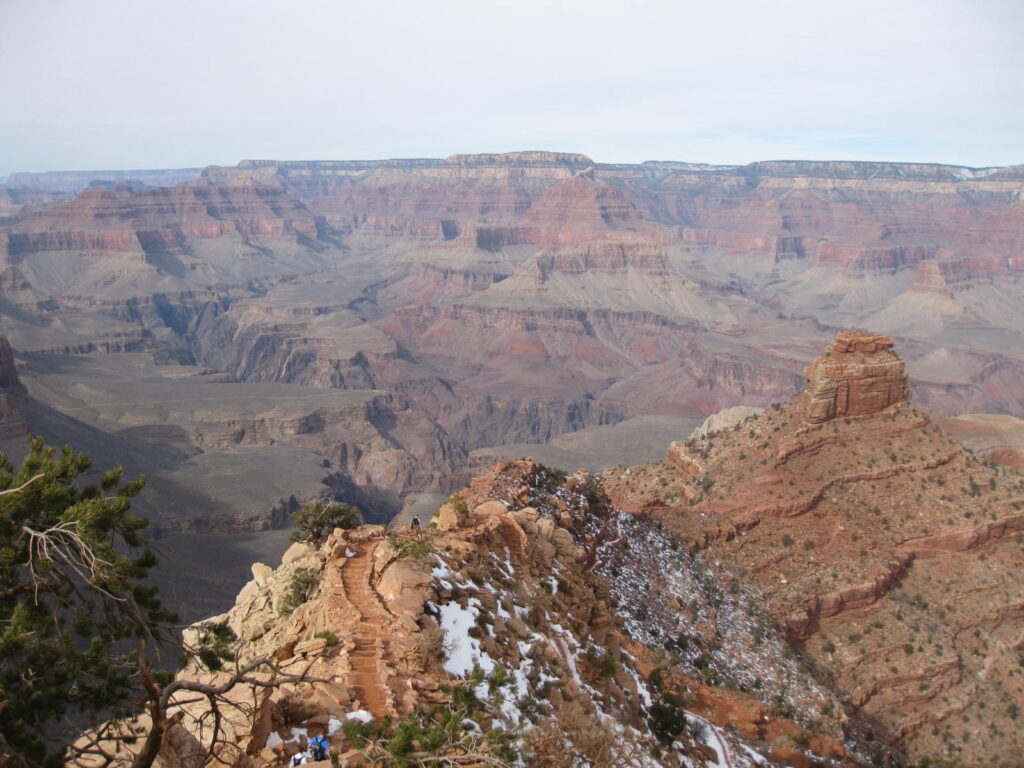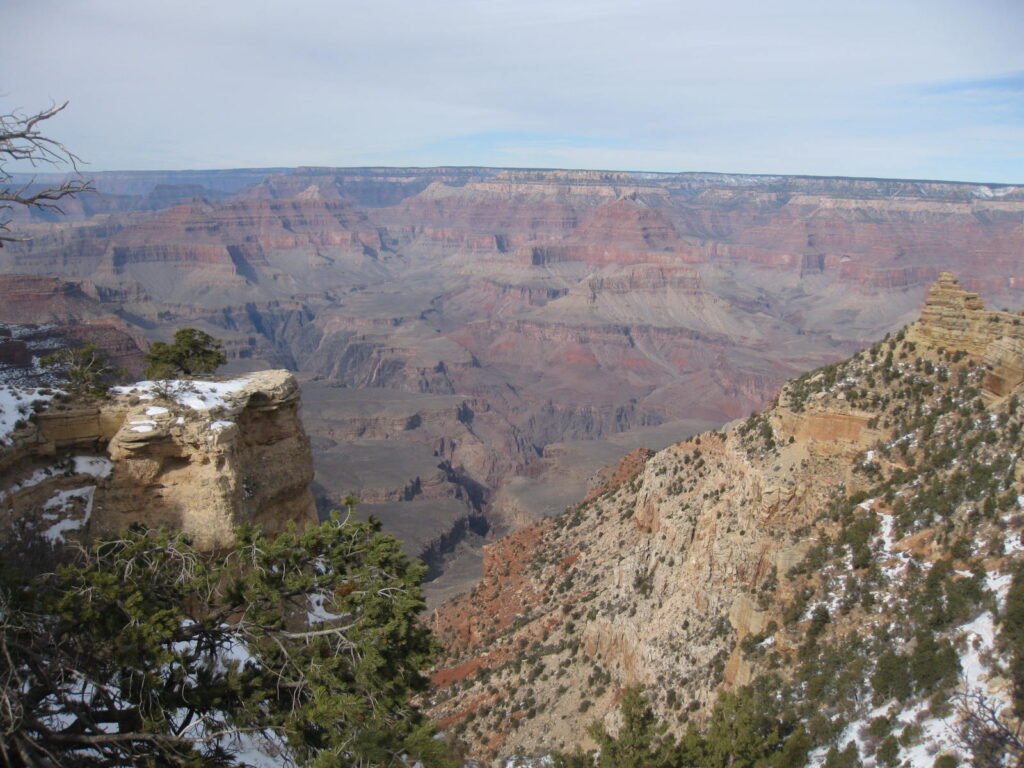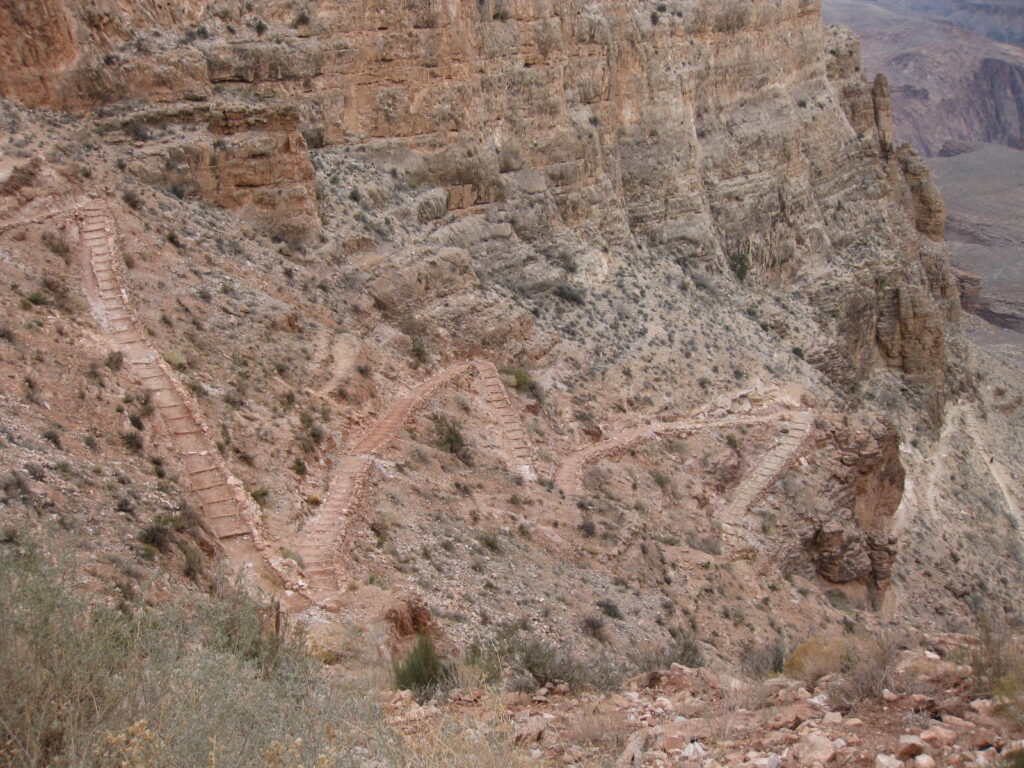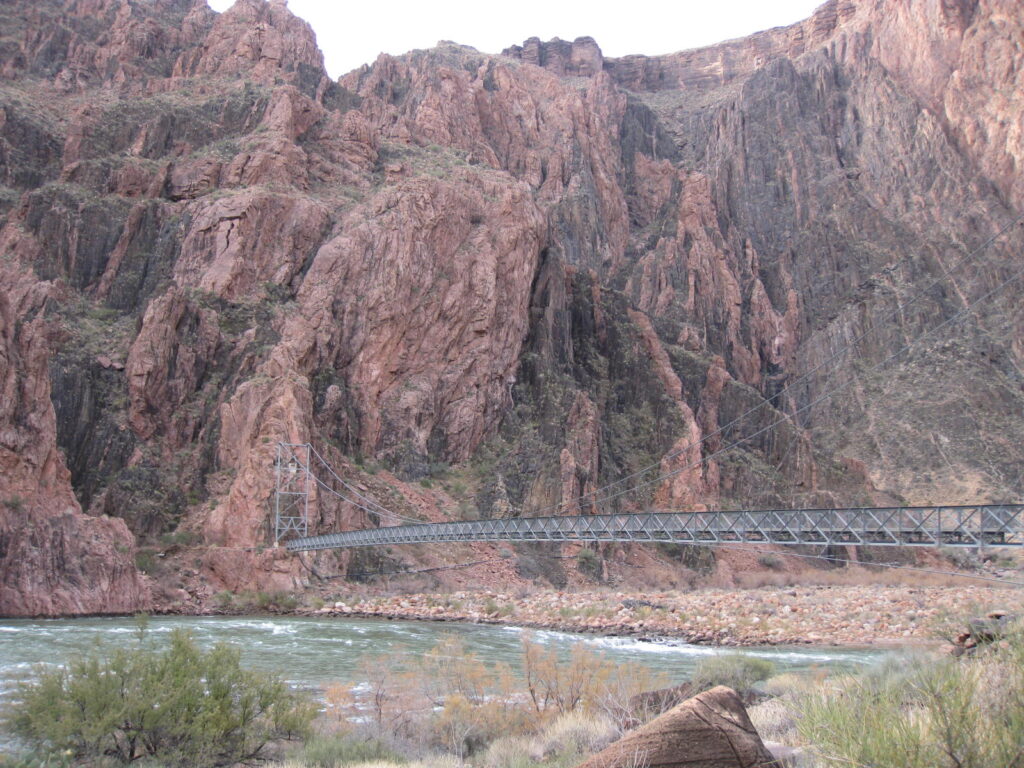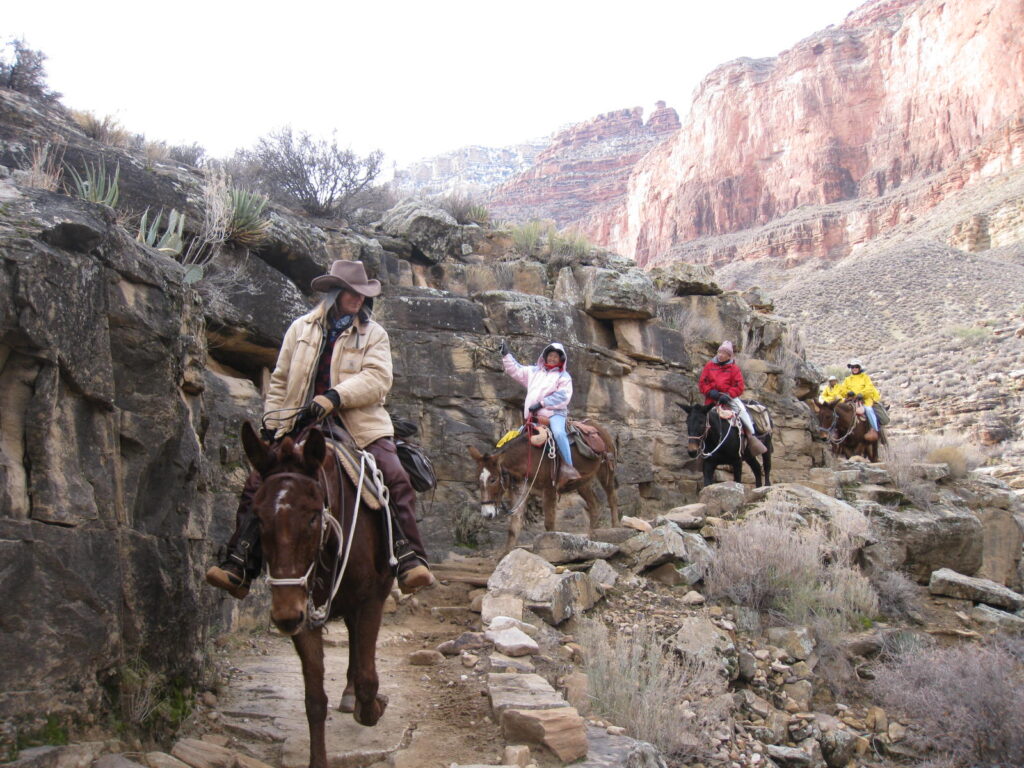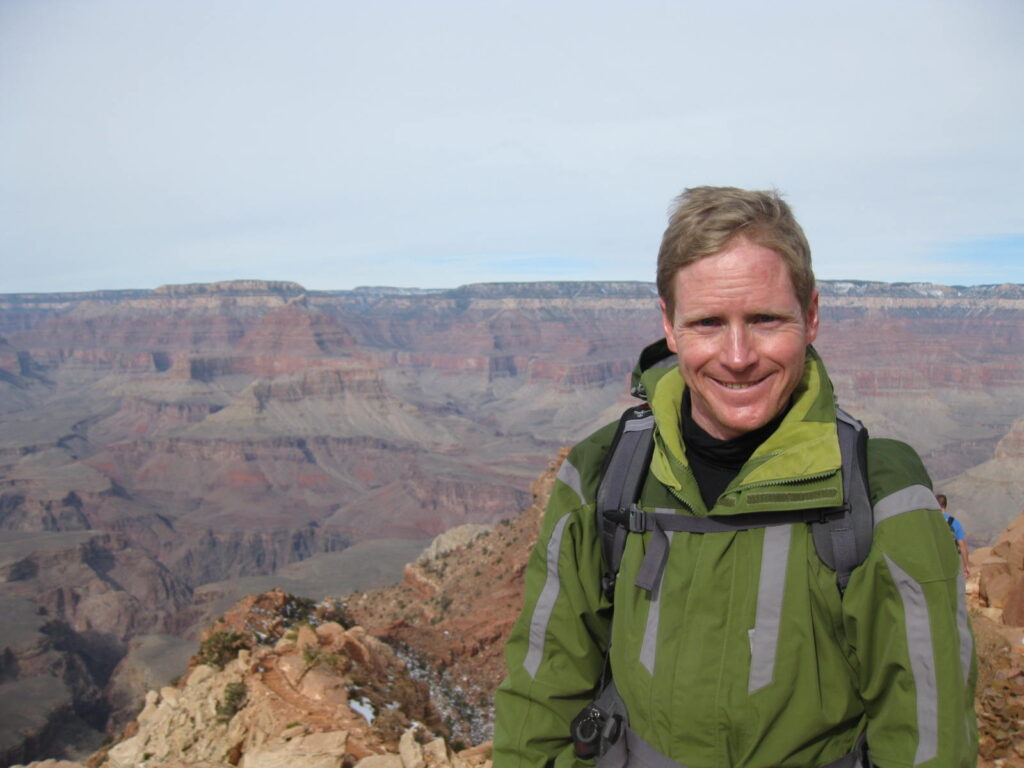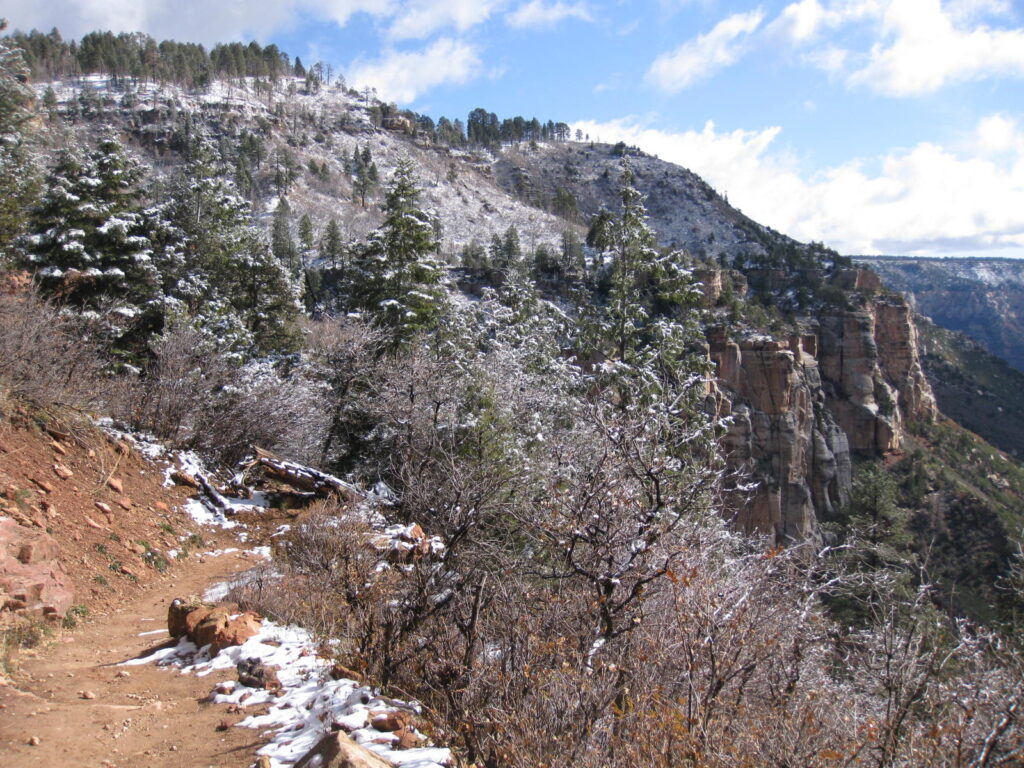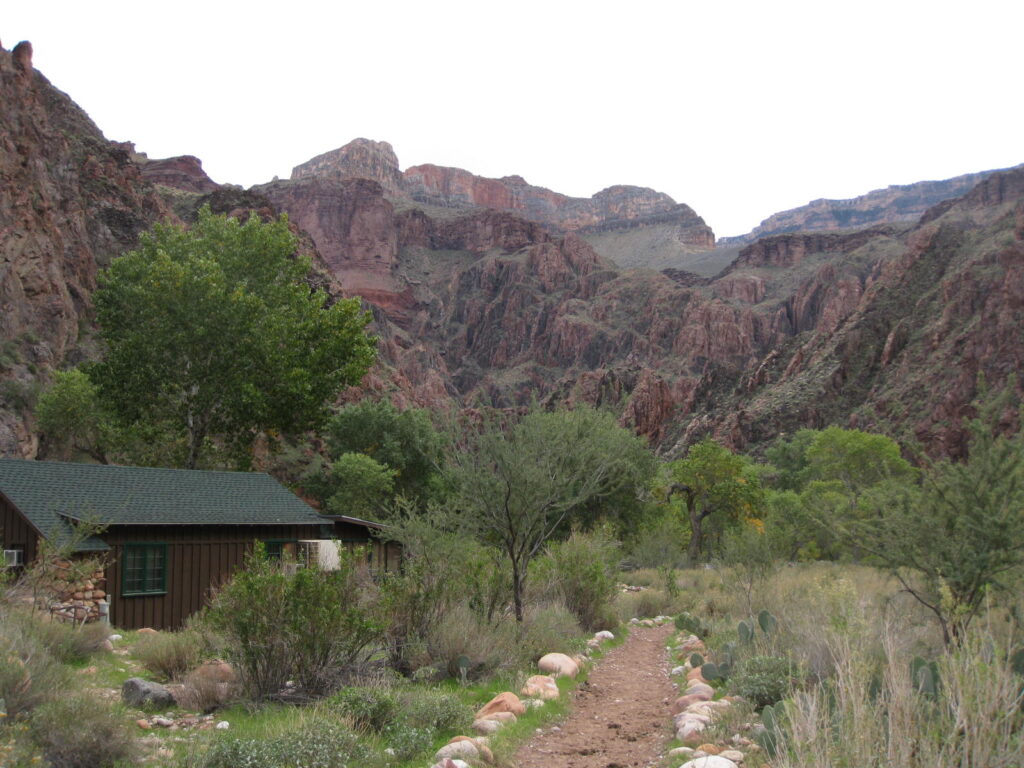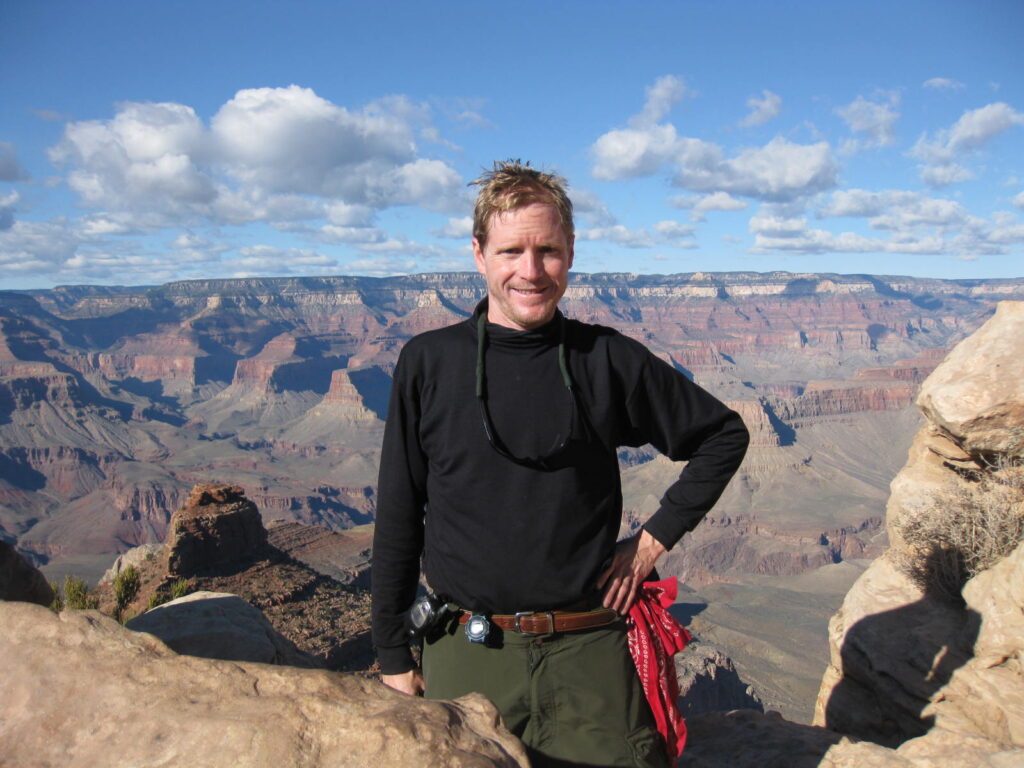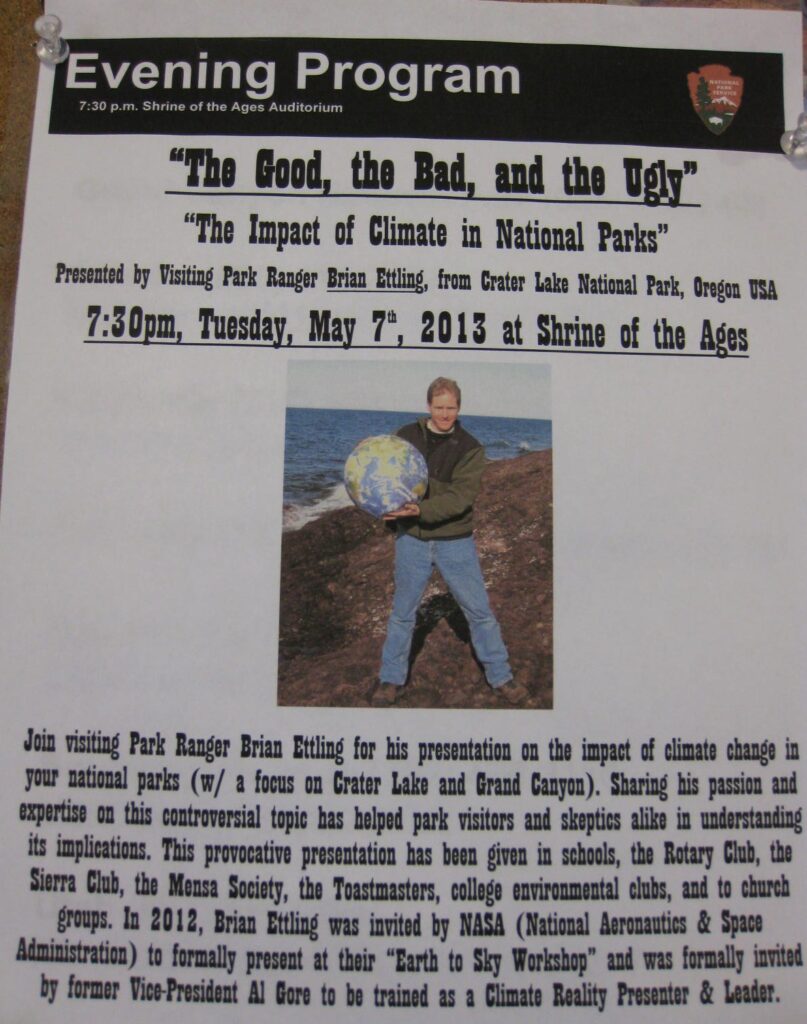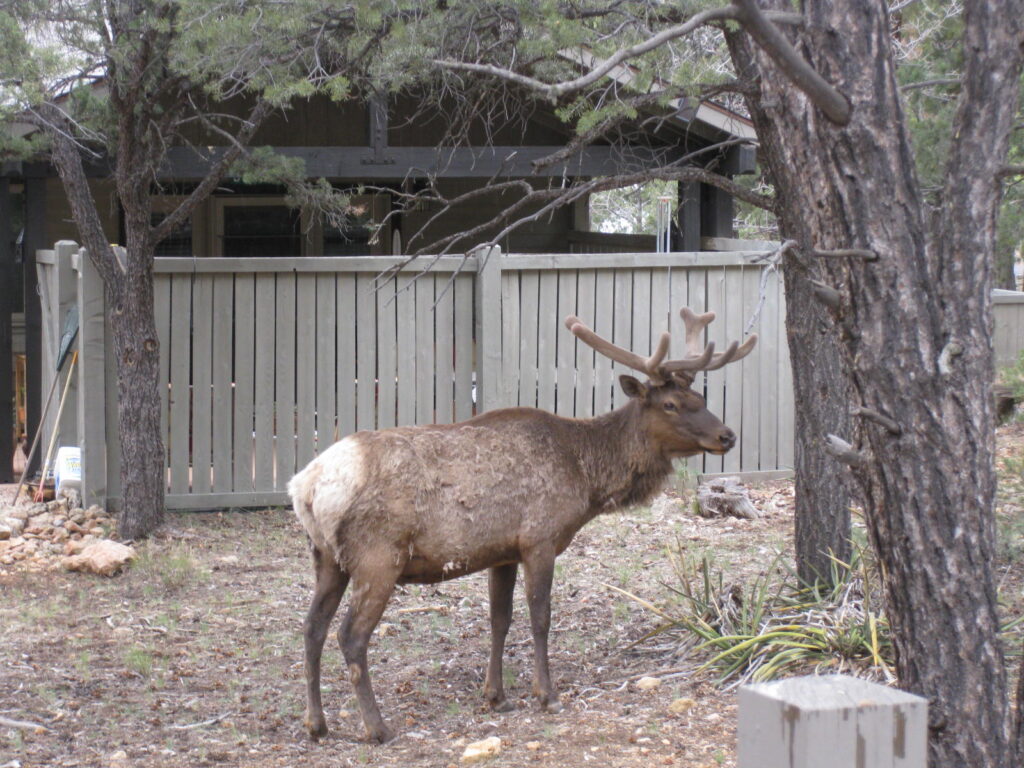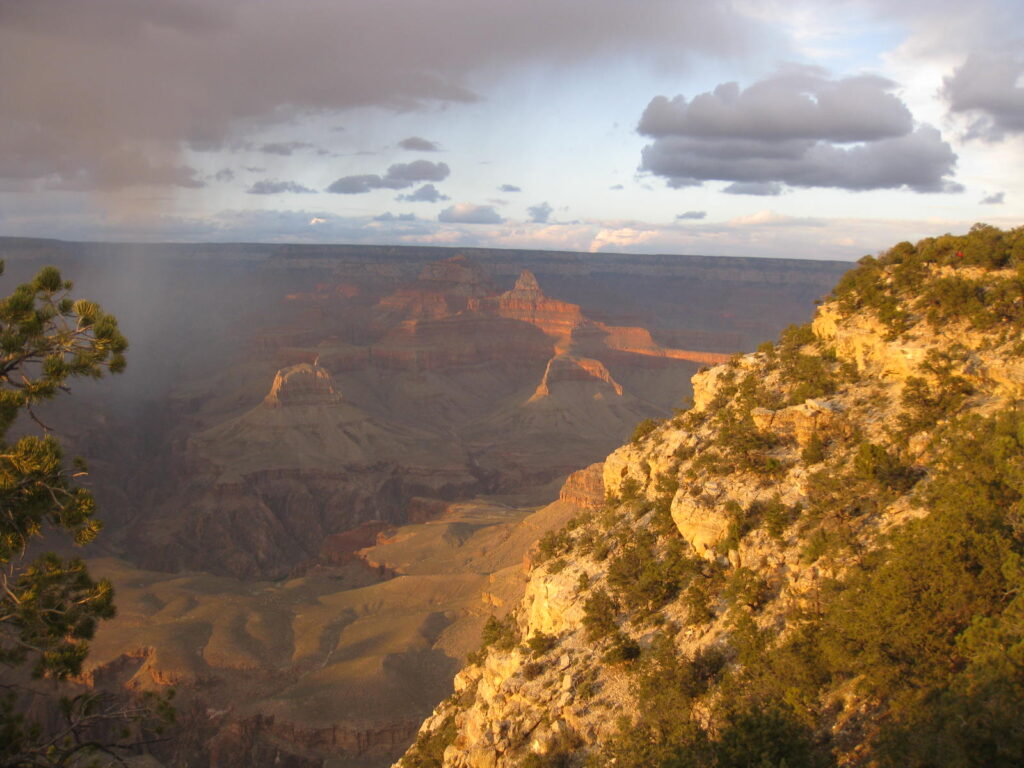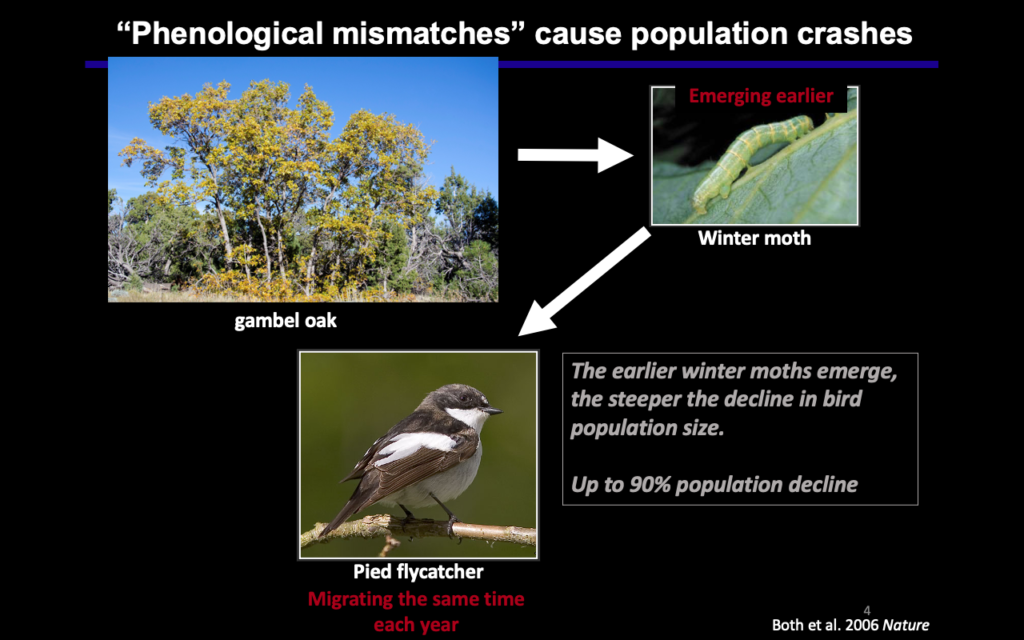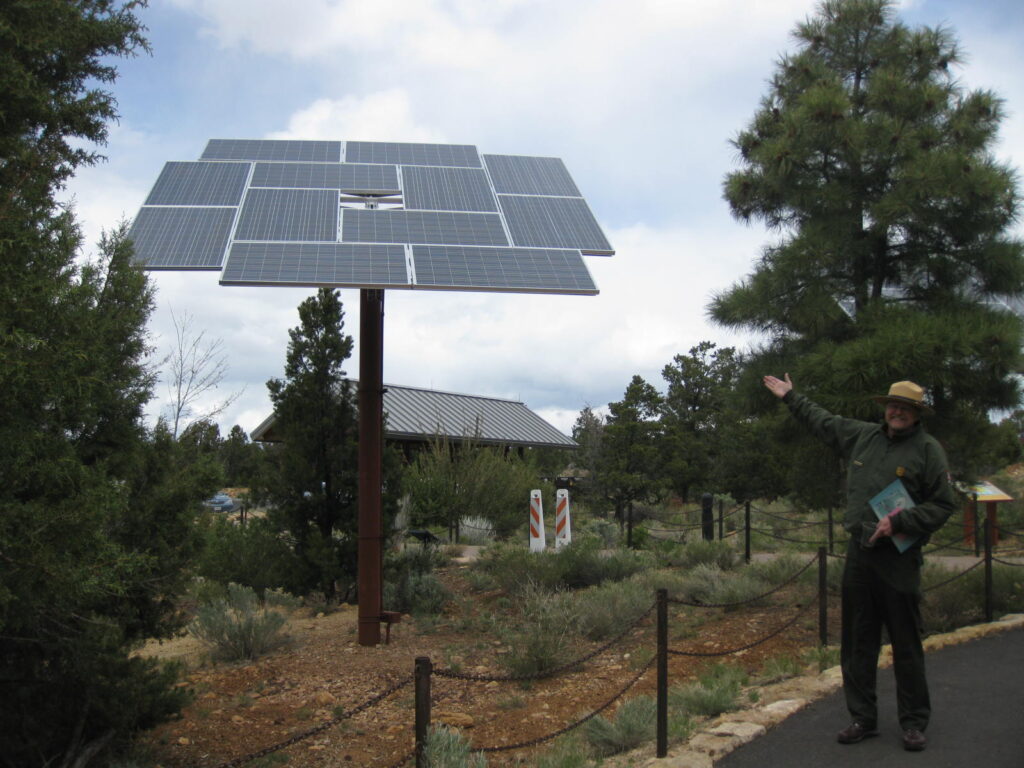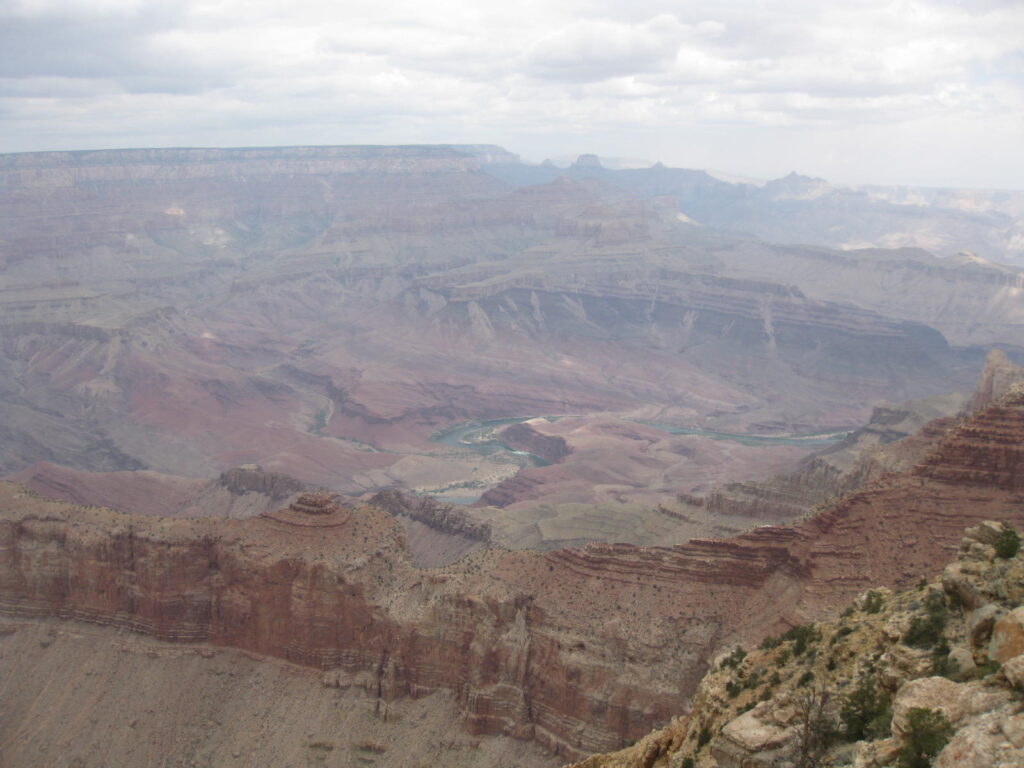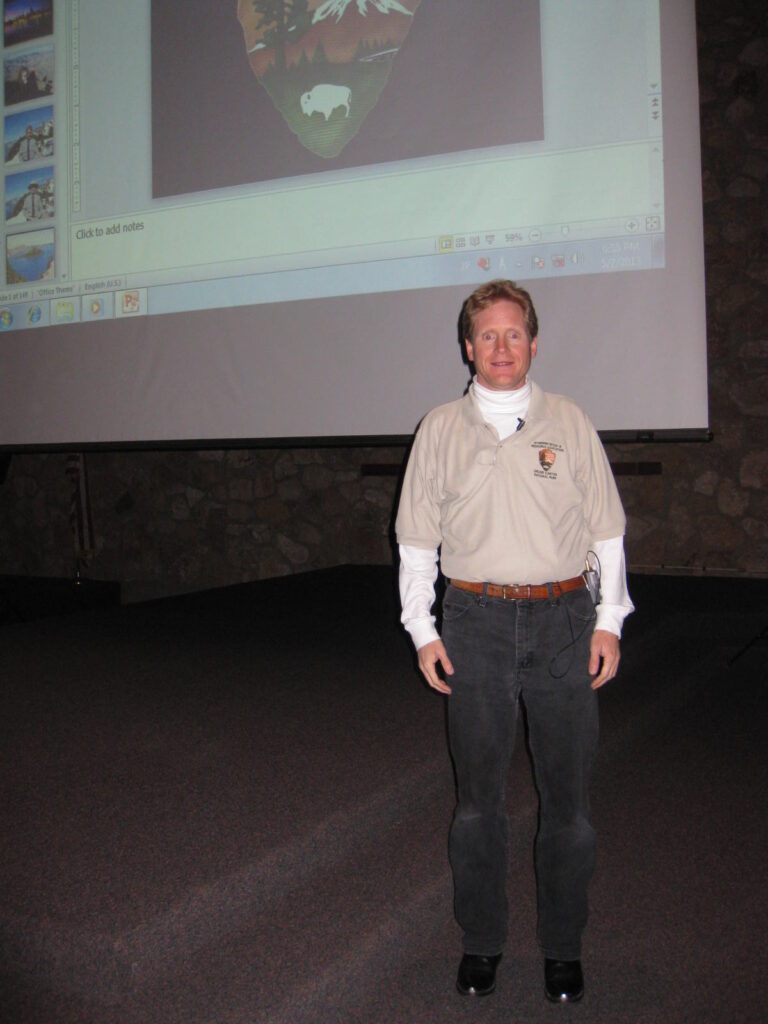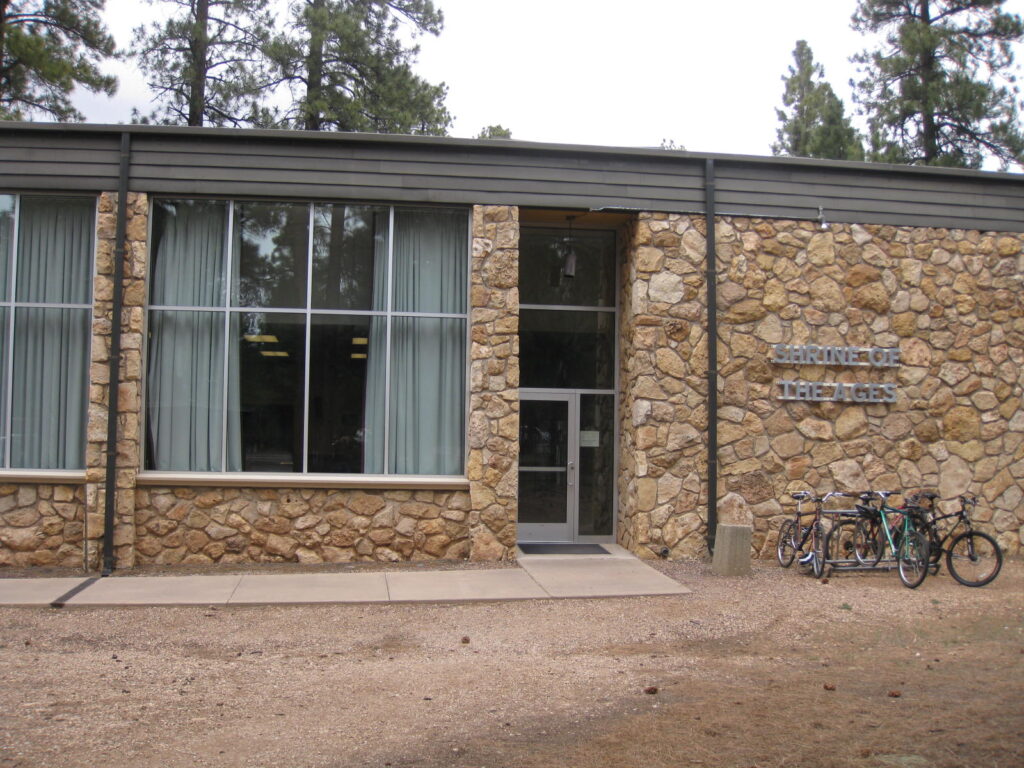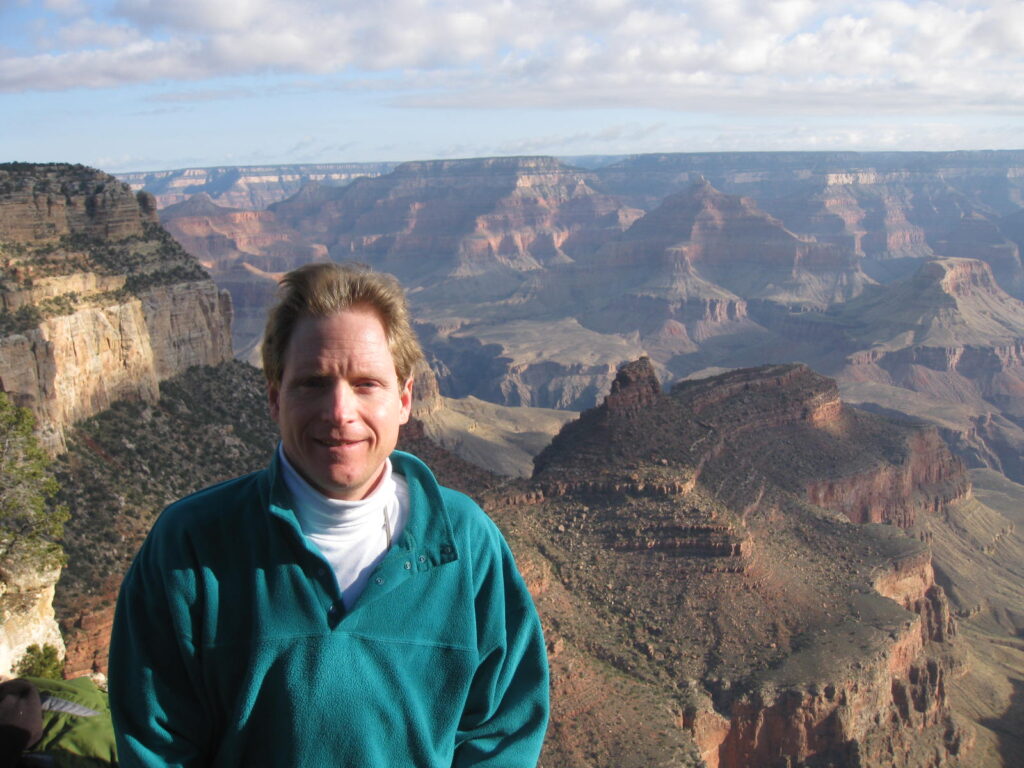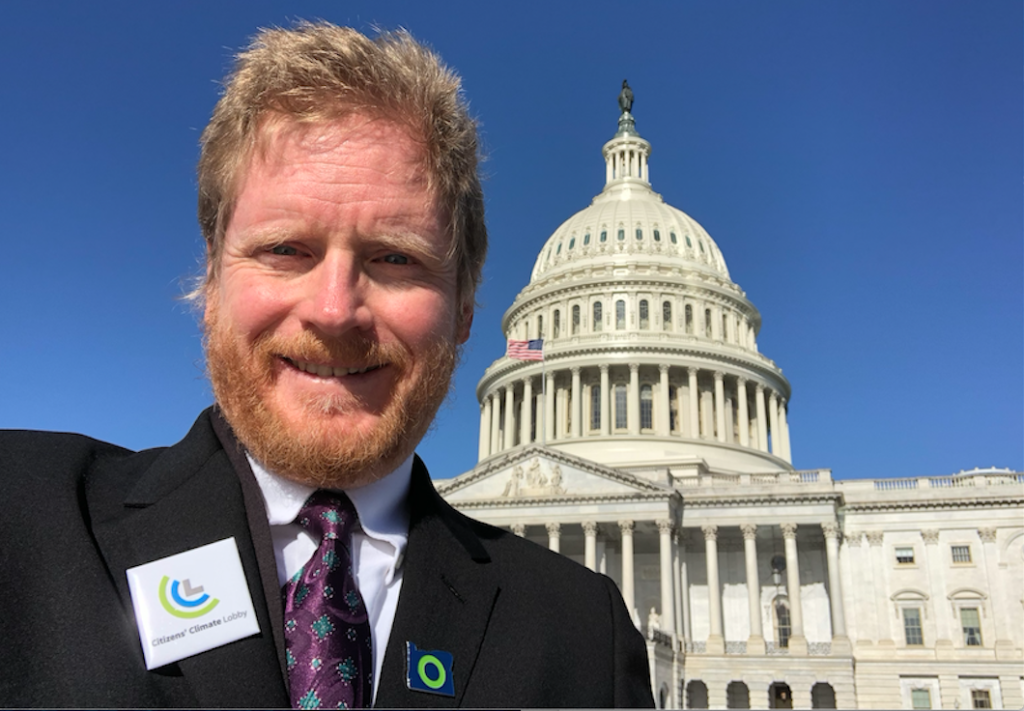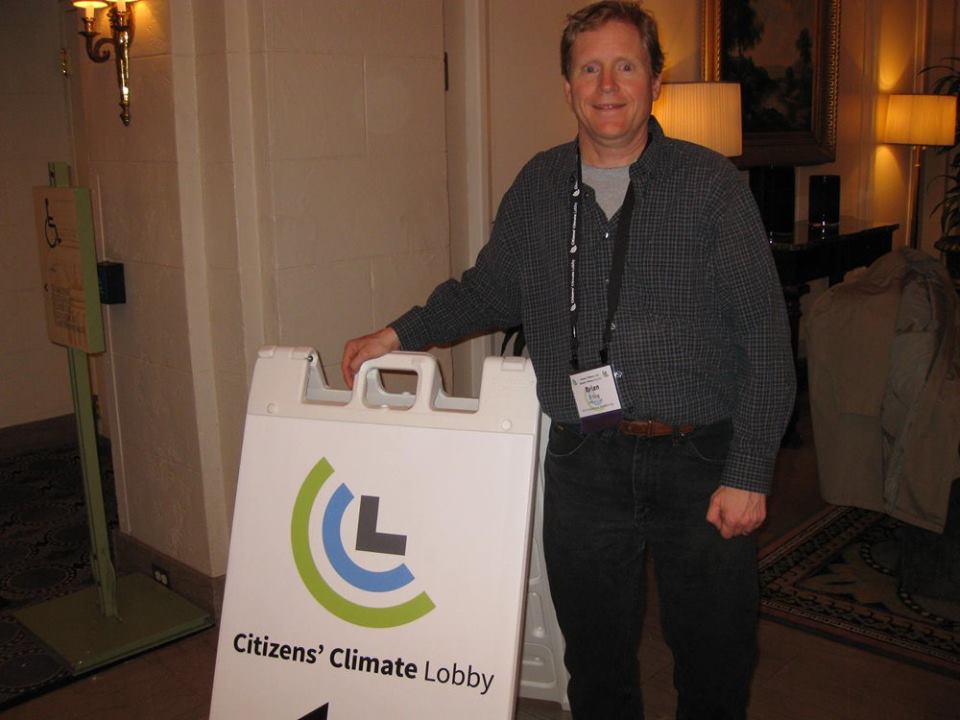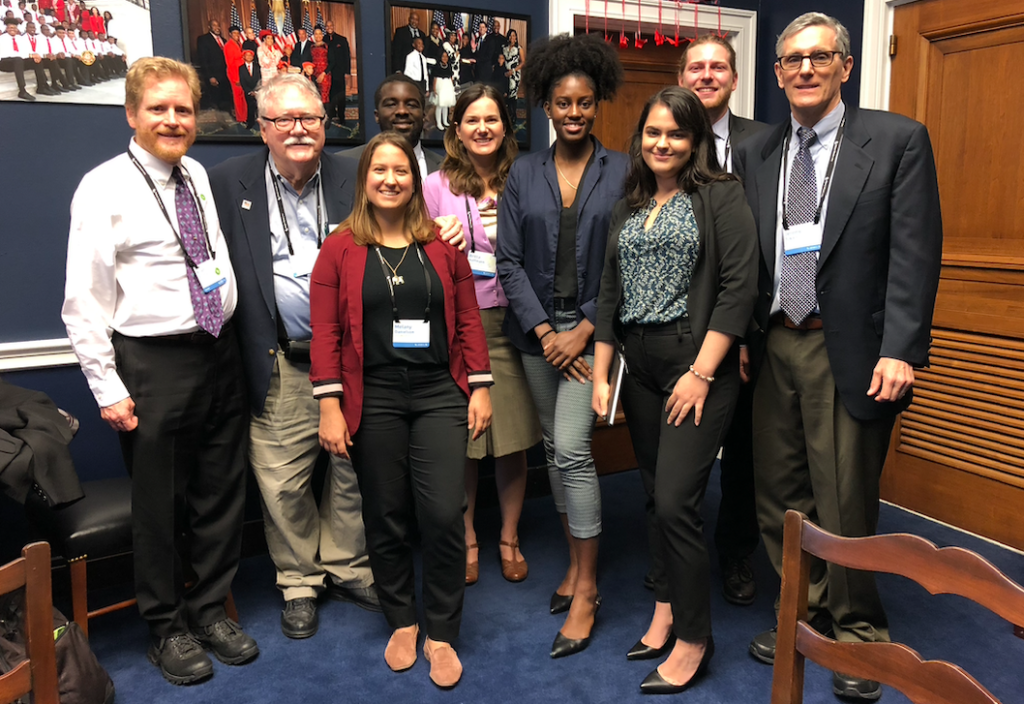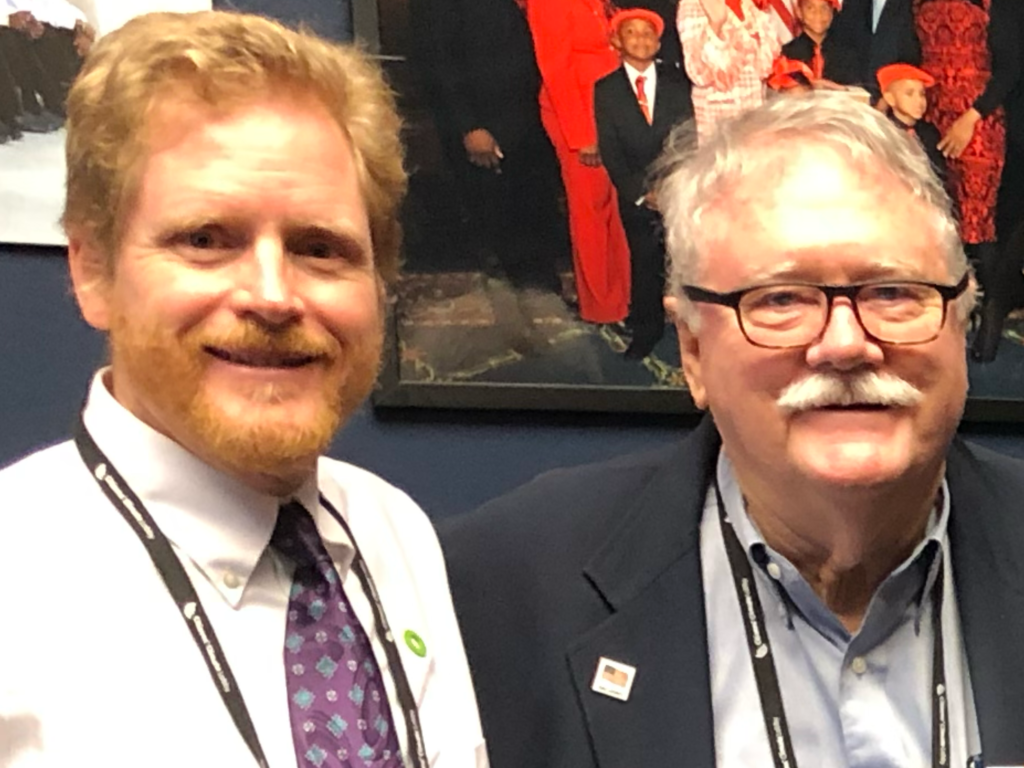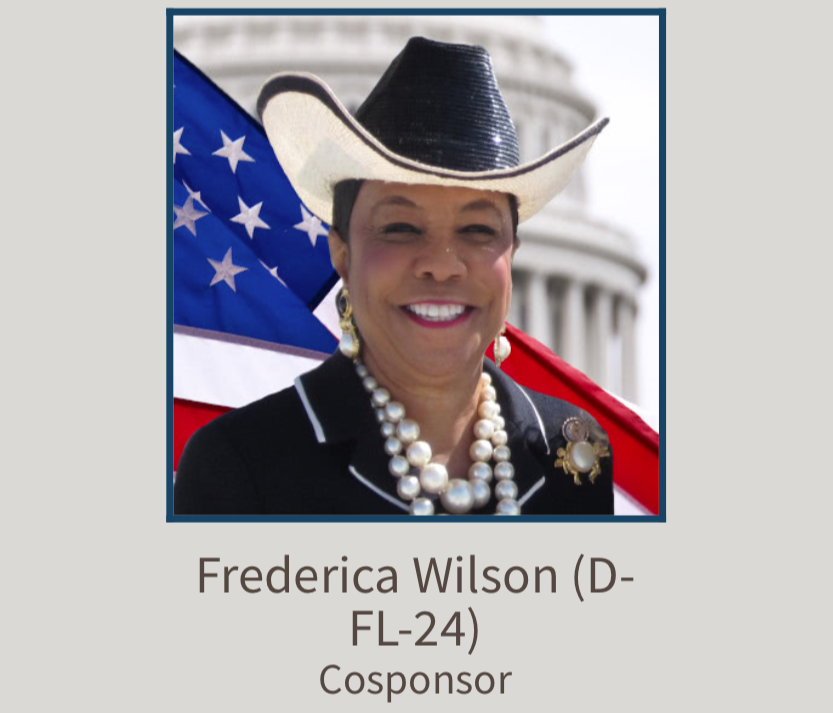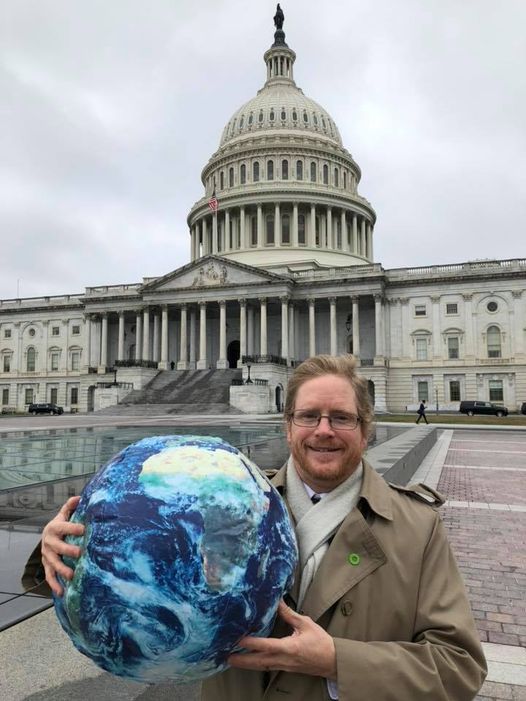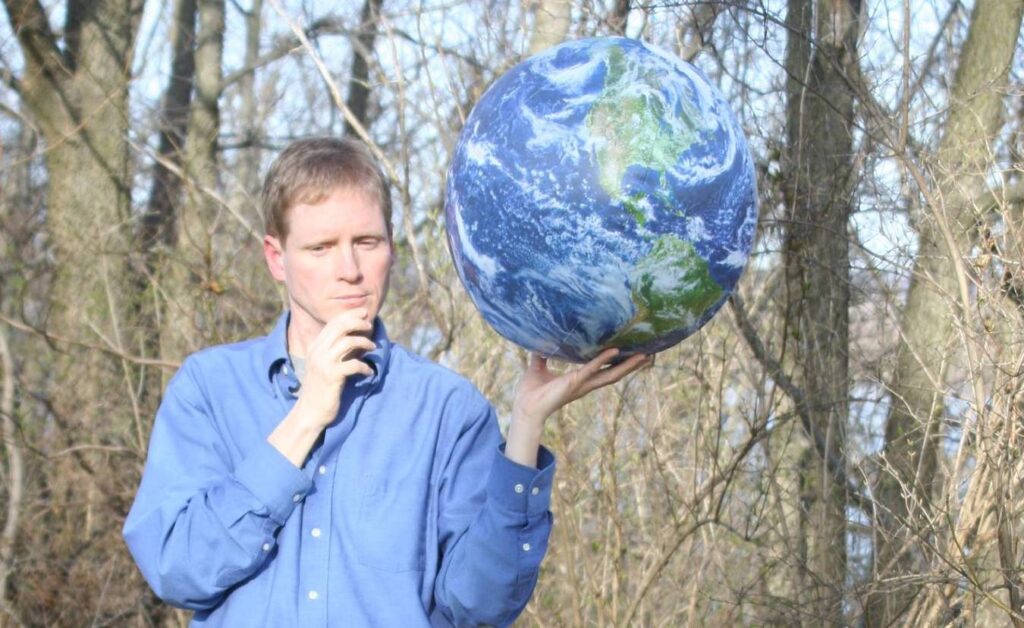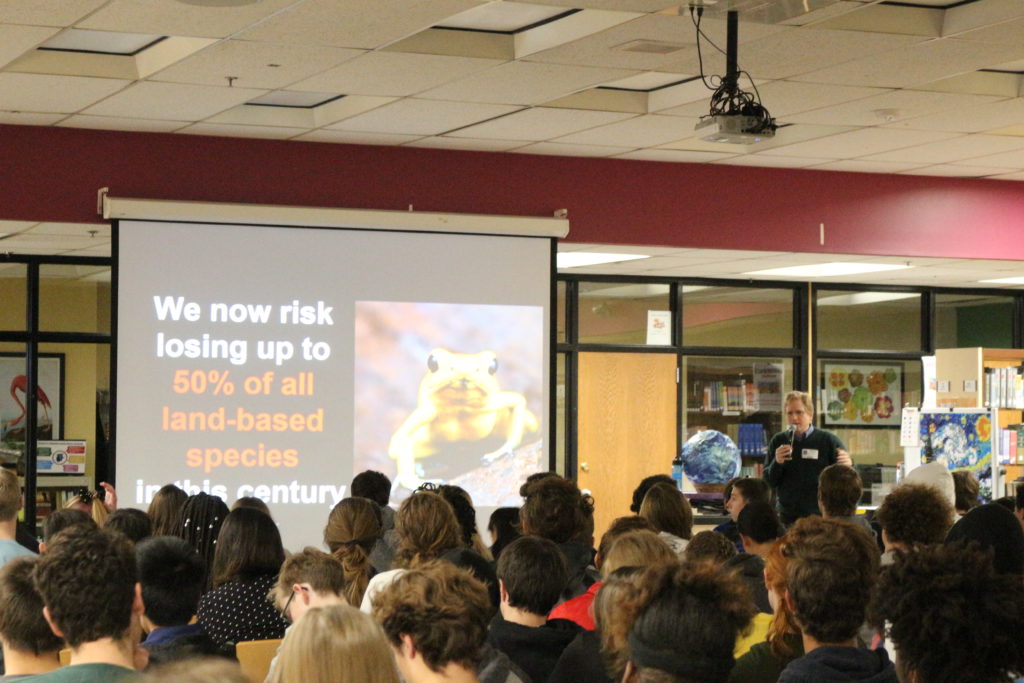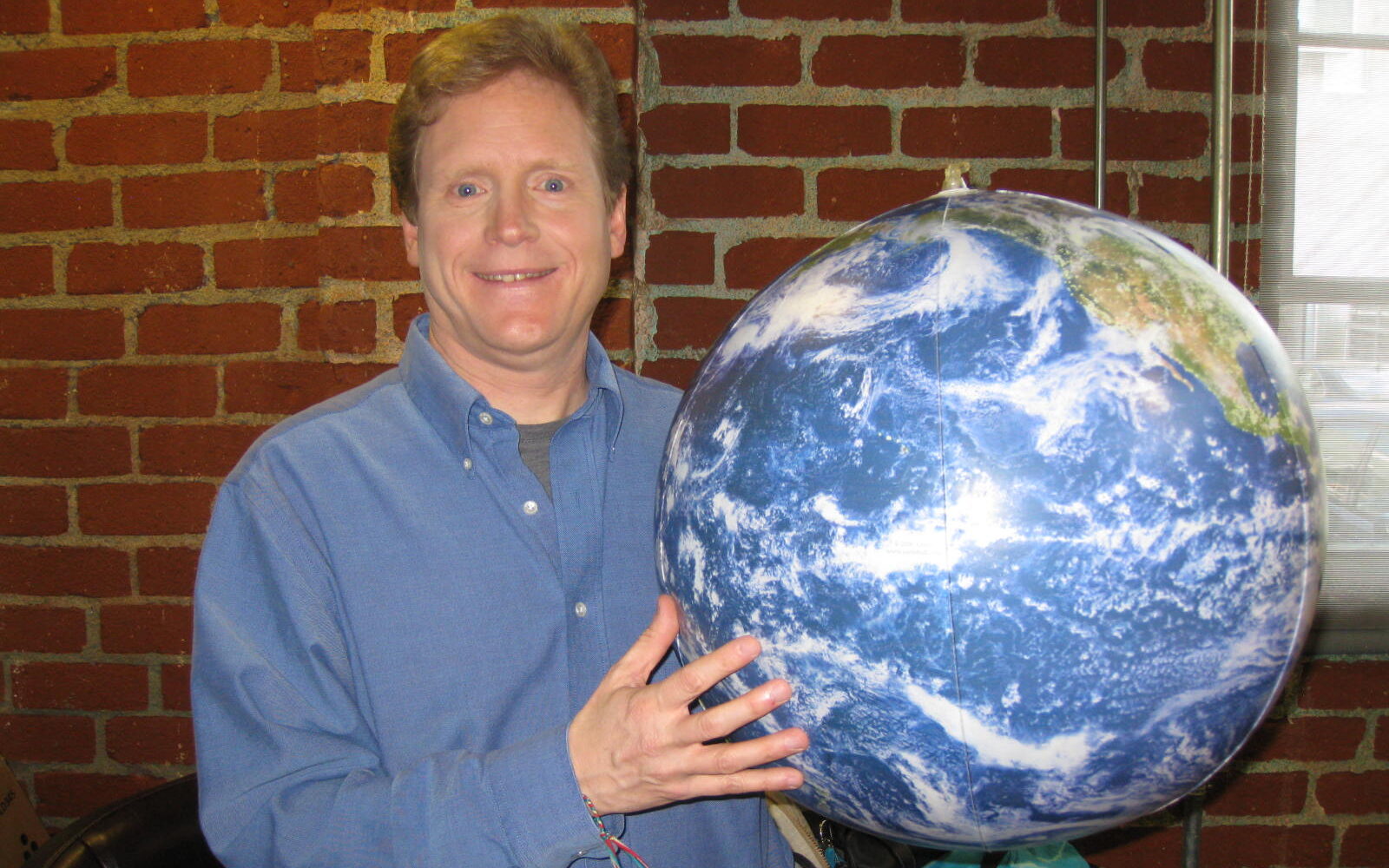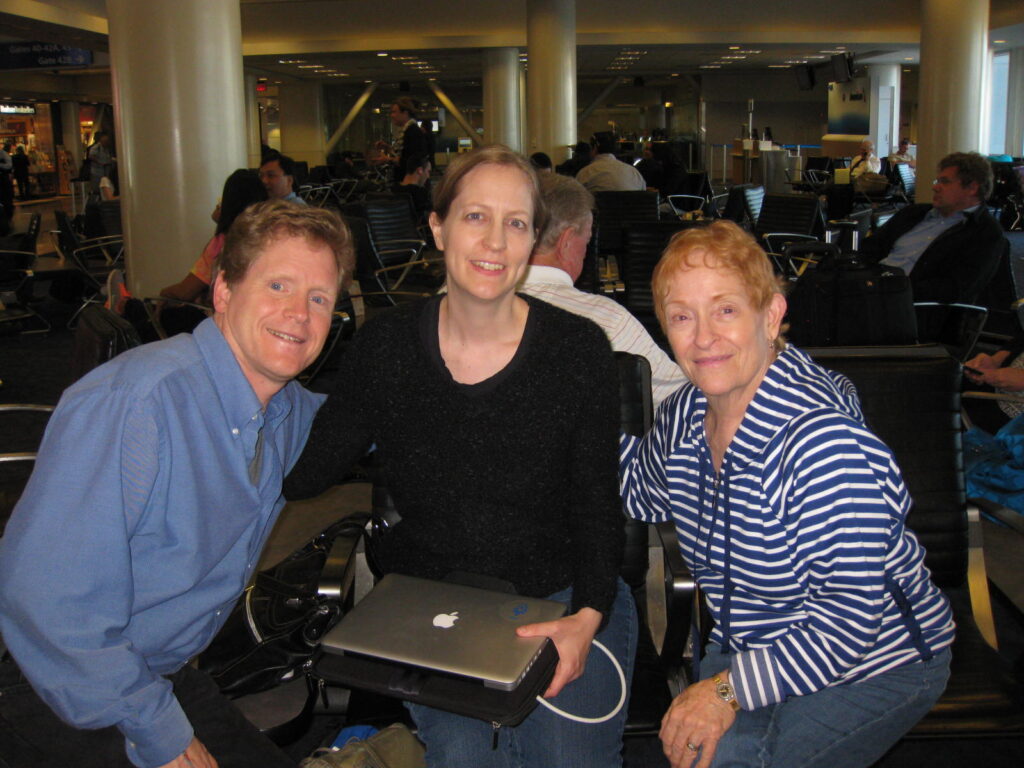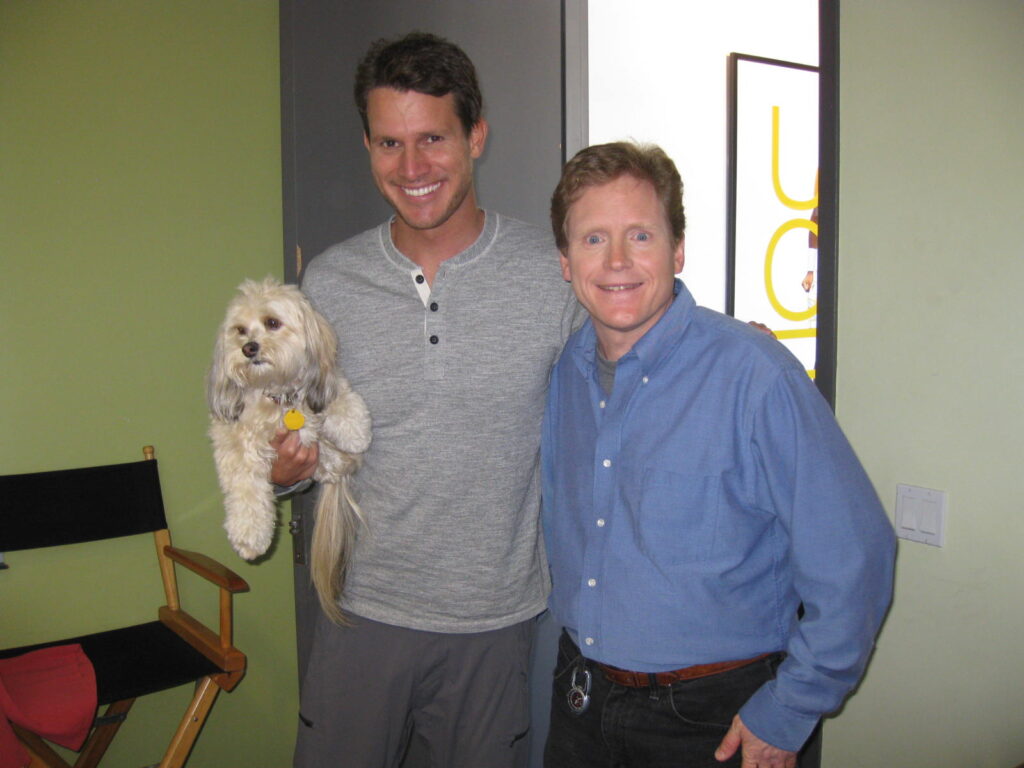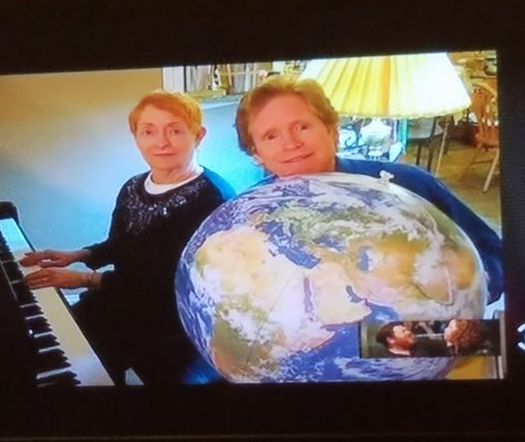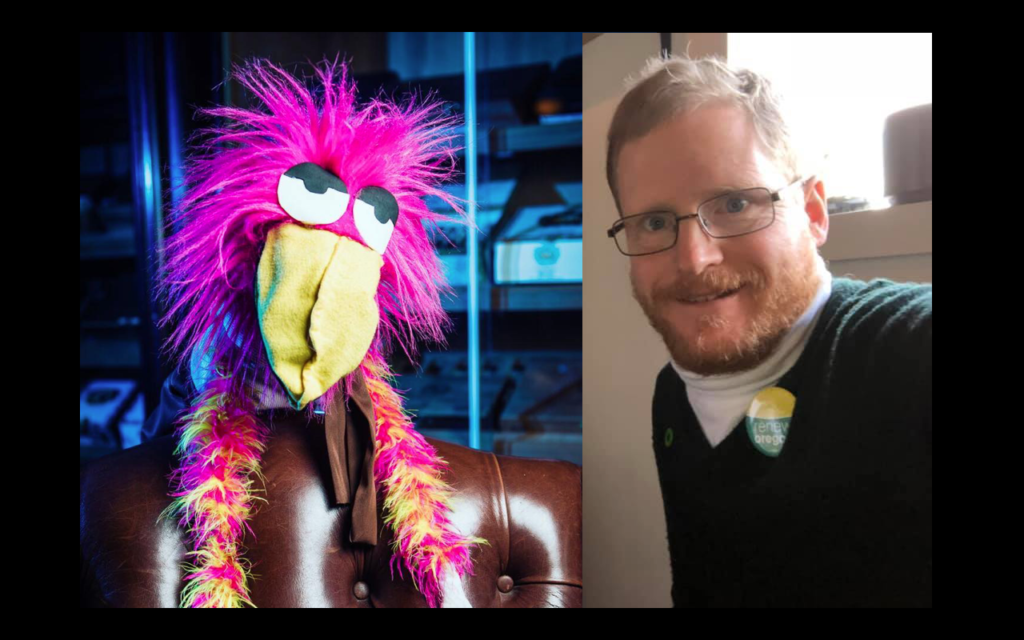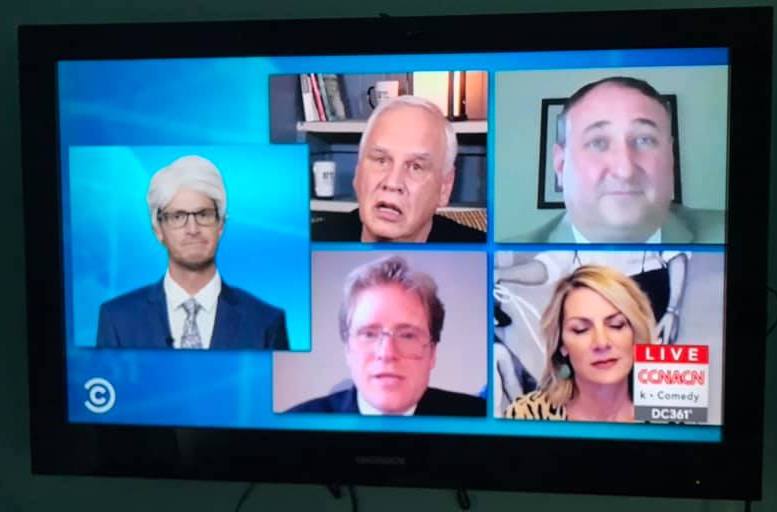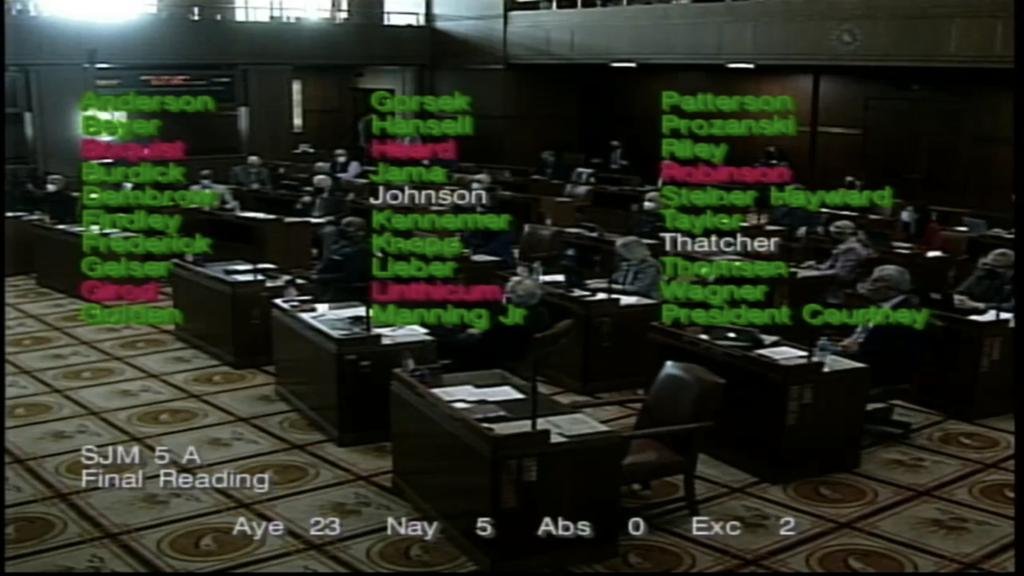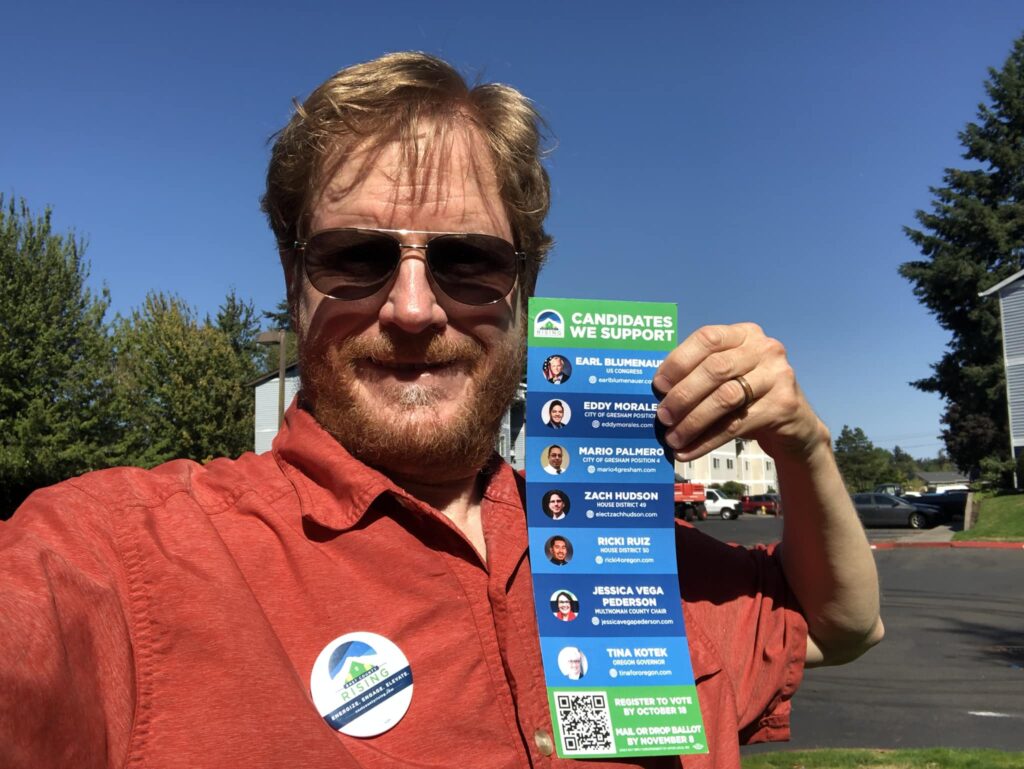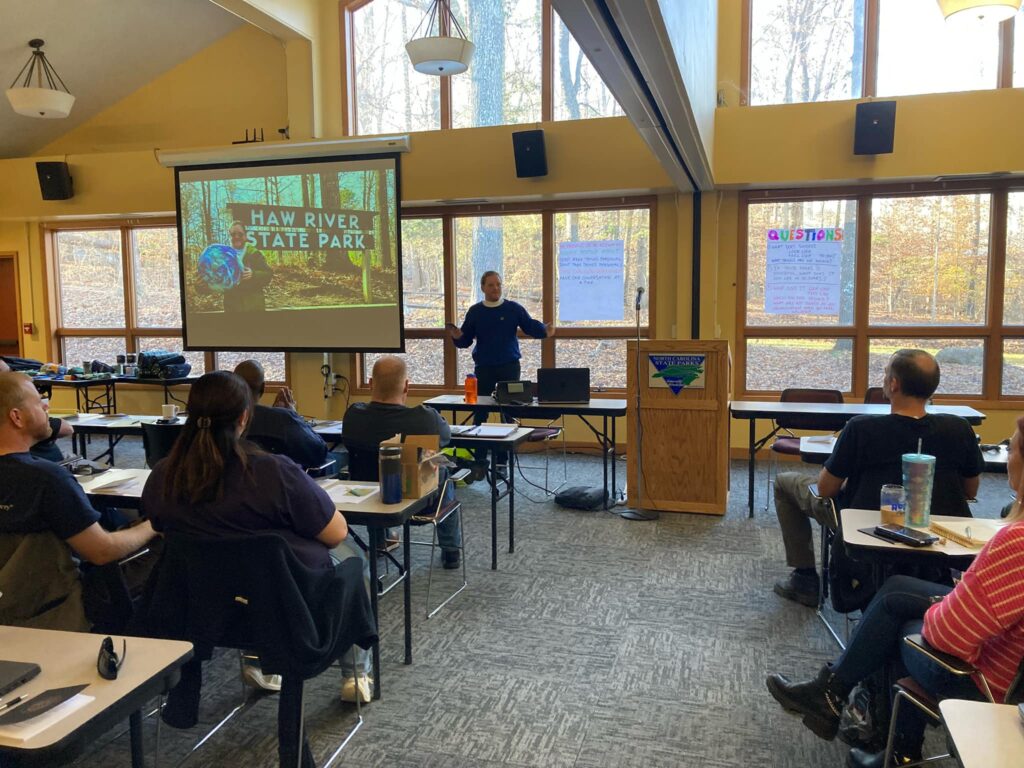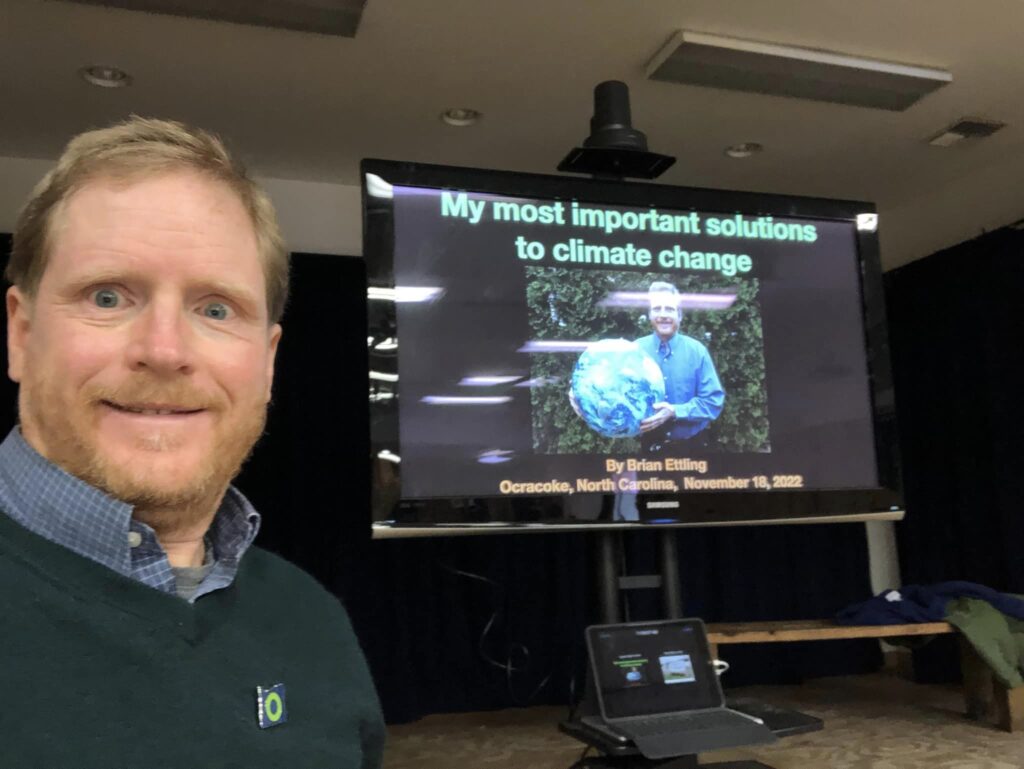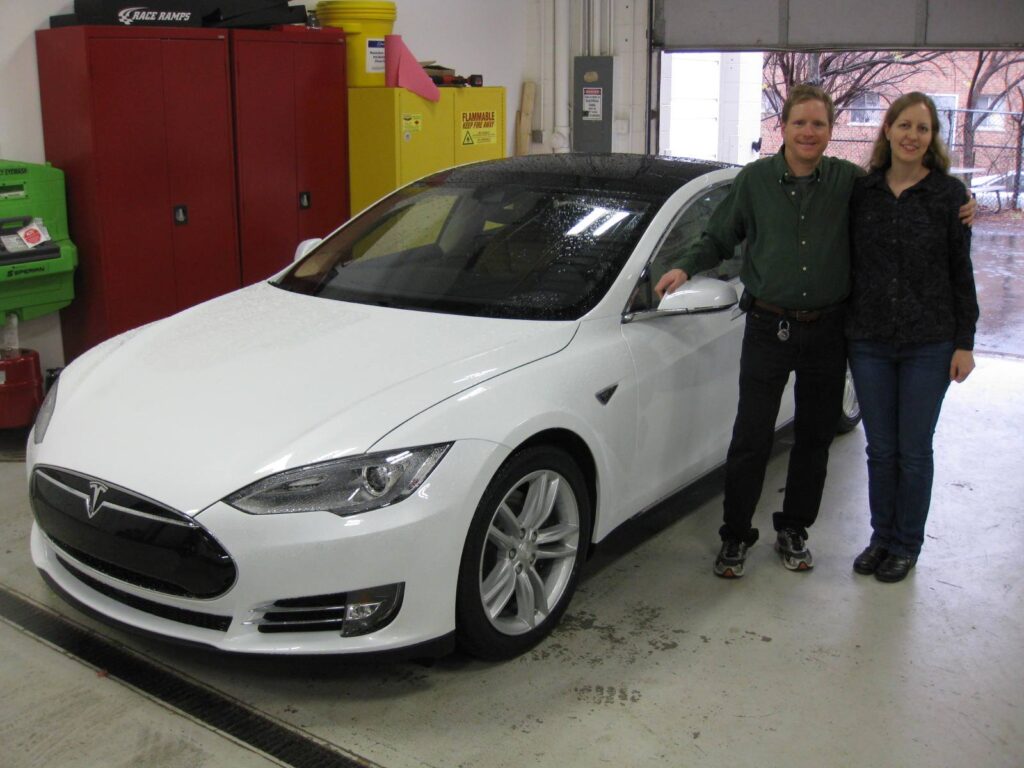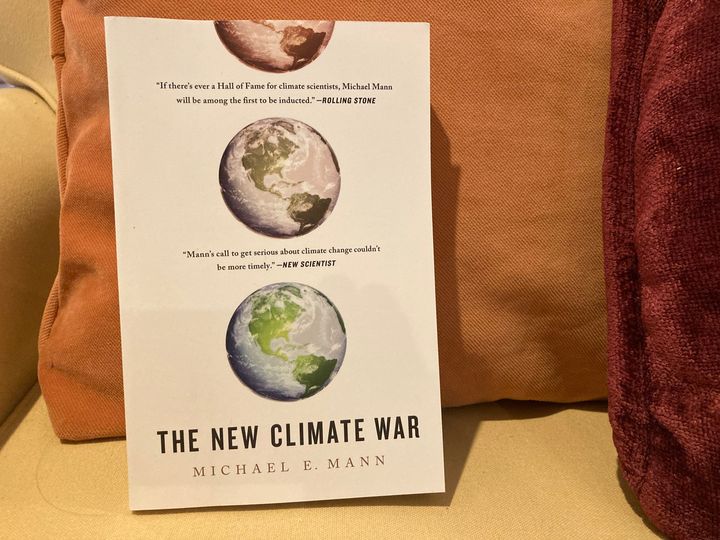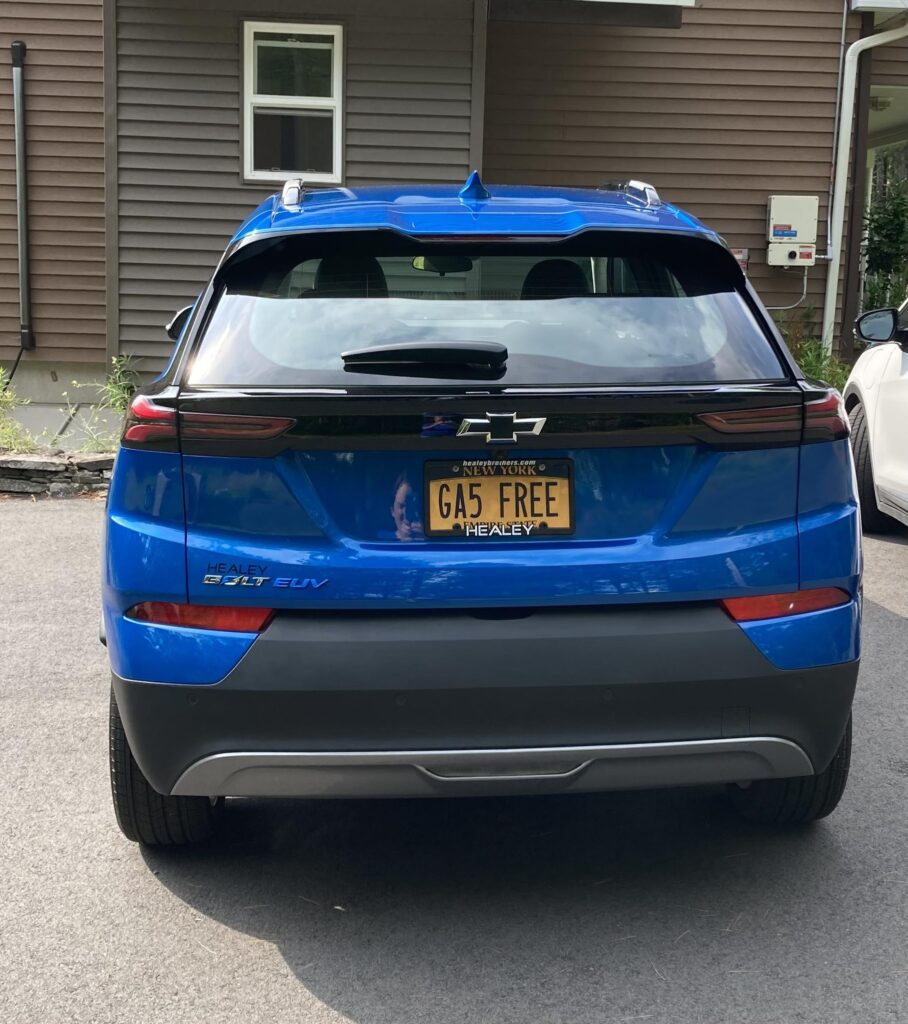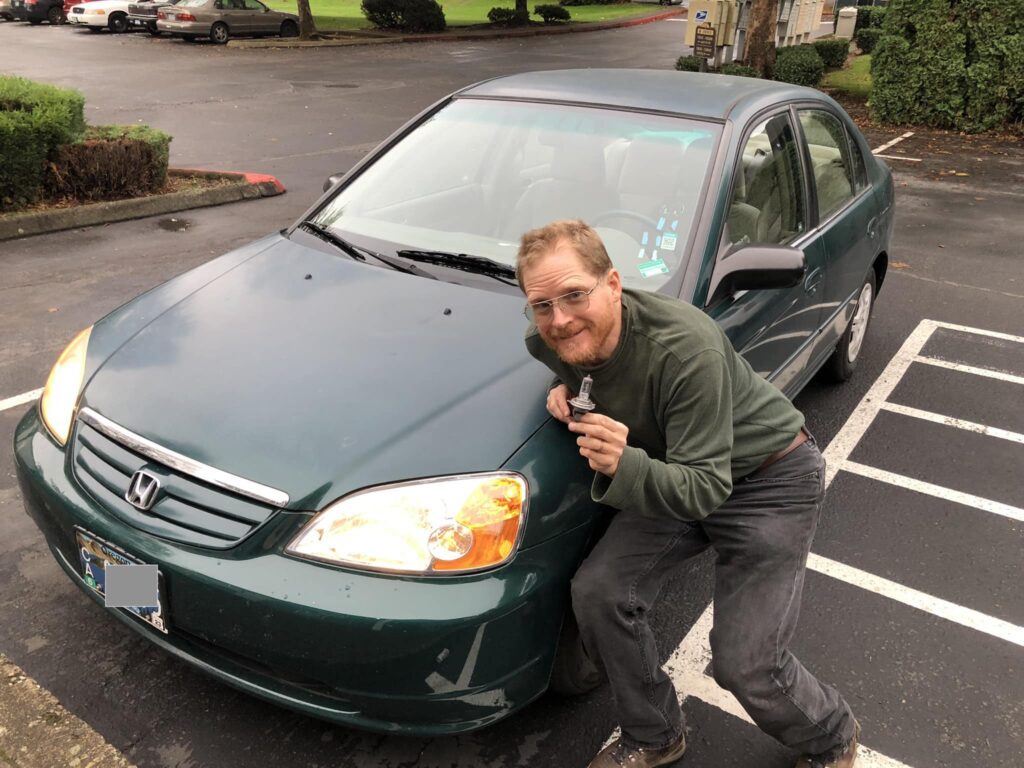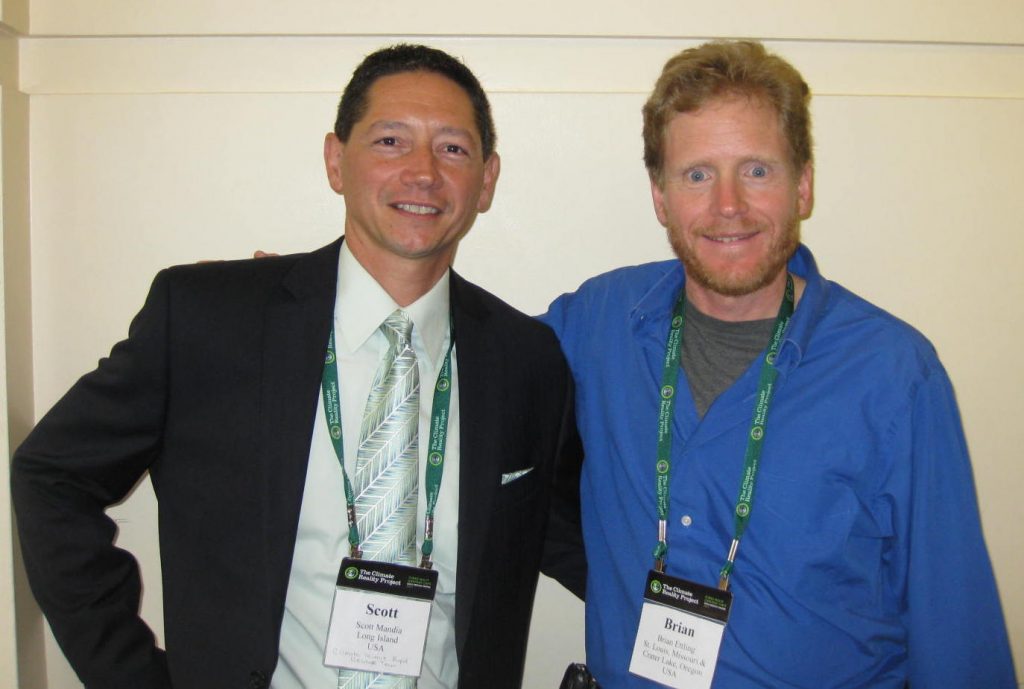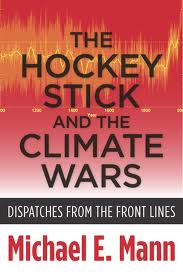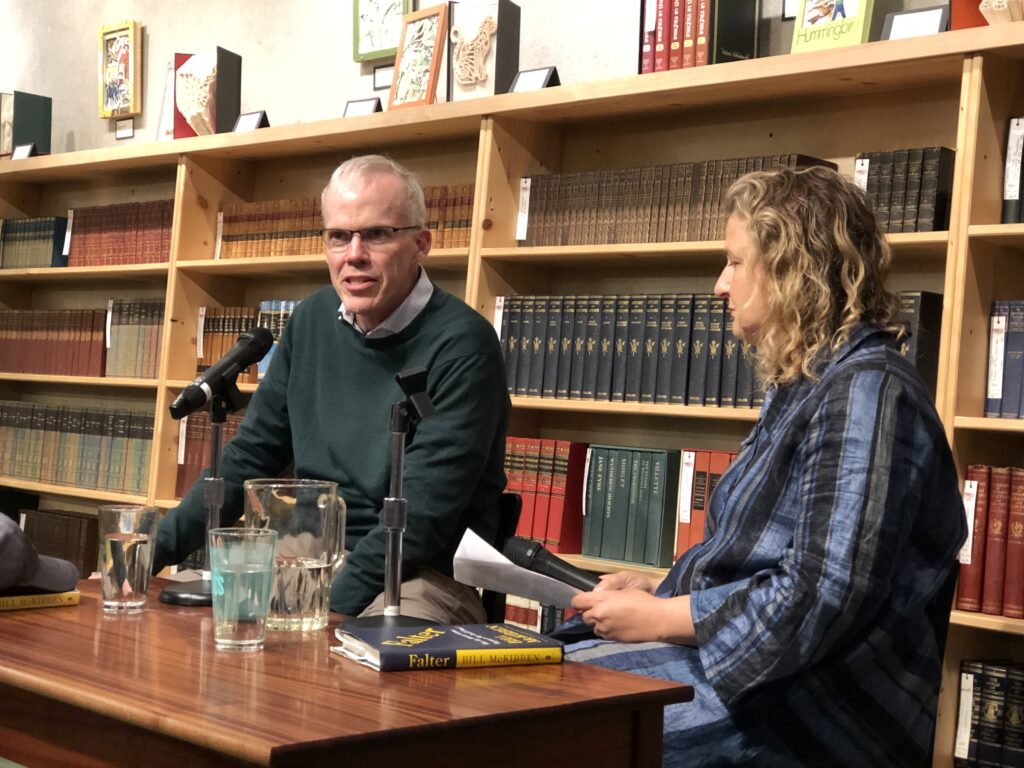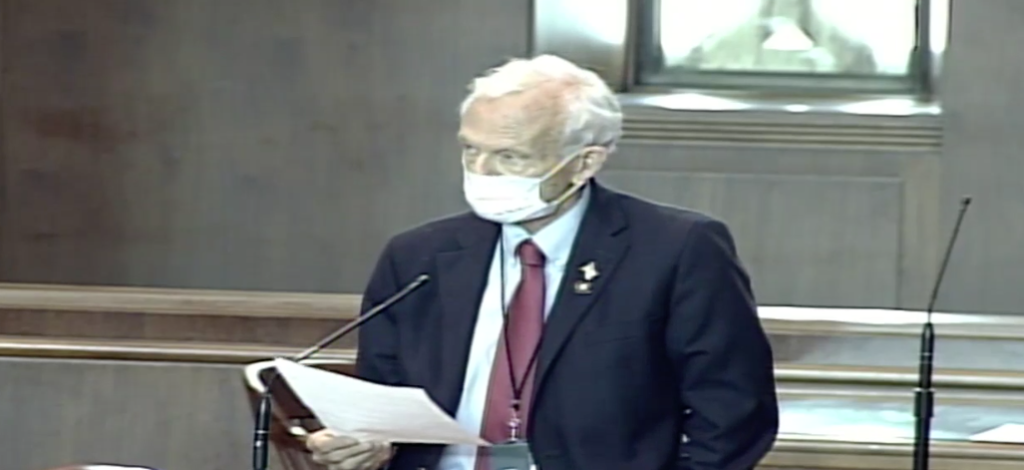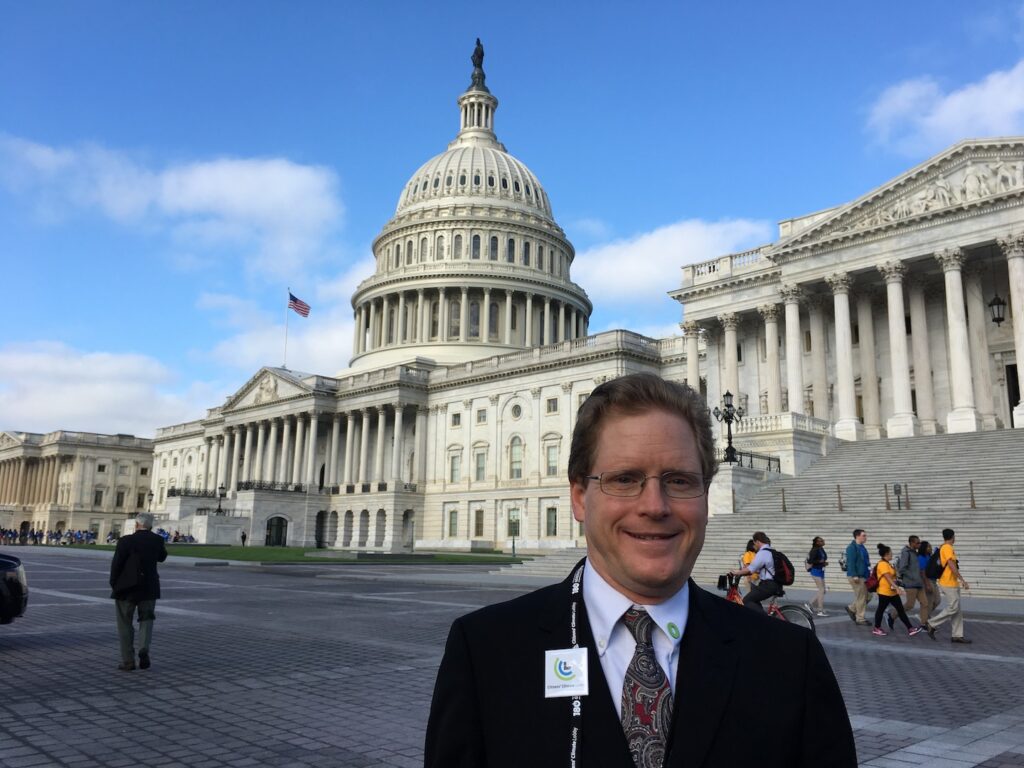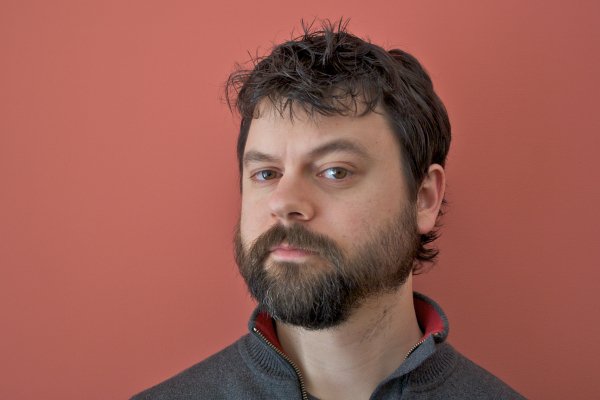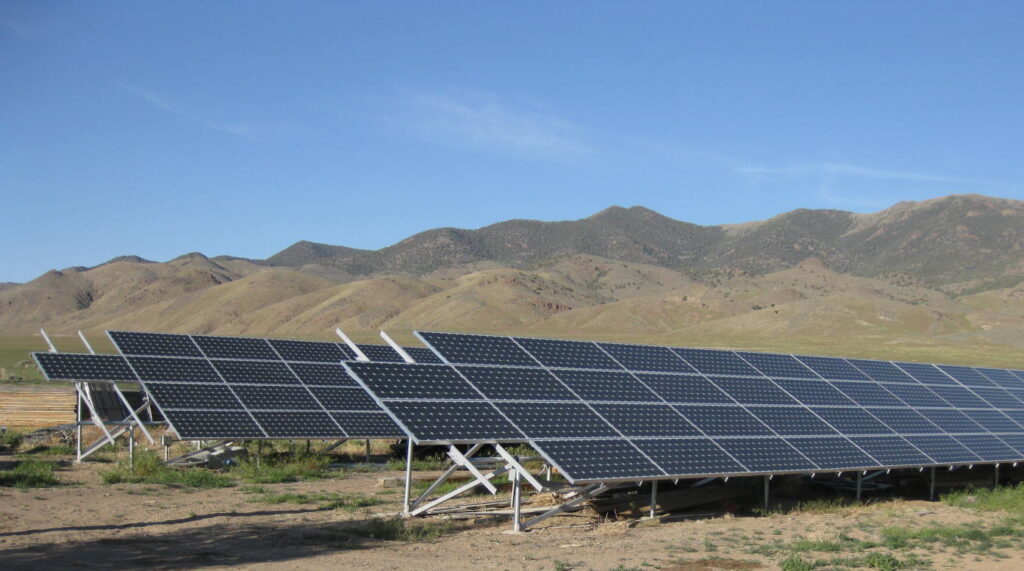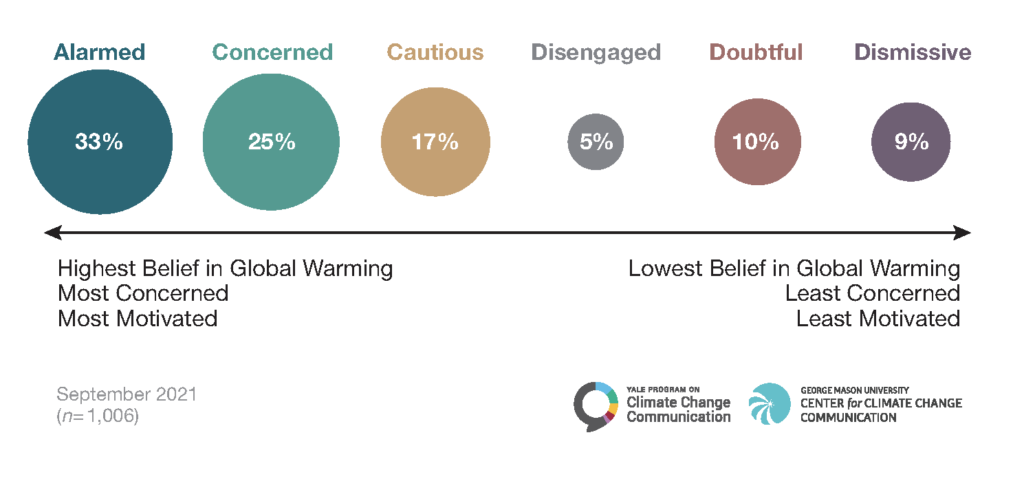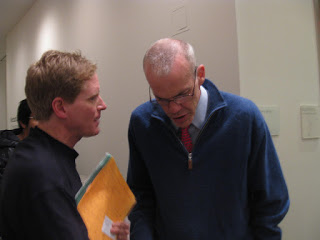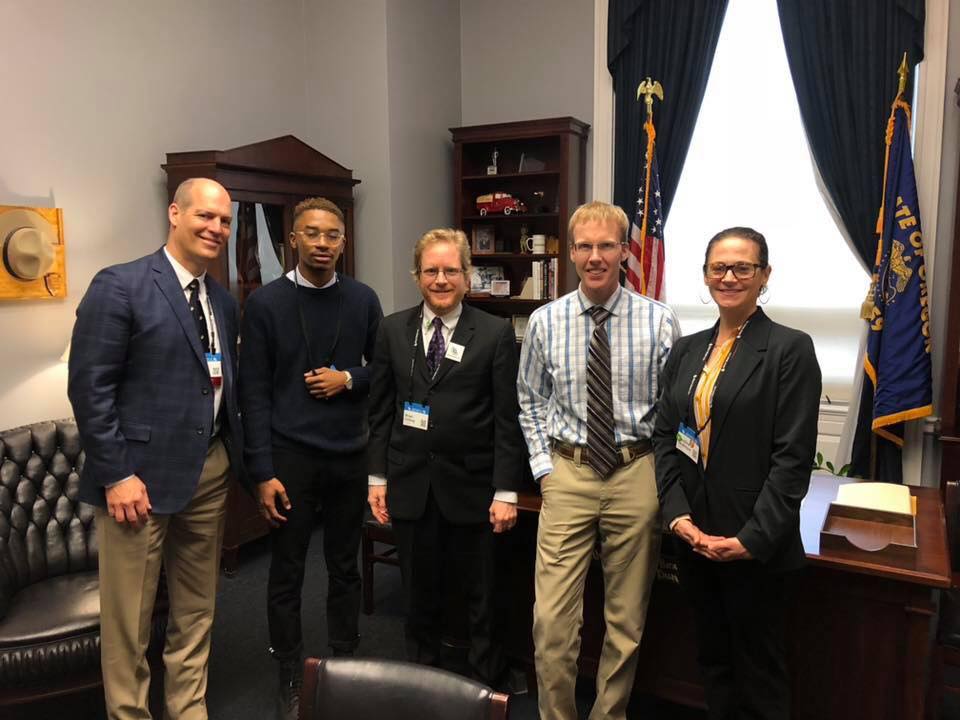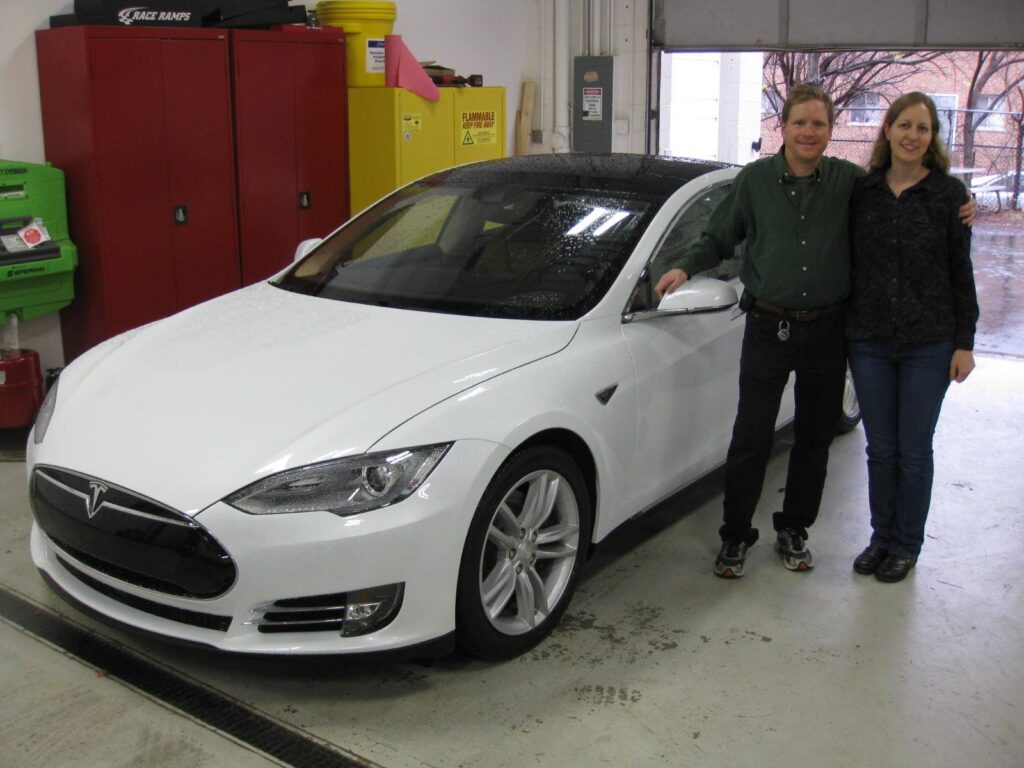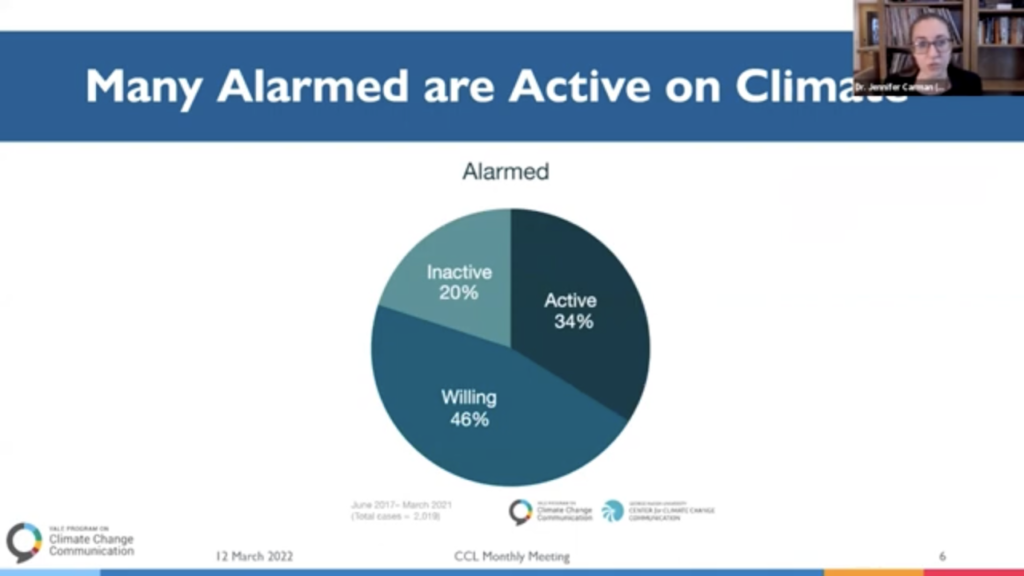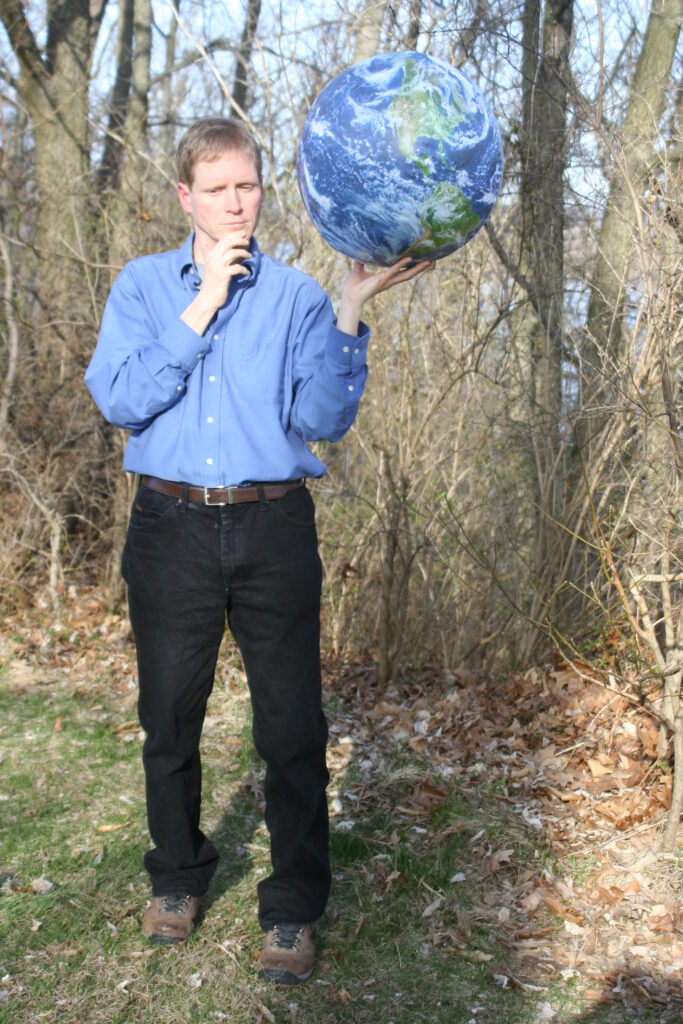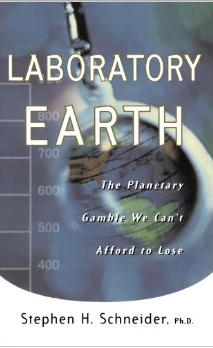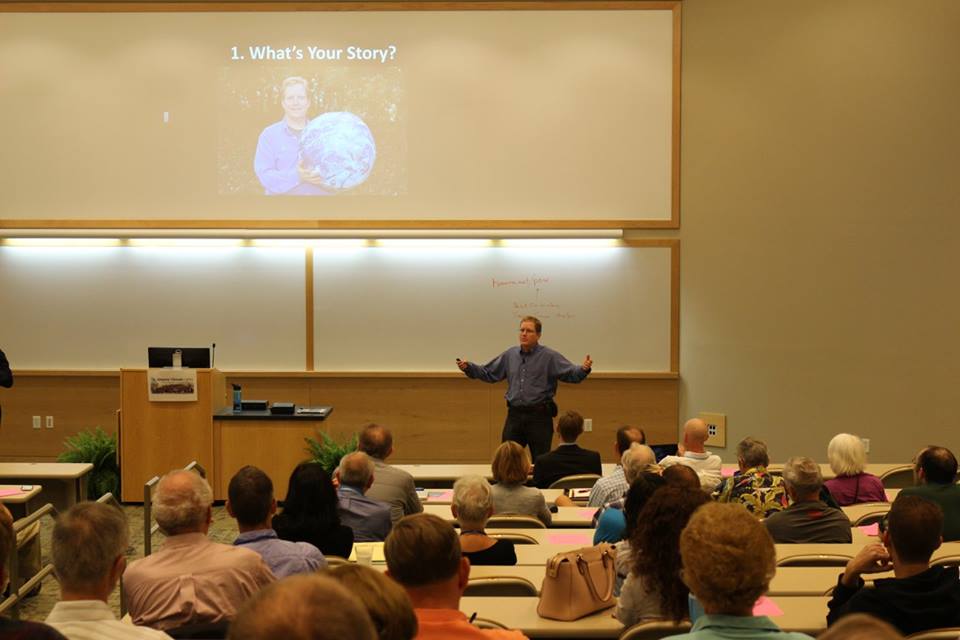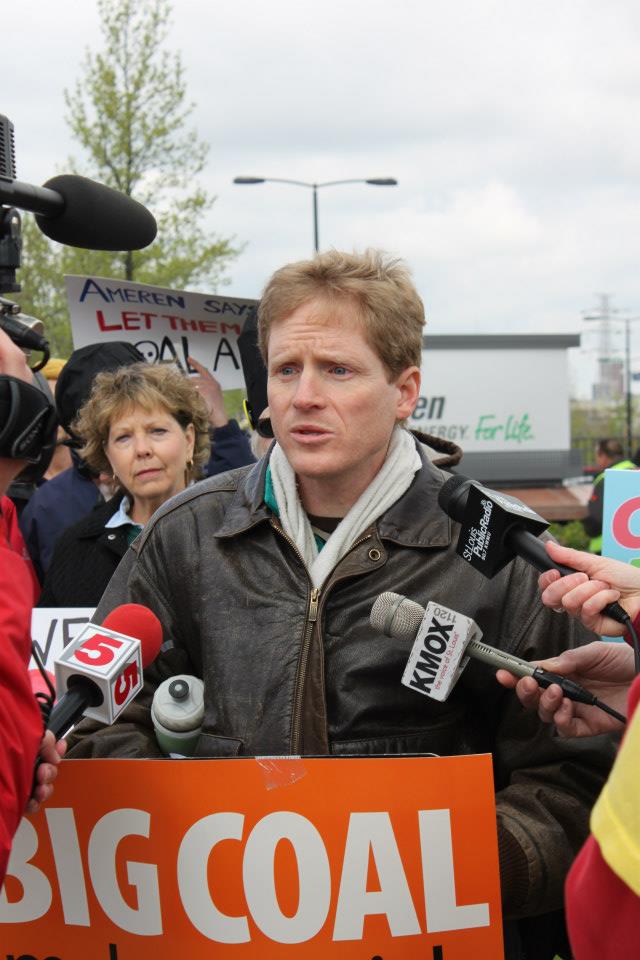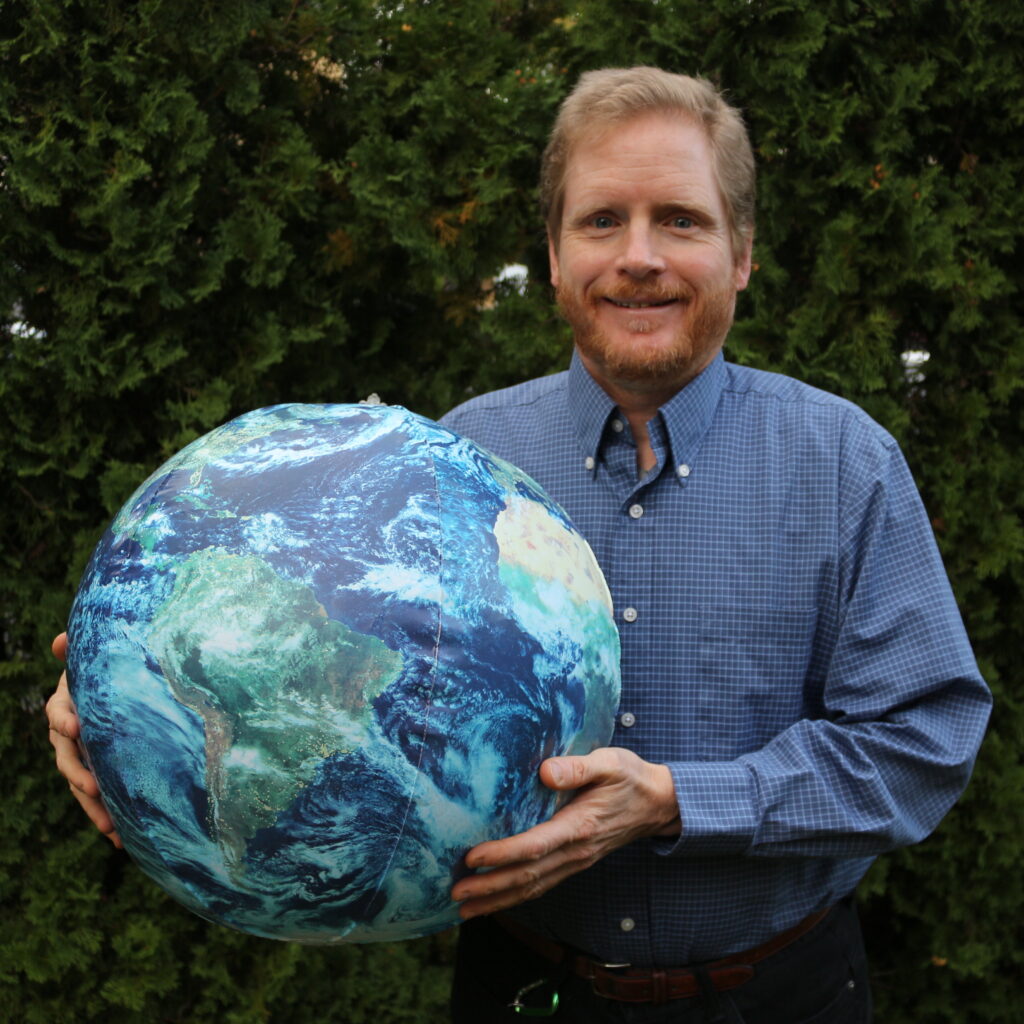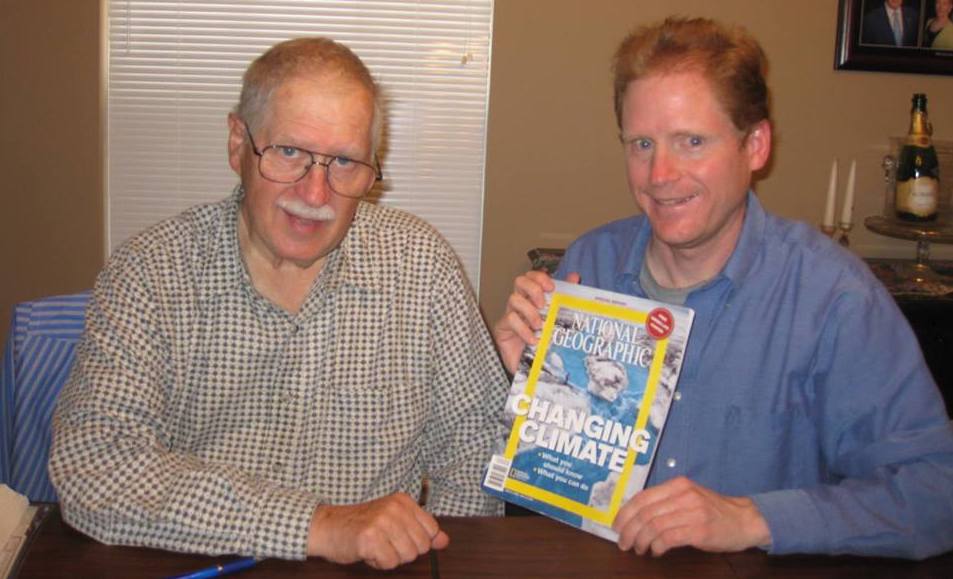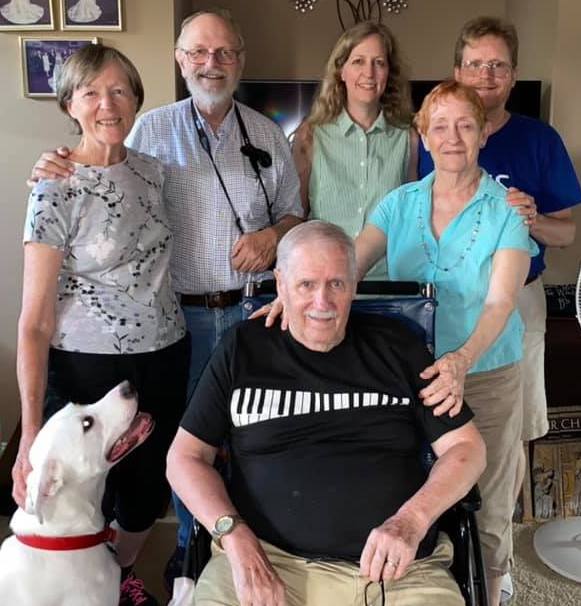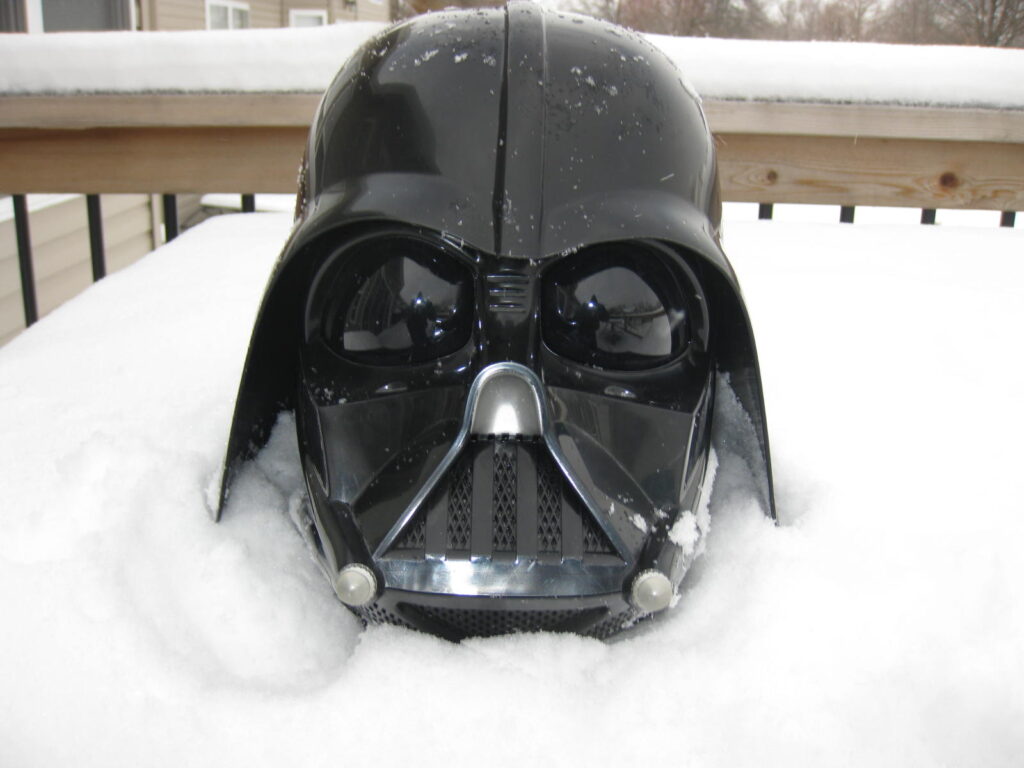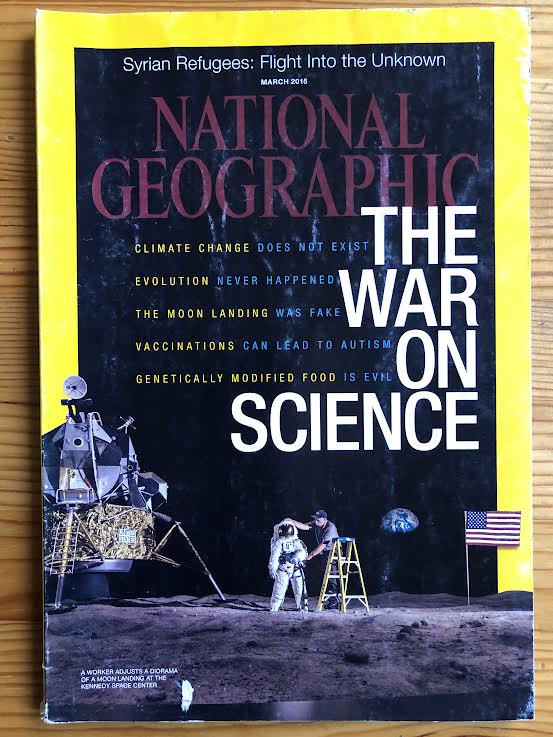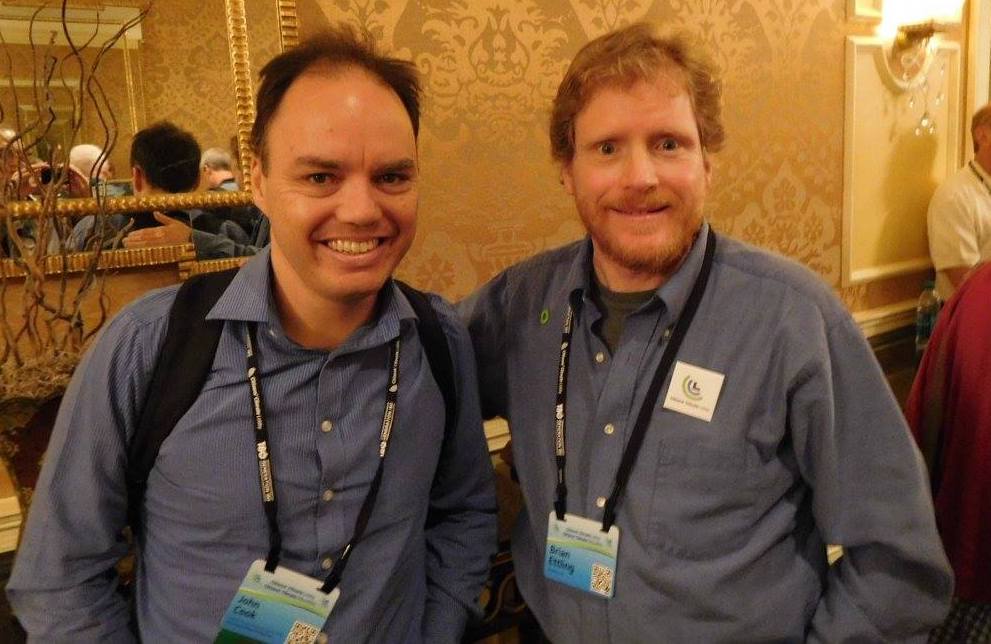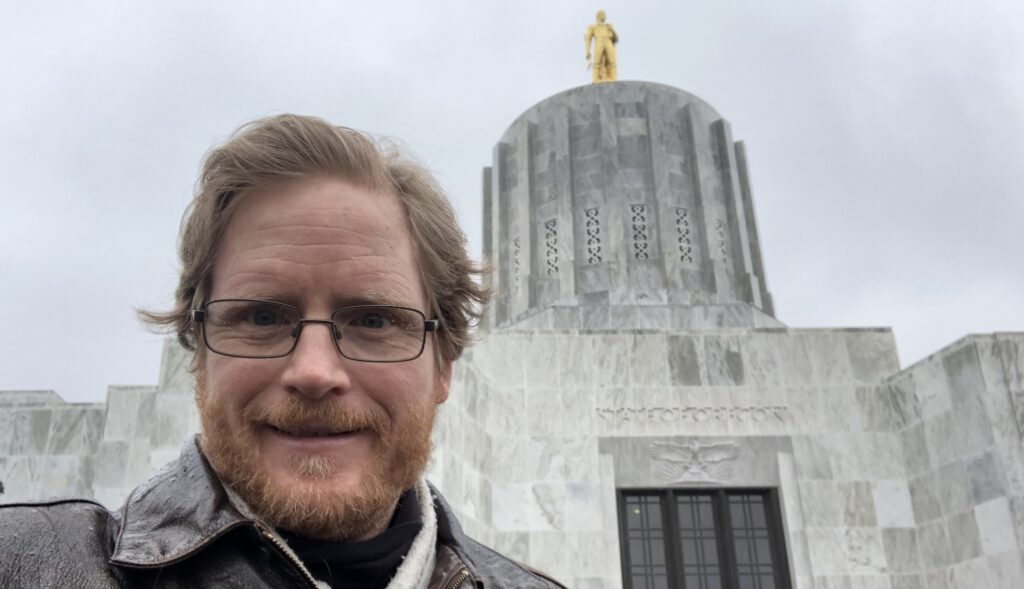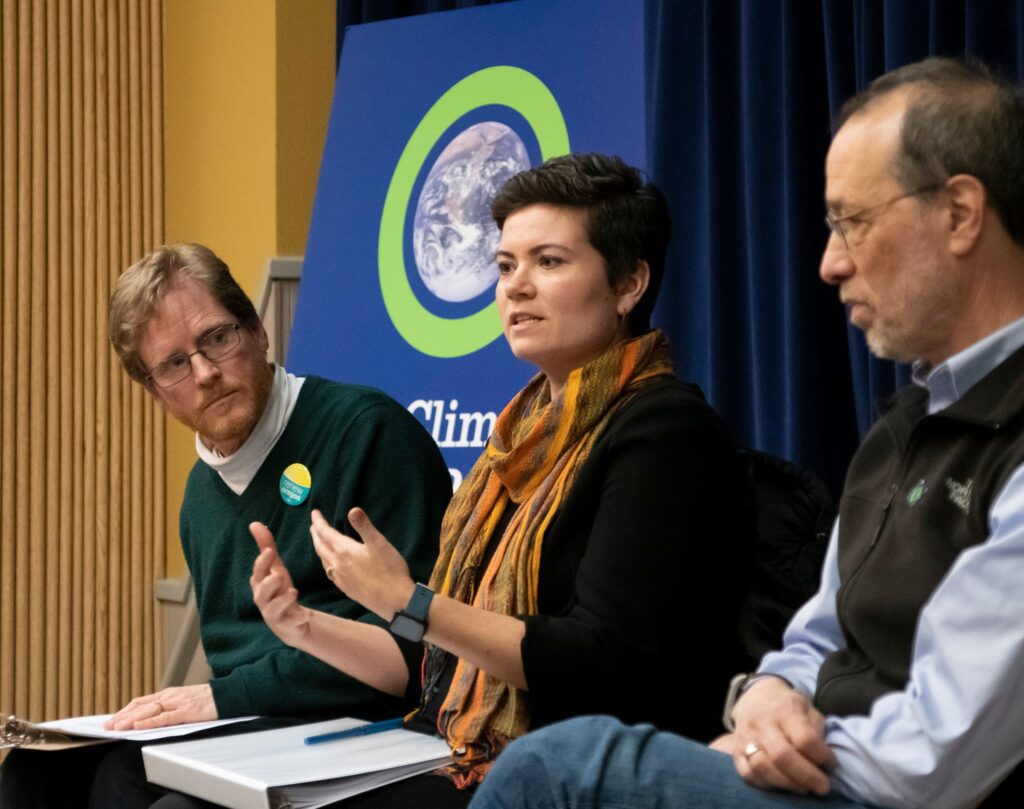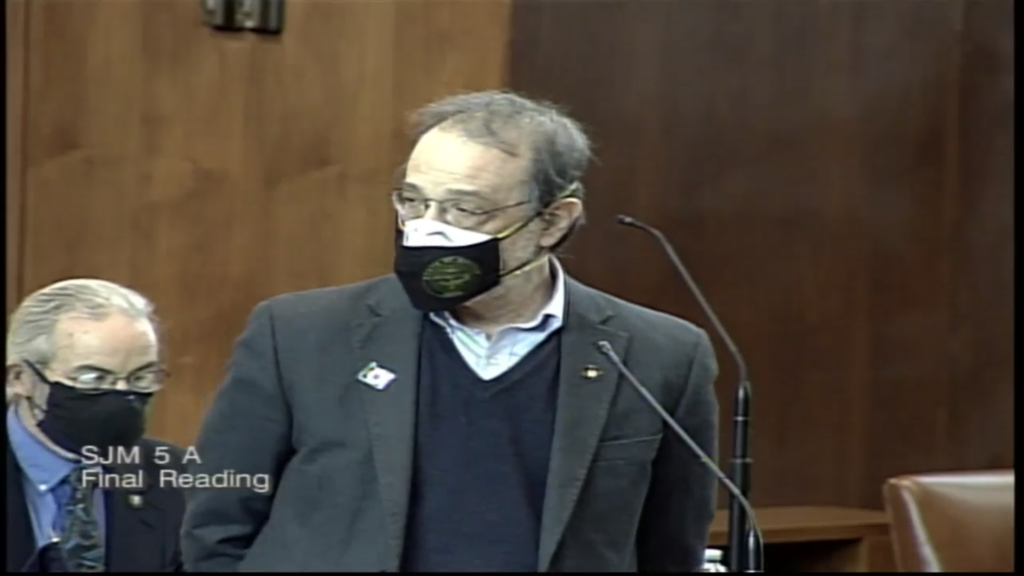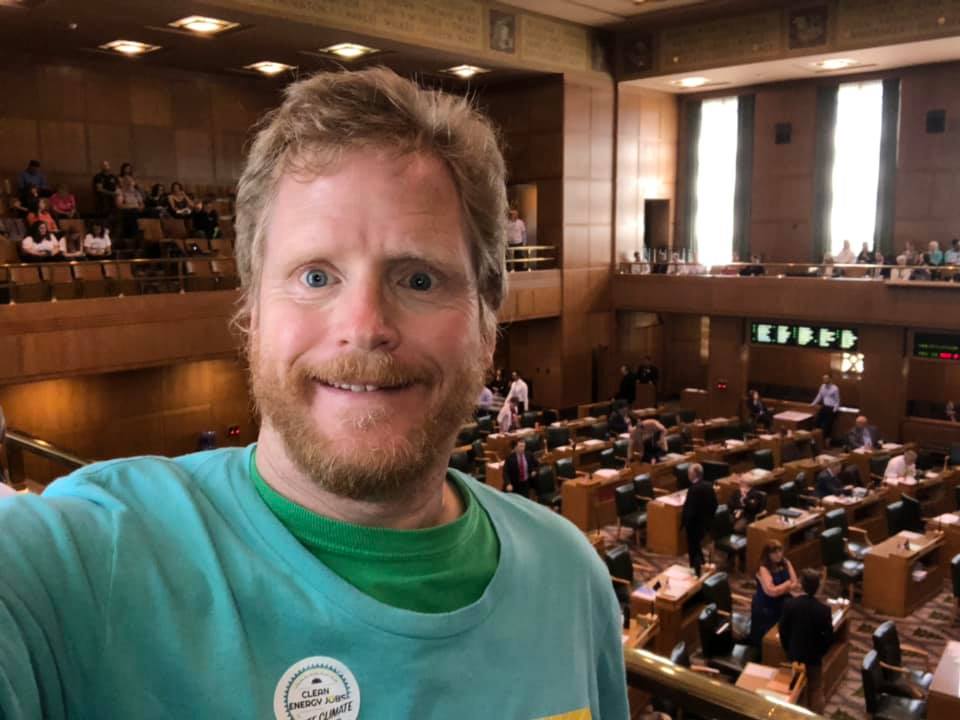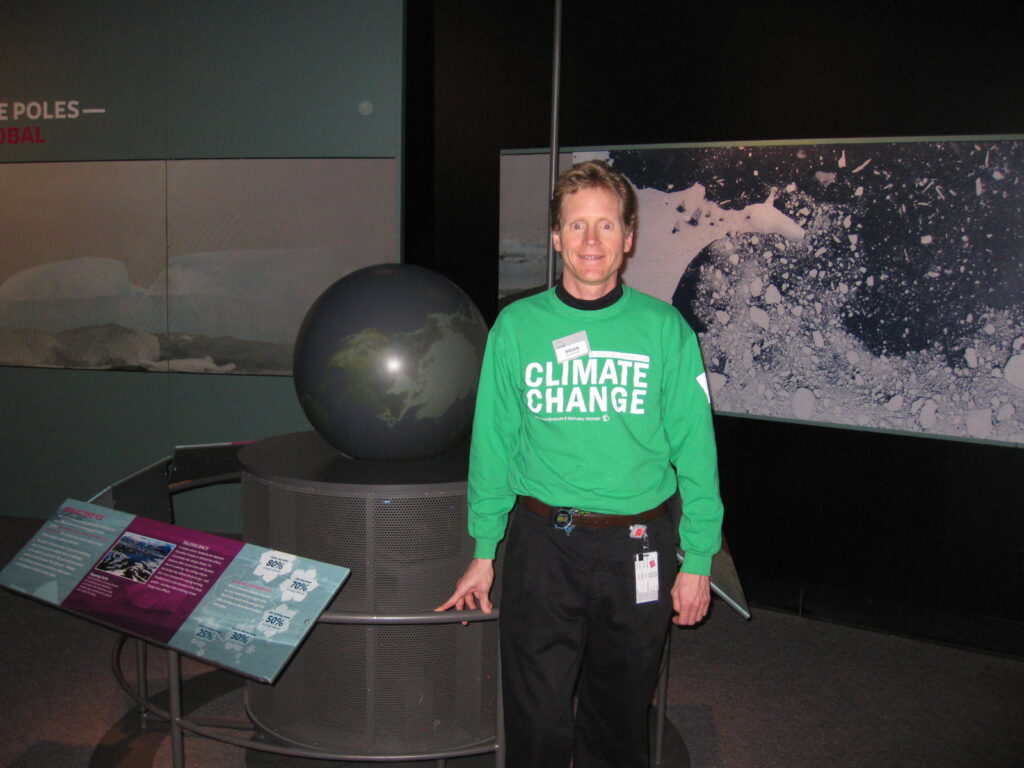
“I have never seen someone going to work so happy before,” said my mom. At that time, I was working at the climate change exhibit at the St. Louis Science Center in the spring of 2011.
My mom was 100% correct. This was a dream come true to work at this temporary traveling exhibit, Climate Change: The Threat to Life and A New Energy Future. This exhibit was open to the public at the St. Louis Science Center from January 9 to May 15, 2011. For years, I had been very worried about climate change, so this was an ideal and serendipitous fit for me to me working at this exhibit in my hometown of St. Louis, Missouri. The only downside that it was a temporary museum exhibit, and I would never find a job like that again.
Growing up by forests and nature in Oakville, Missouri
I was born in St. Louis, and I am a 1987 graduate of Oakville High School in south St. Louis County. Even more, my family has lived in the St. Louis area for several generations.
In 1973, my parents moved to Oakville, Missouri, located at the most southern part of St. Louis County. I really fell in love with the nature by our house. Oakville had a very sleepy almost rural feel to it back then. We were one of the first houses built on our block in our subdivision. During the summers if we were outside, we could really hear the crickets in the forests around our house and an occasional owl. At night, the roads would get quiet. Sometimes, we could even hear the barge traffic on the Mississippi River, which was less than a mile away as the crow flies.
A big forest bordered the back side of the house another forest was across the street behind those houses. Heck, the name of the subdivision was Black Forest, which seemed to perfectly fit the feel of the area. It was heaven to explore these forests as a kid to follow the creeks as far back until the vegetation became too unforgiving and the rocks seemed too treacherous to explore. Up the street, a horse farm bordered our cul-de-sac. It was fun to stare at the horses and the big rolling field where they comfortably called home.

My parents never seemed to mind that I was exploring the woods and neighborhood alone or with friends, as long as I came home in time for dinner and arrived home when it was dark. They were busy working, socializing with neighbors and extended family, barbequing, working on the house and doing their thing. They seemed to like my spirit of adventure to be outside. My parents and grandparents would get a kick out of me telling them that I hopped on my bike to chase the occasional rainbows. I could never reach that mythical pot of gold at the end of the rainbow that I thought was real.
It was a magical childhood with a home that seemed like it had a connection with the outdoors. Our neighbors all knew each other. All of us did not know what to do when I cow became loose on our block one Friday evening. The cow had a bell tied around its neck announcing its presence to all of us. That ringing sound brought us all out of our homes. It dumbfounded us about what to do about the cow. We debated about calling the Police. The cow didn’t know what to do either. It was very scared. It howled in such a way that it wanted to go home until a nearby farmer sheepishly retrieved it that evening.
After we moved there, houses sprung up little by little on our street. One time, a big pile of dirt was in front of a house under construction put there by the construction crew. On another summer evening, a large snake laid on top of the dirt mound. Again, this brought the neighbors and our family out of the house with fascination. The snake looked beautiful yet threatening. Like the cow situation, we did not know what to do about the snake either. We admired it, yet we didn’t want it to harm anyone. The kids wanted to get close to poke it, but the parents forbid. The snake got quite irritated as the center of unwanted attention by all of us. Finally, it figured that it had to slither away from us, and it did.
During a couple of weekends during the summer, my parents would take the family on church camping trips in state parks in the Missouri Ozarks, that would be a couple hours of driving from home. My parents would be so happy to visit with their friends and fellow adults that they did not notice when I would slip away to hike in the woods by the campgrounds. I felt like I was in my full glory discovering a new forest, riparian area, or just a new natural area away from home. These camping trips in Missouri also brought a lifelong love for nature for me that eventually inspired me to work as a park ranger.
As I went into high school, I would enjoy riding my bike or walking several miles to the nearby parks of Cliff Cave and Bee Tree Parks. Once there, I loved to admire the wide and historic Mississippi River, that fellow Missourian Mark Twain had made so famous. No, I did not read his books. However, my parents took our family to see the 1973 film The Adventures of Tom Sawyer at a nearby drive-in theatre. The movie scared me badly, especially the scenes with the villain named Injun Joe. At the same time, I found myself carrying on the spirit of Tom Sawyer or Huckleberry Finn. It was heaven for me to hike in the woods, up and down the river bluffs and down to the river shoreline. The huge barges carrying coal and different agricultural products up and down the river now would pass by now and then. They were very impressive to watch from the top of the bluffs or from the river’s edge.
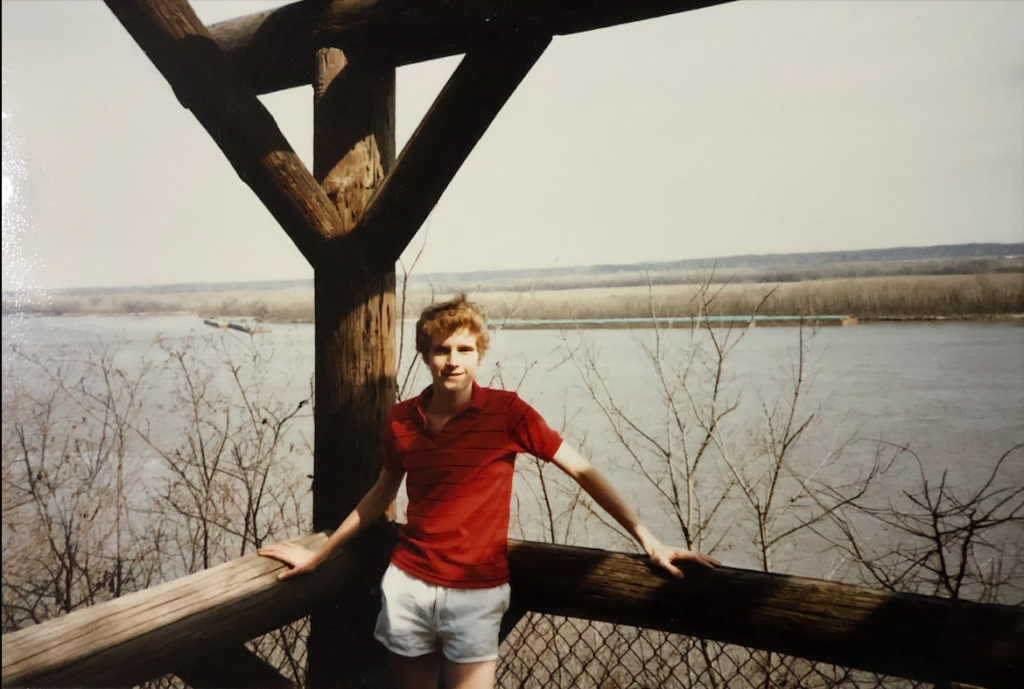
I loved going to these parks in all seasons and different times of day to admire the lushness of the trees full of leaves in the summer. Winter brought stark barren trees with no leaves in winter and the sight of snow on the ground sometimes. In autumn, the bright fall colors were on the trees and I loved kicking up the piles of leaves covering the trails. The spring was an enchanting time of cooler comfortable temperatures yet hinting that summer was coming with some flowers blooming and the trees budding in their spring glory.
I could not get enough of this nature by my home. It was my happy place. It was where I wanted to be more than anywhere. In high school, when I was finally old enough to go on dates, I went on one of my first double dates to Bee Tree Park in Good Friday, 1986. It was a fantastic day just to hang with my best friend, Scott, his girlfriend Trisha at that time, and a gal that I liked then Tammy. Scott barbequed for us, and I led us on hikes down to the Mississippi River and back.
I have always felt sad for children that were not able to connect with nature like I was growing up in Oakville, Missouri in the 1970s into the 1980s. My wish is that every child could have had a childhood as wonderful as mine. I was so carefree exploring the woods by my childhood home and nearby parks that I did not want to grow up or do anything else.
Discovering Climate Change for the first time while living in St. Louis
By 1988, it was time for me to move on. I was enrolled to start attending William Jewell College in Kansas City, Missouri in the fall. I loved the woods and local parks by my home. At the same time, I dreamed of seeing and journeying to iconic places elsewhere in the United States. I had pictures on my closet door of New York City, the Redwoods, Yosemite National Park, the Golden Gate Bridge in San Francisco, Niagara Falls, the Rocky Mountains, downtown Chicago, and a large poster of Mt. Shuskan in North Cascades National Park, Washington.
I wanted to enjoy and relish those nearby parks of Cliff Cave and Bee Tree during my last summer before starting college and eventually following my dream to live in other parts of the U.S. Unfortunately, Mother Nature had other ideas that summer. The summer of 1988 had a terrible heat wave and drought for the Midwest. The Mississippi River dropped to the lowest level I had ever seen in my life so far. The drought and heatwave made national news and a topic of conversation on people’s minds that year. It just did not seem natural. Something seemed off with the nature that I knew from my home area.
My fears intensified that summer when Dr. James Hansen, then Director of the NASA Goddard Institute for Space Studies, rang the alarm bell. He testified to Congress in June 1988 that “It is time to stop waffling…(T)he evidence (of global warming) is pretty strong.” As a 20-year-old living in St. Louis MO at that time getting ready to start college, I will never forget reading about Dr. Hansen’s testimony and seeing it on TV. With this extreme heatwave and drought that summer, I saw with my own eyes and took pictures of the Mississippi River at record low levels. Dr. Hansen’s words seemed like an eerie warning from what I was seeing around me then.

After what I saw that summer and learned about global warming, I felt a bit more assured that fall when global warming became a topic during the 1988 Presidential campaign. Republican Presidential candidate George H.W. Bush promised that if he was elected President, he would counter ‘The greenhouse effect with the White House effect.’ I was a Reagan Republican then, so that sound bite messaging sounded good to me then.
When I was in college, I did not think much about global warming when I was studying business administration in college. The exception was when progressive students in my dorm would bring up news about a large iceberg breaking off the coast of Antarctica ‘the size of Rhode Island or the Island of Manhattan’ to remind me that President George H.W. Bush was not doing much about global warming when he was President. I did not say much, but deep down I knew they were correct. President George H.W. Bush did not seem to do much about this problem as President. The exception was that he did attend Earth Summit held in Rio de Janeiro United Nations climate in 1992, which did broker some important agreements for that time, as the creation of the United Nations Framework Convention on Climate Change (UNFCCC).
Finding my climate change passion while working in the national parks
When I graduated from William Jewell College in 1992, I said goodbye to Missouri and started working in the national parks. In 1992 and many years afterwards, I spent my summers working in Crater Lake National Park, Oregon and my winters in Everglades National Park, Florida.
In 1998, I started giving ranger talks in the Everglades. Visitors then asked me about global warming. Visitors hate when park rangers tell you, “I don’t know.” Soon afterwards, I rushed to the nearest Miami bookstore to read all I the scientific books I could find on climate change.
I learned about sea level rise along our mangrove coastline in Everglades National Park. Sea level rose 8 inches in the 20th century, four times more than it had risen in previous centuries for the past three thousand years. Because of climate change, sea level is now expected to rise at least three feet in Everglades National Park by the end of the 21st century. The sea would swallow up most of the park and nearby Miami since the highest point of the park road less than three feet above sea level.
It really shocked me that crocodiles, alligators, and beautiful Flamingos I enjoyed seeing in the Everglades could all lose this ideal coastal habitat because of sea level rinse enhanced by climate change.
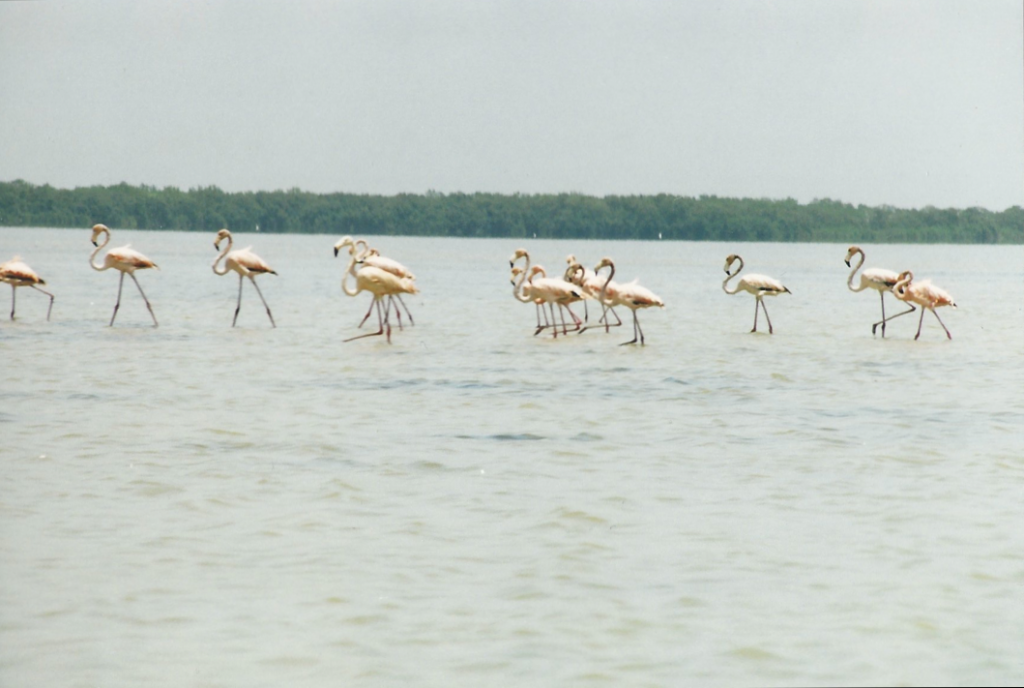
I became so worried about climate change that I quit my winter job in Everglades National Park the year in 2008. I started spending the winters in St. Louis with my family to see if I could start organizing for climate action. I did not know how I was going to do this, but I was still determined I was going to make a difference to reduce the threat of climate change.
In the fall of 2009, a good friend and fellow park ranger at Crater Lake National Park knew I did not have any plans for the winter once I reached St. Louis. He then talked me into housesitting at his mother’s house in Ashland, Oregon for the winter. His mother, Barbara, decided by buy an RV and travel across the U.S. He and his mother desperately needed someone to watch her home and take care of her cat. At that point, I was unsure what to do with my life especially with this climate change mission that I had.
By 2009, for seventeen years, I had worked as a seasonal park ranger at Crater Lake National Park, Oregon in the summers. Everglades National Park, Florida was where I worked in the winter up until 2008. I absolutely loved my job as an interpretation ranger at Crater Lake giving ranger talks, guided hikes, leading evening campfire talks, and narrating the boat tours. I loved every minute of standing in front of an audience, in these iconic places sharing about nature.
Pursuing my climate change calling in Ashland, Oregon and St. Louis, Missouri
When I arrived in Ashland, Oregon in the beginning of October 2009, I had too much free time. I had no plans, except to housesit. Ashland was very beautiful to walk around town and take pictures of the fall colors. Yet, I wanted to do something more for climate action. I had no idea what. I looked into studying at Southern Oregon University at their Masters of Business sustainability program. However, the professors and program did not seem to be a good fit for me.
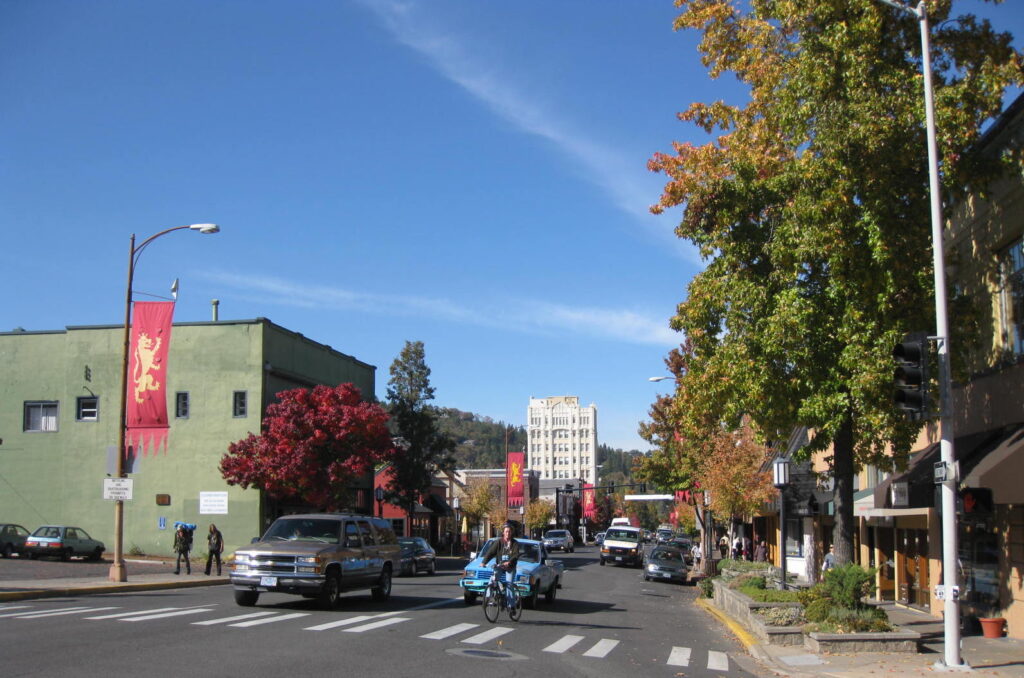
I then went to see my friend Naomi Eklund in Ashland who is a professional life coach. During our conversation, Naomi became impatient with my hemming and hawing of wanting to do something to make a difference to reduce the threat of climate change. I kept giving her nebulous answers of my life’s vision and it was making her exasperated.
Then she pressed me to answer her directly: “What do you really want to do with your life?”
“Fine!” I yelled with emphatic exasperation, “If I could be anything, I would like to be the ‘Climate Change Comedian’!”
My friend Naomi nearly fell out of her hear laughing and responded: “That great! I would like you to go home and grab that website domain right now!”
I went home immediately and bought the domain, www.climatechangecomedian.com.
Little did I know that my time in Ashland would soon be over. Barbara, the owner of the home where I was housesitting, decided that RV living was not for her. She returned to Ashland to live in her home around Thanksgiving. She then decided she did not want me living in her spare bedroom, so I was needed to find a different place to live for the winter. I loved Ashland, but it did not feel like home for me. I felt like I got everything I needed in those two months in that conversation with Naomi. My parents moved into a new home in St. Louis. They wanted me to come stay with them for the winter.
I was excited to do another cross-country drive like my previous years going back and forth between Crater Lake and the Everglades, stopping in between to see family in St. Louis. This trip, I routed myself to visit my friend Dana in San Francisco. I would then drive down California Hwy 1 along the Pacific Coast to see the Bixby Bridge and Hearst Castle. I then visited my friend Stephanie at Death Valley for a couple of days. I moved on spent the night in Las Vegas. I then stayed with my friends Steve and Melissa in Flagstaff. They talked me into hiking down into the Grand Canyon by myself, one of the best experiences of my life.
During this road trip, when I visited my friend Dana in San Francisco, I met up with her and friends for delicious sushi in the downtown area. Dana and her friends had an evening public holiday reception at the California Academy of Sciences museum, located from the heart of Golden Gate Park. This was a stunningly beautiful museum open in the evening for this community reception. In the middle of this museum, I noticed an exhibit, Altered States: Climate Change in California.
I was very impressed with the information and educational displays about climate change. I made a mental note that I wanted to eventually work in a climate change exhibit like this.
The winter of 2010 in St. Louis, Missouri turned out to be very productive for me. A family friend, John, helped me create my website, www.climatechangecomedian.com, which is still an active website to this day. My sisters booked me to give ranger/climate change talks at my nieces and nephews schools, and for their boy and girl scout groups. I created my own climate change PowerPoint talk, Let’s Have Fun Getting Serious about Solving Climate Change.
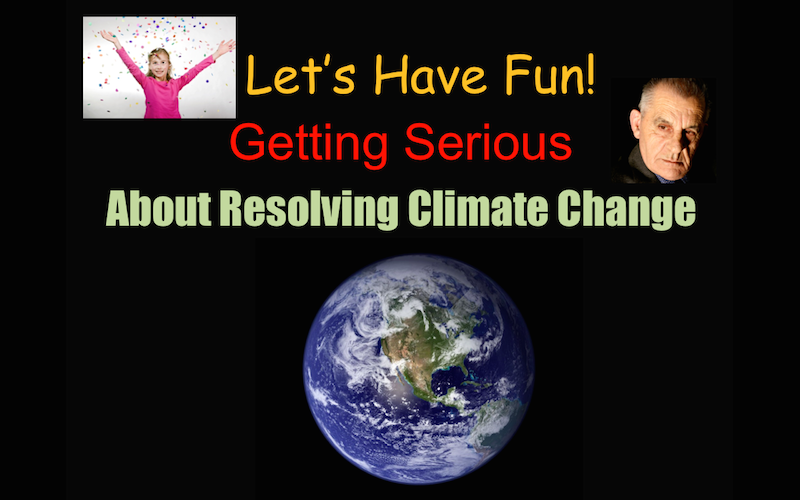
I started sharing this PowerPoint talk with friends in St. Louis. I then showed it with fellow rangers at Crater Lake National Park in the summer of 2010.
Unfortunately, during the summer of 2010, I got involved in a relationship with a female ranger at Crater Lake National Park that distracted me from pursuing my climate change path. It was a very blissful summer relationship at Crater Lake. However, in the fall and winter, it turned into a nightmare for each of us. Our personalities constantly clashed. No matter what I tried to twist myself into a knot to please her, I was never good enough for her. The relationship left me more depressed as I poured more energy into it. One of the biggest issues is that she could not see that I had any life direction, even though I kept explaining about my life’s mission to make a difference to act on climate.
She finally broke up with me in early January 2011. I was totally heart broken. It took me many months to try to heal from that relationship. In January 2011, I needed something to get my mind off what had happened. I briefly volunteered for the Missouri Botanical Gardens for their Earthways Center, leading a Historical House Tour program for them in February 2011.
In February 2011, I joined South County Toastmasters to improve my public speaking skills and follow my ambitions to be a good climate change communicator. That same month, I started writing this blog and posted two entries that month.
Working at the Climate Change Exhibit at the St. Louis Science Center
In early 2011, I drove around St. Louis trying to find something for me, especially a job. One day, I noticed a huge banner by the St. Louis Science Center for their temporary Climate Change Exhibit. I also heard radio advertisements for it on the local NPR (National Public Radio) station KWMU. After it dawned on me that the St. Louis Science Center had a climate change exhibit, I made it my mission in life to go see it to try to work there. I did not care if I was just going to volunteer or get paid. I had steel determination that I was going to work in that exhibit.
When I visited the exhibit, I talked to a staff person working at the exhibit. He encouraged me to apply. He heard that there was an opening and advised me to apply fast. I immediately went home and applied online. To my surprise, I soon got an interview. It felt like I had the interview went perfect. The St. Louis Science Center offered for me to start on March 14, 2011. My job title was a Special Exhibits Assistant at The Climate Change Exhibition. After seeing the great climate change exhibit at the California Academy of Sciences over a year earlier, plus seeing this amazing exhibit at the St. Louis Science Center, I was ecstatic to be working at a climate change exhibit, especially in my hometown of St. Louis.
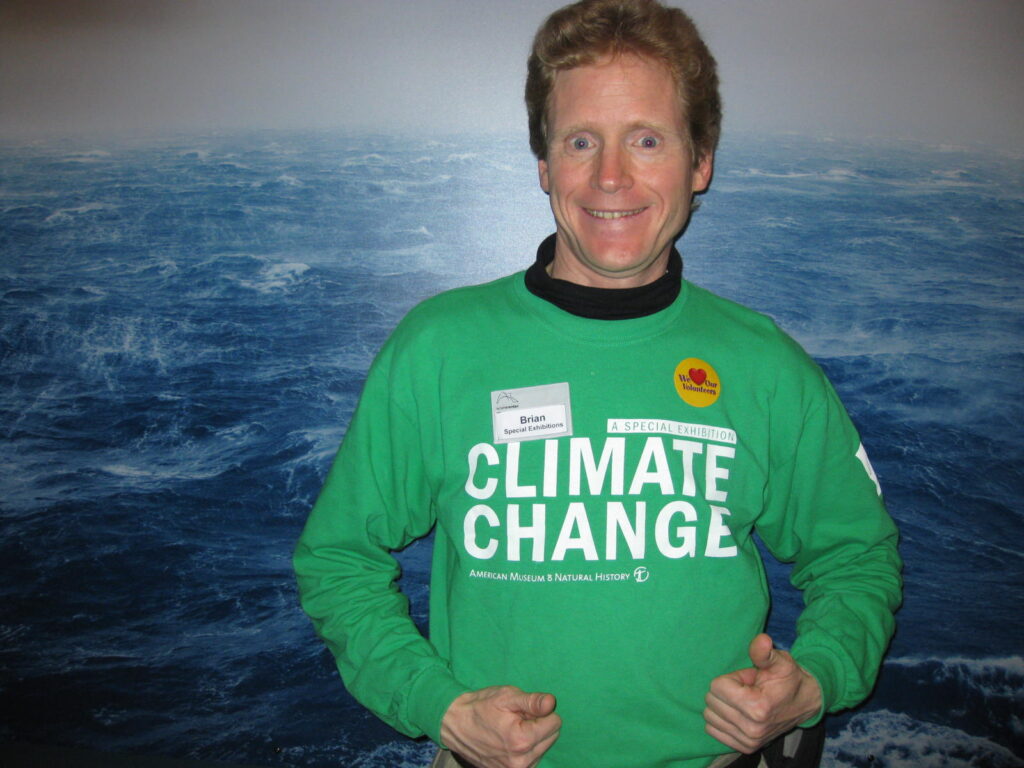
It was such a Zen, peaceful and blissful experience to work at this exhibit. One of the first things I noticed was that not that many Science Center visitors were entering this exhibit. Many times, it seemed like the exhibit was like an empty tomb, especially on weekday mornings. The only sounds you would hear would be some of the video displays on constant loops. I didn’t like standing around so I would walk around the exhibit for what seemed like several times an hour. It only took about 5 to 10 minutes to walk through the exhibit without stopping.
Typically two other staff members, besides me, wearing our long sleeve green Climate Change St. Louis Science Center shirts, roamed through the exhibit. We would be eager to talk to someone or anyone. The Science Center wanted us to engage with the attendees. However, many visitors just wanted to walk through the exhibit at their own pace and absorb the exhibit on their own without any interruptions. The staff would end up chatting with each other quite a bit, which was really frowned upon by the Science Center supervisors. I would try to quickly end the conversation if I saw a Science Center management type person because they really did not want us to be “fraternizing.”
When I had a chance to chat with my co-workers, they told me that sometimes a few visitors would come to the St. Louis Science Center looking to argue with staff. This would happen when the Science Center would run temporary science exhibits for what some members of the public and media perceived as controversial, such as the previous exhibit on Charles Darwin and then the climate change exhibit. The staff really did not want to argue with those visitors. Even more, the Science Center management did not want them getting into a harsh exchange with those visitors. Those employees were trained to just share with those contentious visitors that the Science Center was there to just promote science. That’s it. My co-workers advised me to do the same if I encountered any argumentative visitors about climate change. Fortunately, I don’t remember getting much hostile visitors.
We had very special cleaning cloths and solutions to keep the displays looking clean and shiny. We had very specific instructions on which cloths and solutions to use so we would not scratch up the displays. I had a tremendous sense of pride working in this exhibit after years of working in something like this. Thus, I had a lot of pride cleaning the displays before and after the Science Center would open each day. I would also clean during the day if the exhibit was not getting much foot traffic.
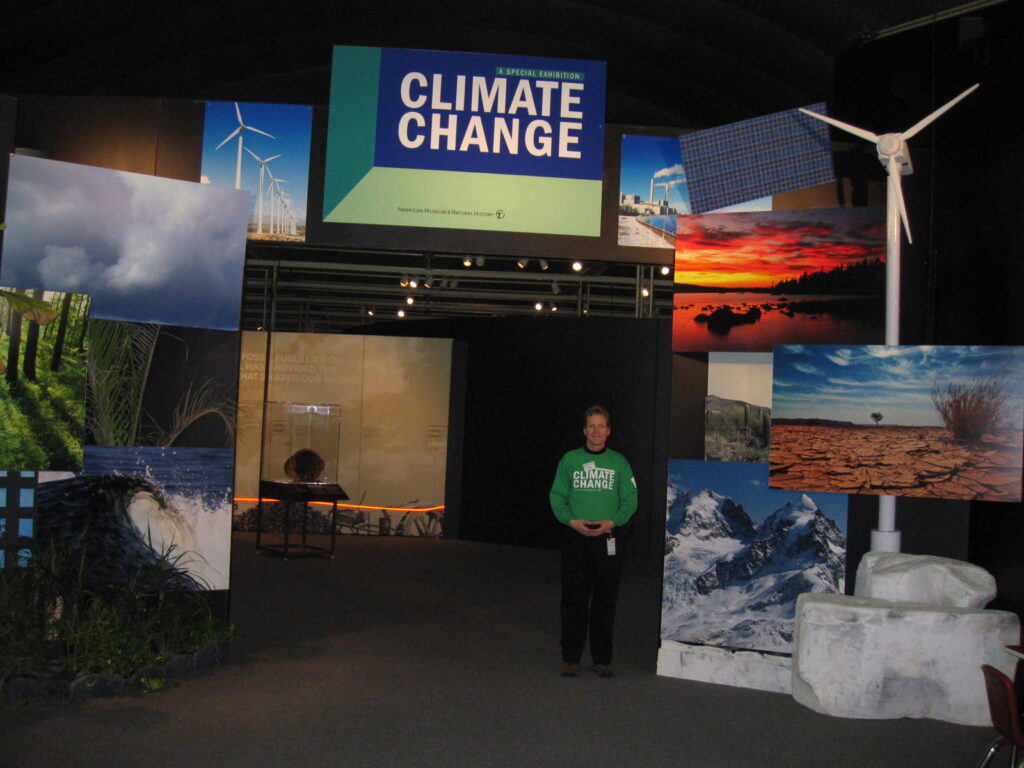
I loved briefly chatting with the attendees at the exhibit if they were open to chatting with me. Nearly all the conversations were very positive. I did have a few cranky people that would want to nitpick about some of the scientific statistics posted on the exhibit displays. However, the positive conversations way outweighed the few argumentative people.
Sadly, some people, including families, would just walk through the exhibit without stopping. To those folks, I would stop to ask them, “How are you doing? What do you think of the exhibit?” Sometimes those folks would want to chat. Other times they did not. I didn’t care if they wanted to chat or not. I wanted them to think about climate change.
The Most Rewarding Aspects about working at this Climate Change Exhibit
From my positive interactions with the attendee participants and my pride in doing extra cleaning to keep the exhibit looking pristine, my co-workers seemed to take notice and really seemed to like working with me. One day my co-worker Eli humbly said to me out of the blue, “Brian, you make me a better person.”
That was one of the nicest compliments anyone had given me. I felt very touched.
Because the exhibit was often devoid of visitors, especially during weekday mornings and late afternoons, I started taking notes in the exhibit. I meticulously wrote down in my notebooks every word of text on the exhibit displays and videos. My supervisors and co-workers never seemed to mind that I did this as long as I engaged with visitors once they entered the exhibit. Before I knew it, I filled up four notebooks of my writings quoting everything in the exhibit. I still have those notebooks to this day.
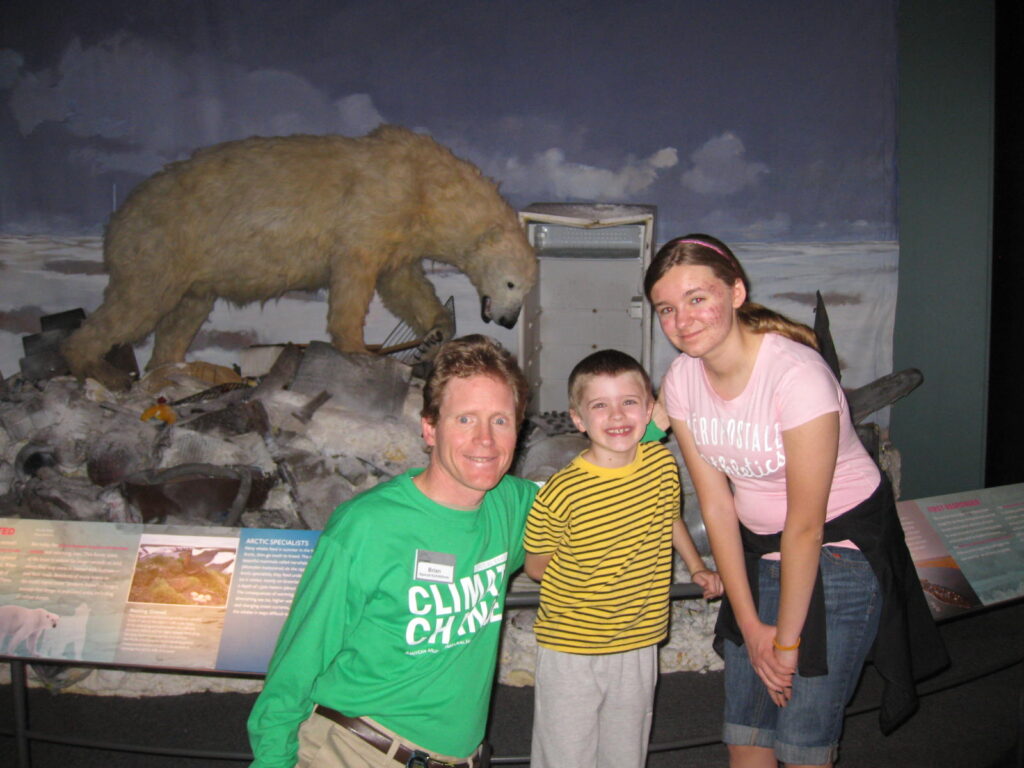
Before I worked in the exhibit, I felt like I did not know much about climate change to be able to converse about it as a park ranger, Toastmaster, public speaker or even in casual conversations with friends and community members. This exhibit was a huge gift in helping me feel more knowledgeable and confident to speak about this subject. I will always be grateful for the two months I had working at this exhibit.
My parents enjoyed visiting the exhibit. They were so proud to see me working there. At one point at home, my mom said to me, “I have never seen someone going to work so happy before.”
One day, I saw my older sister at the exhibit. At that time, she worked as a teacher at a St. Louis area Catholic high school. The teachers, including my sister, led the students on a field trip of the St. Louis Science Center, which happened to include this Climate Change exhibit. When these teachers and students entered the exhibit, they had the tendency like all the other teachers and students I saw to just briskly walk through the exhibit without giving it much thought.
I was not going to let that happen though when I saw students and teachers. I would abruptly stop the students and teachers at the giant piece of coal near the exhibit entrance. I would ask the students why the piece of coal was there. I would ask them what the significance of that giant piece of coal was. Most of the time they would not have an answer since I caught them off guard. I would point to exhibit display texts in that area that coal is what funded the industrial revolution. It was the primary source of energy over the 200 years.
Then, I would ask the students if coal is good or bad for humans. If the students answered me, some would respond it was good and a few other students would say that it was bad. I then would answer that it was both. Coal enabled us to have the technology to enrich our lives. However, coal, oil, and natural gas were bad because they contributed to climate change. Hence, the exhibit they were visiting.
I encouraged the students to think about that as they wandered through the exhibit. I then urged them to think about ways we can be less dependent on coal and other fossil fuels in the future to reduce the threat of climate change. The teachers always seemed to be impressed that I was willing to go out of my way to engage with the students. After I engaged with the students, they tended to then go through the exhibit at a slower pace and looked to be absorbing more of the information. The day my older sister was there she did not say anything to me. However, she did give me a big smile. She seemed very proud to see me there. She looked delighted that I took time to engage with the students at her school.
My parents made two additional trips to bring their grandkids, my nieces and nephews to this exhibit. It was such a thrill to see them and for them to see me at this exhibit. At that time, my oldest niece, Rachel, was 14 years old and her brother/my nephew Andrew, was 8 years old. My other niece Bailey was 11 years old and her brother/my nephew Sam was 9 years old. Andrew liked hamming it up in front of the mirrors at one part of the exhibit.
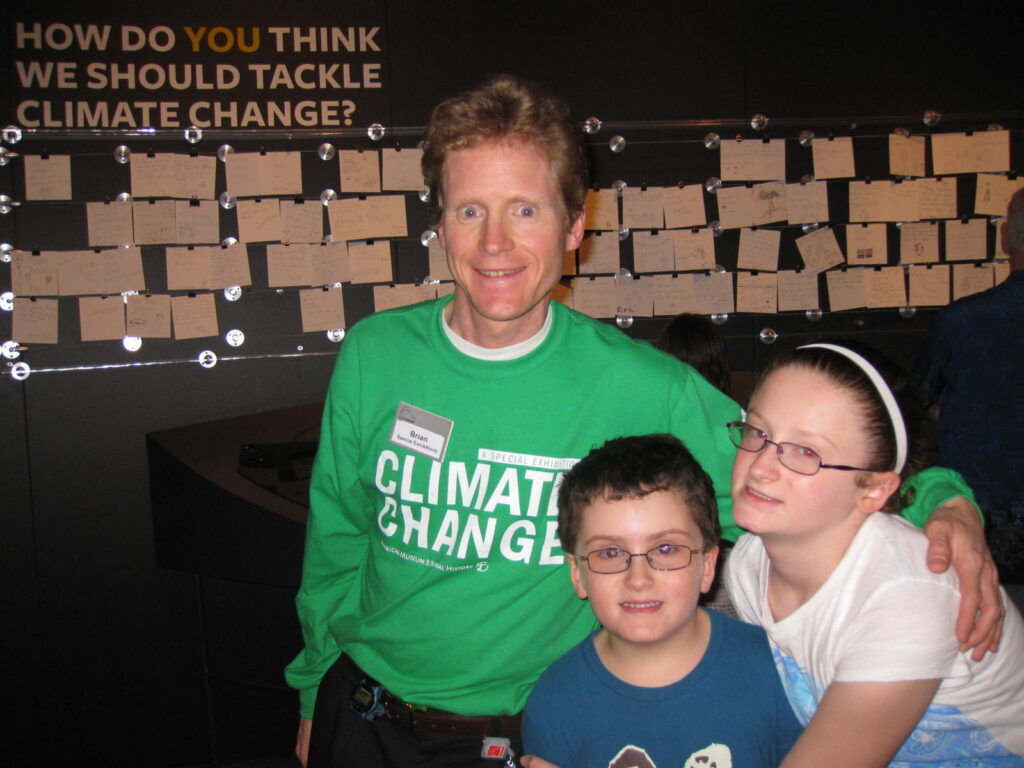
Another part of the exhibit had index cards to fill out for people to write their solutions to reduce the threat of climate change. My nephew Sam wrote “I recycle.” It was fabulous for me to get my pictures with my nieces and nephews at this exhibit. One of the biggest reasons for me to work at this exhibit and all of my climate actions over the years was to try to fight for a better future for them. I hope they will think about me someday that I was trying to do all the actions I could for a better world for them.
The exhibit, Climate Change: The Threat to Life and A New Energy Future.
Just outside the entrance of the exhibit, as well as on the website, it was written:
“Climate Change: The Threat to Life and A New Energy Future was organized by the American Museum of Natural History (AMNH), New York, in collaboration with the Abu Dhabi Authority for Culture and Heritage, United Arab Emirates, The Cleveland Museum of Natural History, The Field Museum of Chicago, Instituto Sangari, São Paulo, Brazil, Junta de Castilla y León, Spain, Korea Green Foundation, Seoul, Natural History Museum of Denmark, Copenhagen, Papalote Museo del Niño, Mexico City and Saint Louis Science Center…
• Climate Change at the American Museum of Natural History is proudly presented
by Bank of America.
• Major support has also been provided by The Rockefeller Foundation.’
It was very intriguing for me that the exhibit was partially funded by Abu Dhabi Authority for Culture and Heritage and United Arab Emirates. No doubt the United Arab Emirates obtained their wealth from profits of the oil and natural gas extraction. I would have loved to know why they funded this exhibit. What was their motivation? It amazed me that no visitors or exhibit staff noticed who were the primary donors. Even more, Bank of America partially funded the exhibit while continuing to bankroll major fossil fuel projections in the U.S. and internationally that contributed to climate change. On top of that, it was also funded by The Rockefeller Foundation, which was established in 1913 by Standard Oil magnate John D Rockefeller. A man that struck it rich in the U.S. oil business in the 19th century.
The funding for the exhibit would probably raise eyebrows by some climate advocates. None of this bothered me because I thought it was a great and very scientifically sound exhibit on climate change. I was glad they funded it to educate the public about climate change. They were certainly helping me out to be more knowledgeable about climate change. Detractors would probably say that funding from Abu Dhabi, United Arab Emirates, Bank of America and even the Rockefeller Foundation amounted to “greenwashing” while all these organizations continued to majorly profit from fossil fuel investments. I would have never quarreled with someone if they had pointed that out, but no one ever did.
The Curators who created the exhibit were very prestigious scientists. Dr. Edmond A. Mathez was The Curator at Department of Earth and Planetary Sciences at AMNH, as well as a Senior Research Scientist at Lamont-Doherty Earth Observatory of Columbia University and Adjunct Professor at the City University of New York. Dr. Michael Oppenheimer was a top climate scientist at Princeton University. I knew of Dr. Oppenheimier from interviews he gave on climate change documentaries that I had watches years earlier. Thus, I had full confidence these scientists oversaw ever sentence and the smallest bit of details for this exhibit to make sure it conveyed the most accurate depiction of climate change science.
The exhibit was divided up into nine sections:
How Did We Get Here?
Climate Change Today
Changing Atmosphere
Changing Ice
Changing Ocean
Changing Land
Adaptations
Making a difference
A New Energy Future
When you would first walk into the exhibit, you would be greeted with a giant piece of coal in the middle of the first section. The first text to greet you stated: “Coal: The Rock that burns began a revolution.” Industrial Revolution, that is.
The next text box said: “Today, Atmospheric CO2 is at a level that has not been seen on Earth for at least 800,000 years and probably much longer.” You are then starting at a giant wall chart showing a big orange line progressing upward that “tracks the levels of carbon dioxide in Earth’s atmosphere over the last 400 years.”
The next text stated, “Coal provides 40% of the world’s electrical needs.” The following panel: “Energy derived from coal creates more CO2 than the same amount of energy from other fuel sources.”
The exhibit then connects the dots that humans burning fossil fuels, especially coal, over the past 250 years is currently causing climate change. The exhibit then had separate sections to demonstrate how human caused climate change is impacting our air supply/the atmosphere, melting the land and sea based glaciers, the ocean, and the land.
My desire to keep working and improve this temporary Climate Change Exhibit
In the Changing Ice section of the exhibit, I created short presentations for children on the importance of Arctic Sea ice for polar bears and us. I brought with me my Grandpa Ettling’s very old small handheld shaving mirror. According to my dad, this mirror was from around the time of World War I. In this Changing Ice section, not far from a stuffed polar bear, was a display using an overhead lamp that would shine on white blocks.
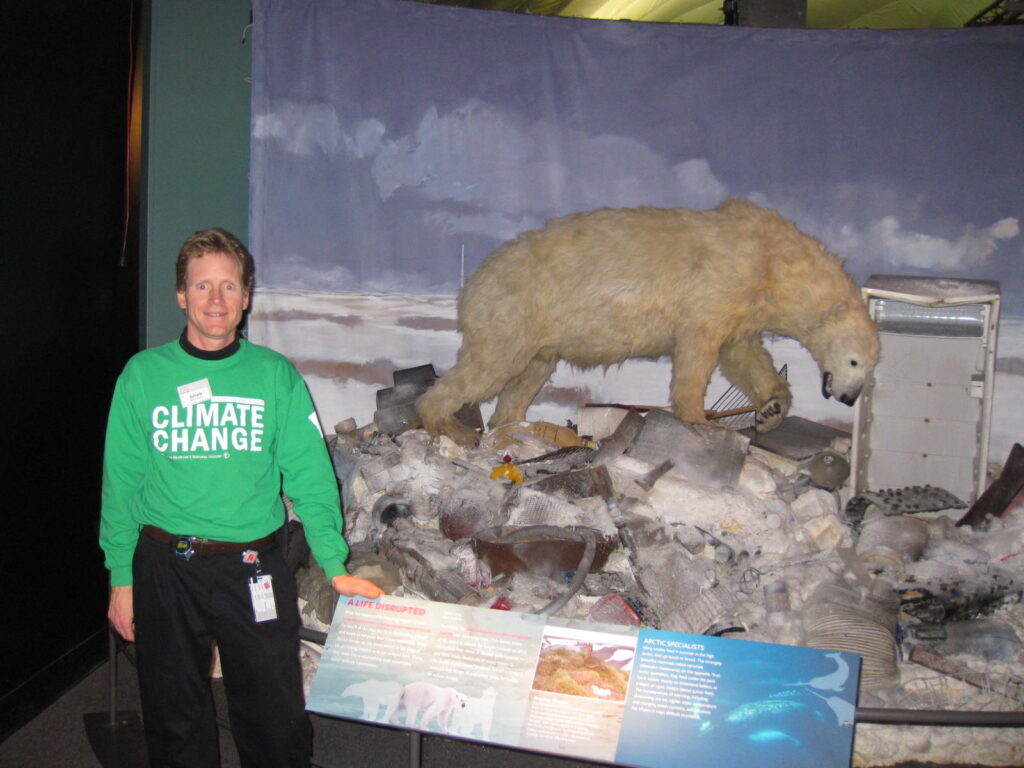
This display demonstrated the sun’s albedo, which is the amount of sunlight or solar radiation reflected by a surface. Bright white snow, such as the polar and Greenland sheets, reflect almost 90% of the sun’s light back to space, cooling the earth. According to the text at this exhibit, “The surface of the deep ocean is very good at absorbing heat. It soaks up heat almost as effectively as asphalt on a city street.” Unfortunately, with climate change, more of the reflective polar sheets are melting, reducing the sun’s albedo, and warming the oceans and the earth more.
I then shared with the students that less reflective ice reduces the icy areas for polar bears to live. Less reflective polar ice means more climate change for us. I even brought in a tennis or racket ball once or twice. I tried using the bouncing ball to get the students thinking about how the reflective nature of polar and glacial ice. The racket or tennis balls were more awkward to carry around. Even more, I worried about them bouncing too much and damaging exhibit displays. The bottom line was that I was willing to go above and beyond to engage with students and children visiting the climate change exhibit.
My willingness to engage with students using props caught the attention of some of the local teachers visiting the exhibit. Before I knew it, I was exchanging contact information with the teachers. In my spare time, I assisted middle school to high school teachers developing lesson plans for engaging their classes with the special climate change exhibit.
My Science Center supervisors and co-workers did not seem to mind that I experimented bringing props from home to have more meaningful engagement with the school children visiting the exhibit. I was extremely proud to be working at this exhibit. I really wanted to make the most of this opportunity.
From the first days that I started working there, I noticed this temporary traveling display was only showing at the U.S. museums of American Museum of Natural History (AMNH) in New York, The Field Museum in Chicago, and The Cleveland Museum of Natural History. That was just the U.S. version of the exhibit. If I remembered correctly, an additional international version of the exhibit existed traveling to international museums funding the exhibit, such as Instituto Sangari, São Paulo, Brazil; Junta de Castilla y León, Spain; Korea Green Foundation, Seoul; Natural History Museum of Denmark, Copenhagen; and Papalote Museo del Niño, Mexico City.
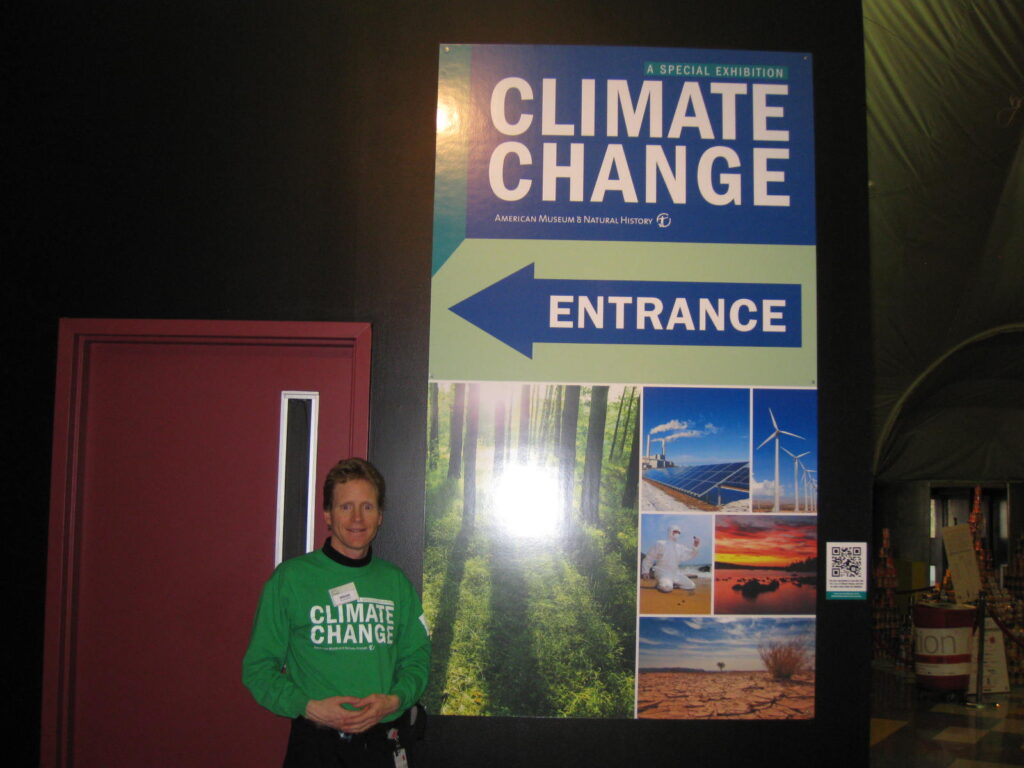
At that time, I remembered reading that the exhibit traveled from the Chicago Field Museum where it was displayed in 2010 to the St. Louis Science Center. When the exhibit closed in St. Louis in May 2011, it would then travel to the Cleveland Museum of Natural History, where it would during the summer. I reached out to the Cleveland Museum to see if they could hire me for when it ran there in during the summer, but they did not seem interested in hiring me.
In late June 2011, when I was working for the summer at Crater Lake, I had a phone meeting with Dr. Michael Oppenheimer, one of the original curators of the exhibit. I called him at his office at Princeton University. I thanked him for his efforts putting together this exhibit. I also expressed what an honor it was for me to chat with him, since I had seen him on video documentaries about climate change. I asked him if he thought there was going to be a future for this traveling exhibit. He seemed doubtful. Sadly, I was not able to partner with him to help him create an updated version of this great exhibit.
On February 14, 2012, I visited the AMNH in New York City while I was there to check out the Columbia University master’s program in climate sustainability policy. At that point, the exhibit had wound down. They were doubtful they wanted to continue the temporary climate change exhibit. Thus, they were not interested in hiring me to contribute my ideas to create the next generation of the exhibit to make it more family friendly, kid friendly, and school friendly. I thought the exhibit needed to be more hands on with activities and games for kids to help them, their parents, and their school learn more about climate change. Unfortunately, I was not successful in my conversations with AMNH.
I was able to get my foot in the door at the AMNH in New York City because a friend of a friend worked there. This AMNH staffed member, Stephanie, worked at Crater Lake National Park in 1991, the year before I started. Thus, we did not know each other from Crater Lake, just mutual friends. When I somehow found out during the summer of 2011 at Crater Lake that Stephanie worked at AMNH, I asked my friends if they could introduce us. I was so glad they did. At that February 2012 meeting at AMNH, I was not successful at finding a job to continue the Climate Change traveling exhibit. However, Stephanie did get me free tickets to enjoy the AMNH for the day, including a Planetarium show.
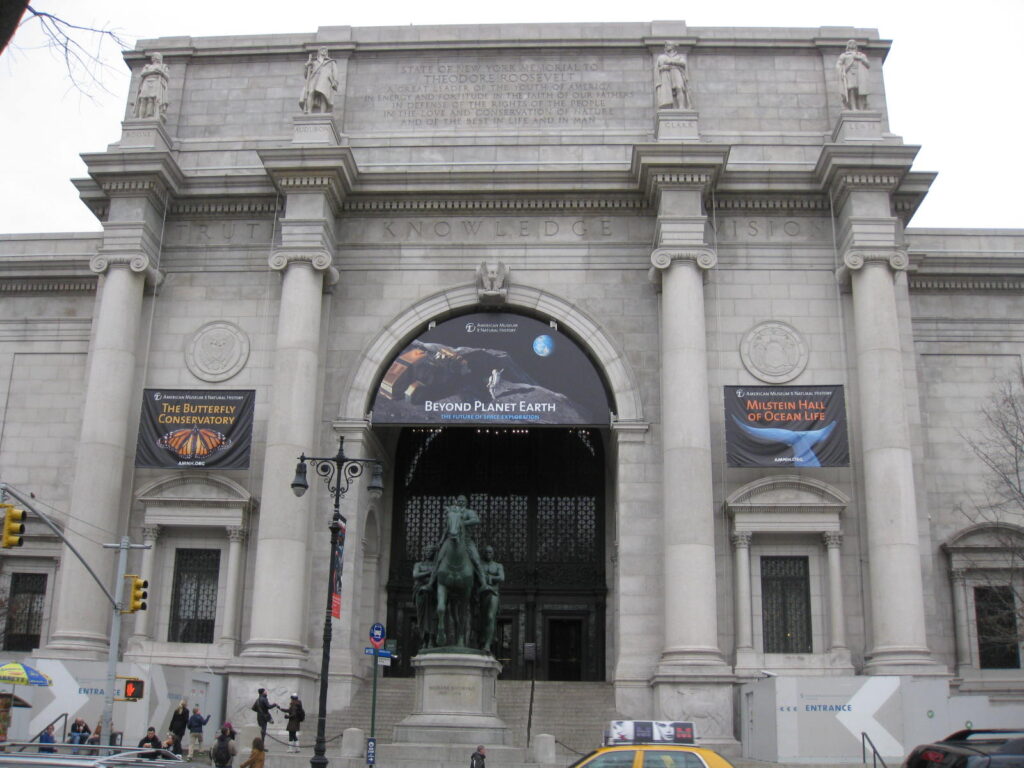
The AMNH did have helpful information about climate change in the geology section of the museum. I took digital images of their information on recent significant volcanic eruptions and ice core sample information that I was able to use in future climate change talks. Even more, the AMNH was right across the street from Central Park in Manhattan. Thus, I had fun touring around upper Manhattan for a day that I never would have realized I would do from a year earlier working at the Climate Change Exhibit at the St. Louis Science Center.
The long term positive impacts for me of working at this Climate Change Exhibit
Although I was not able to obtain a long-term fulfilling successful career from working at this climate change exhibit in St. Louis, this exhibit led other life changing opportunities for me. In addition to this exhibit, the St. Louis Science Center held some public lectures in the winter and spring of 2011 so St. Louis area residents could learn more about climate change.
In April 2011, I attended a St. Louis Science Center lecture where the invited speaker was Jim Kramper, Warning Coordination Meteorologist with National Weather Service. He spoke on “Climate Change – What We Really Know.” At that event, I met Larry Lazar, a local St. Louis area businessman. Over the past few years, Larry read a lot of scientific articles on climate change. He became very worried and interested in this subject to attend that lecture. Larry and I struck up a conversation with our mutual interest in climate change after that lecture.
That summer, I returned to work at Crater Lake National Park, but Larry and I stayed in touch. In October 2011, when I had returned to St. Louis for the winter, Larry and I started meeting for coffee once a week. We would meet very early in the morning before he would drive to work. One morning in late October at Starbucks, Larry announces to me “Brian, I am thinking about creating a climate change meet up group. Would you be interested in joining me?”
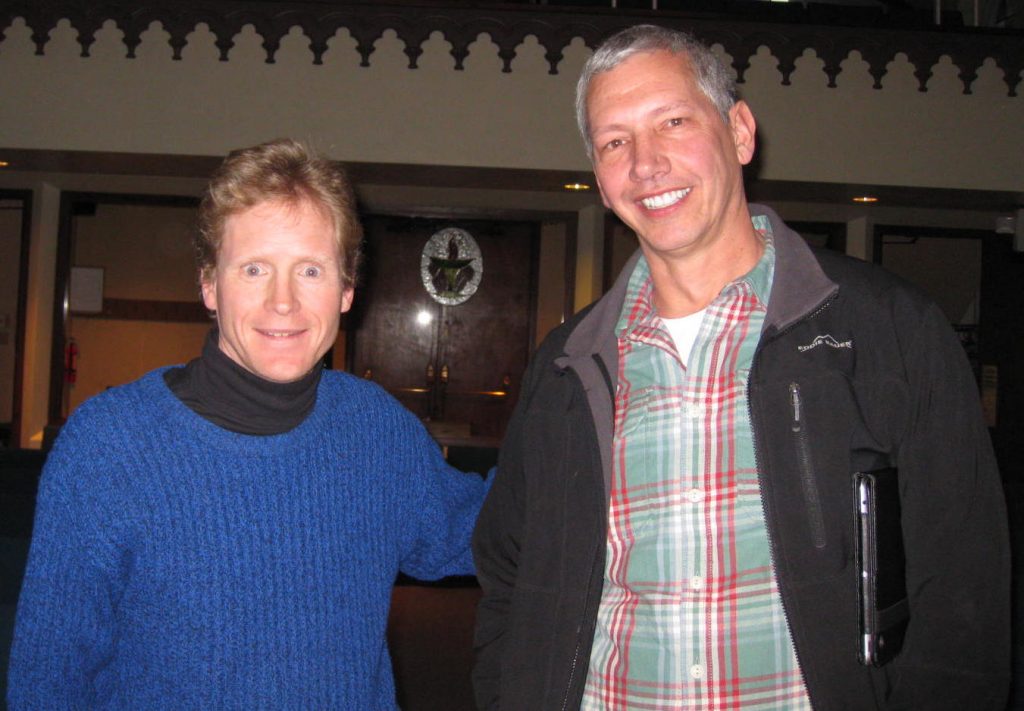
That winter, Larry and I co-founded the meet up group, Climate Reality St. Louis. (Currently this group is called Climate MeetUp-St. Louis). Our group focus was to exchange ideas on how we can locally and individually reduce our impact on climate change. We had 14 people at our first meeting December 11, 2011. This was such a productive relationship with Larry that he ended up as the Best Man when I got married to my wife Tanya on November 1, 2015.
Larry and I organized Climate Reality Meet Up events in St. Louis up until January 2017. We packed a room of over 80 people for our last event. We probably would have organized more events, but Tanya and I moved to Portland Oregon in February 2017. Who knows if I would have ever met Larry if I had not worked at the Climate Change exhibit at the St. Louis Science Center.
Even more, I met my wife Tanya through The Climate Reality Meet Up that Larry and I co-founded. Tanya attended our meetings from January 2012. As one of the hosts, I struck up a conversation with her and we started dating over a year later. Hence, I thank Larry for being an accidental matchmaker. Who knows if I would have ever met Tanya if I had not worked at the Climate Exhibit at the St. Louis Science Center.
Finally, one of the guest speakers who came to our Climate Reality Meetup group during the winter of 2012 was Carol Braford. Back then, Carol was the St. Louis group leader with Citizens Climate Lobby (CCL). Carol is still active to this day with CCL as the Midwest or “Tornadoes” Regional Coordinator. During the winter of 2012 at Climate Reality Meet Ups, Carol Braford was the very persistent with me that I should come to a monthly Citizens Climate Lobby conference call. I even blogged about Carol in January 2013, Want to change the world? Be Persistent!
I attended a CCL meeting at Carol’s home in April 2012 and immediately became hooked on CCL. I was very involved with CCL for over 10 years. In January 2013, I co-founded the southern Oregon CCL chapter that meets in Ashland, Oregon. I ended up going to 8 CCL Lobby Day conferences in Washington D.C. from 2015-2019 to lobby Congressional offices for climate action. I was even was a breakout speaker for some of their conferences. Tanya and I traveled to Ottawa, Canada to attend the CCL Canada Conference in November 2016, where they invited me to be a breakout speaker. I ended up leading two speaking tours across Missouri for CCL in 2017 and 2018. On top of that, I led a speaking tour across Oregon for CCL in 2017.
No, working at the Climate Change exhibit at the St. Louis Science Center in March to May 2011 did not lead to a long-term job organizing for climate action. I am still looking for that steady job in climate change organizing. However, I learned so much about climate change working at that exhibit. It gave me much needed confidence to speak and give presentations for climate action. Even more, working at that Climate Change exhibit in 2011 led to many rewarding opportunities and adventures, including finding my wife Tanya. For that, I will always be grateful.
